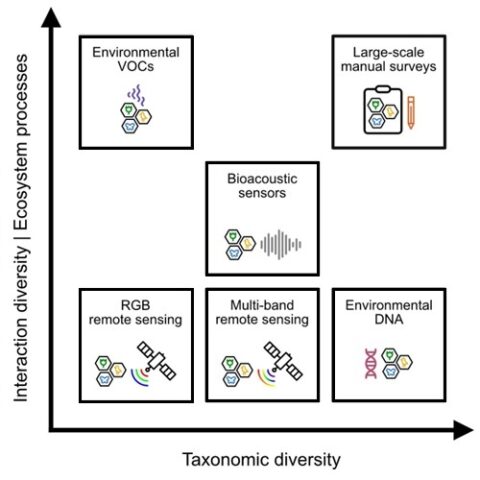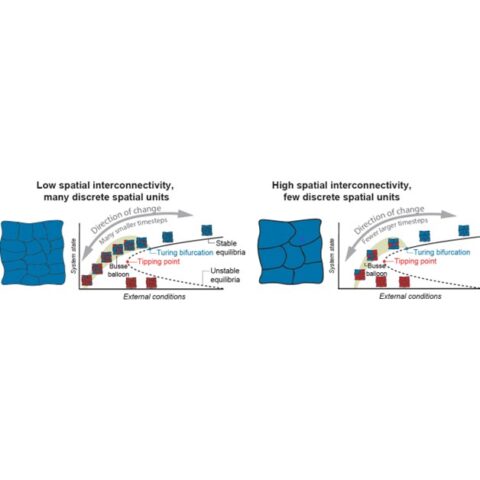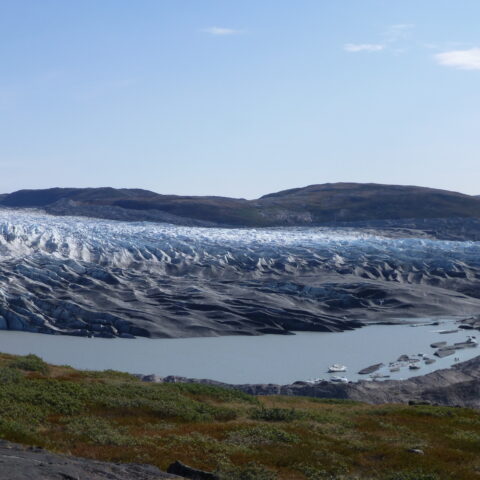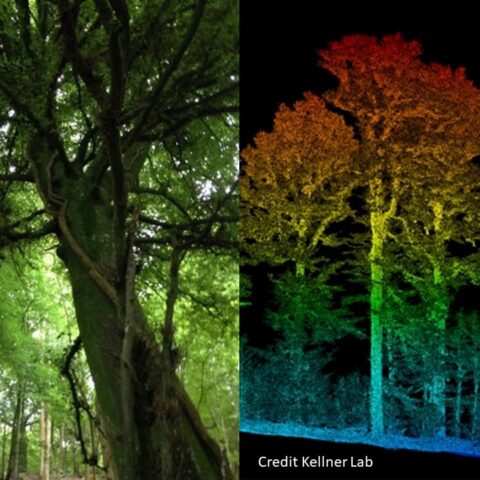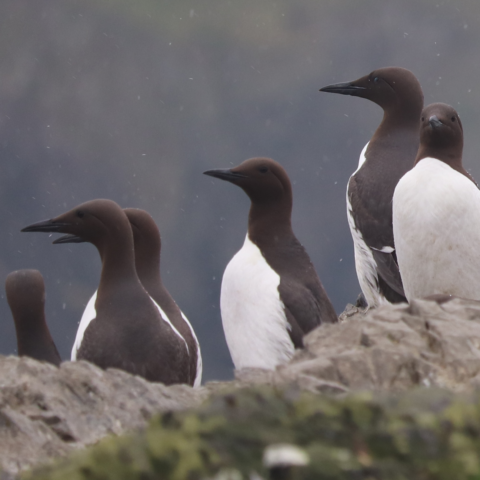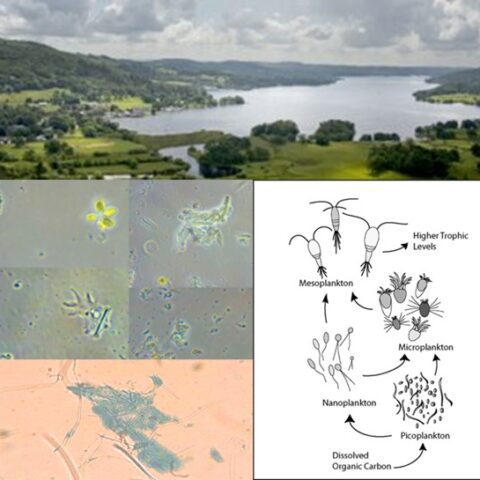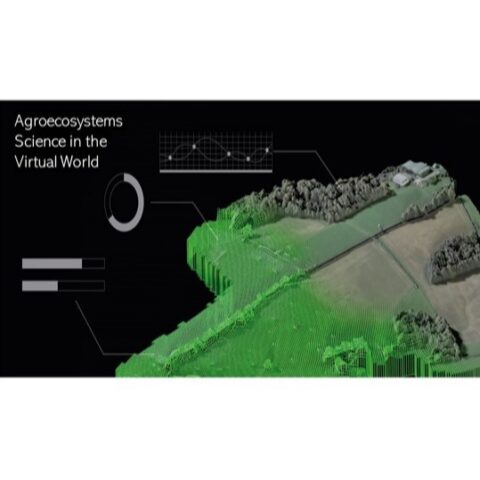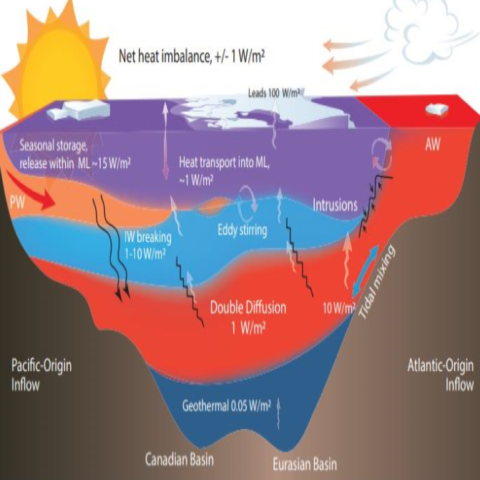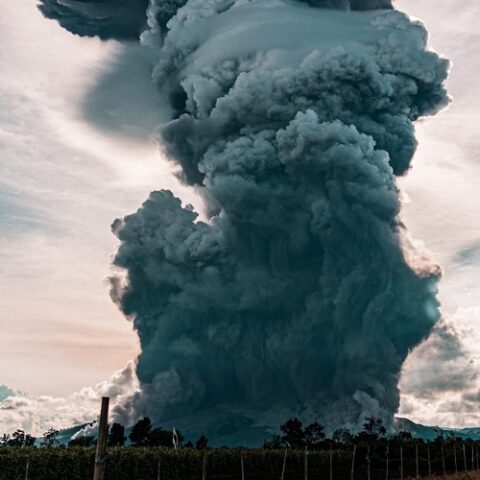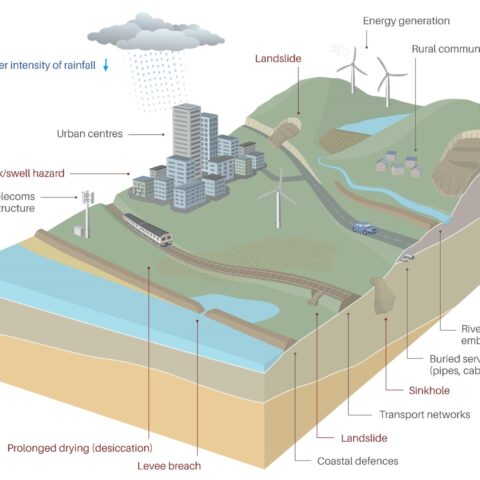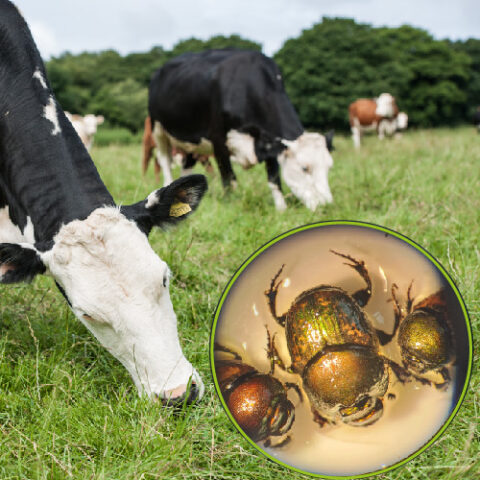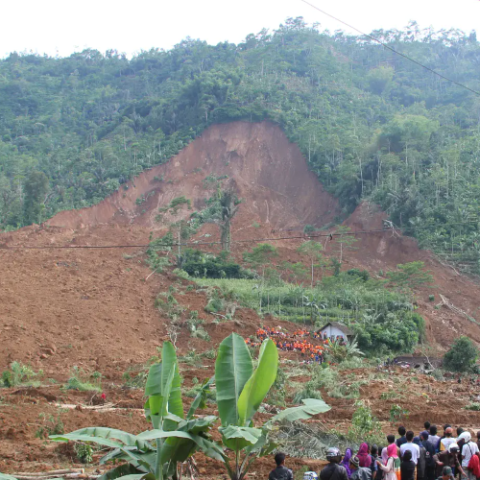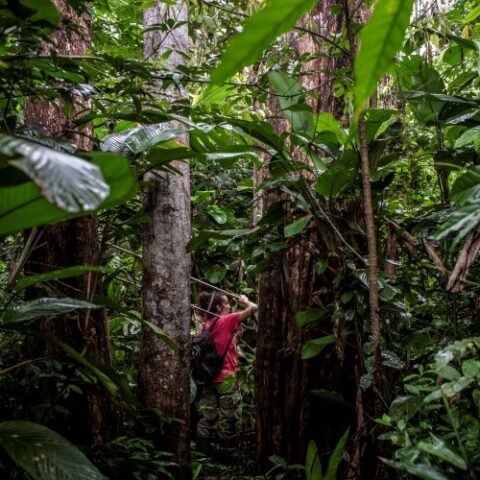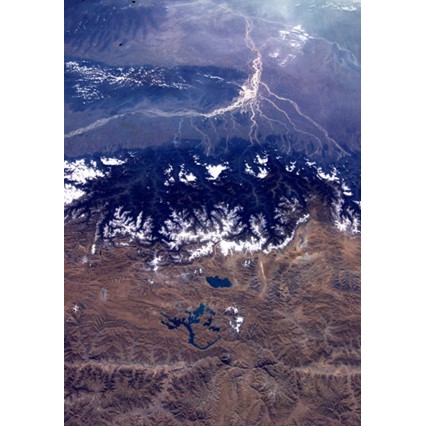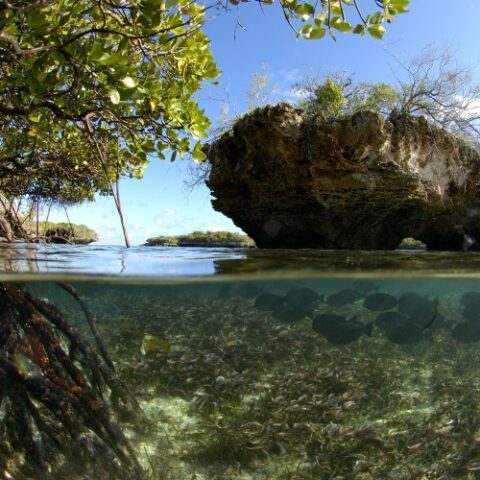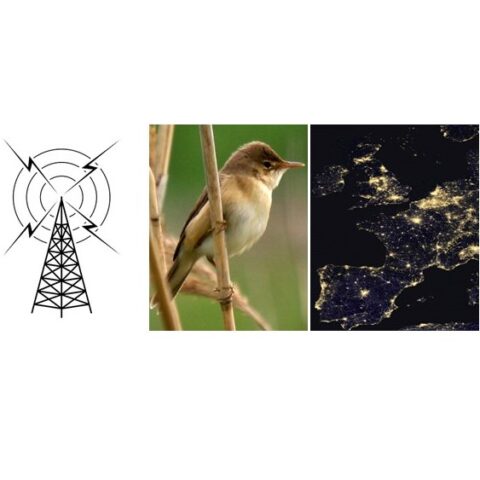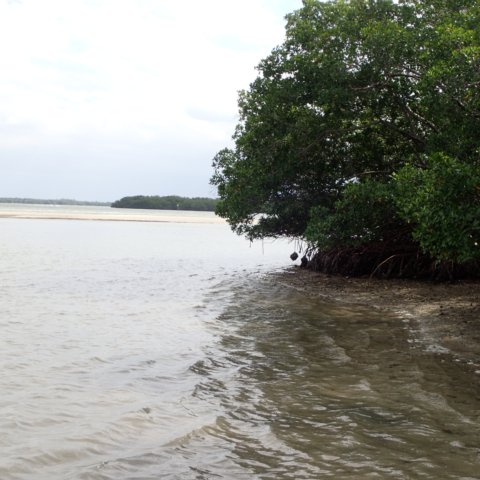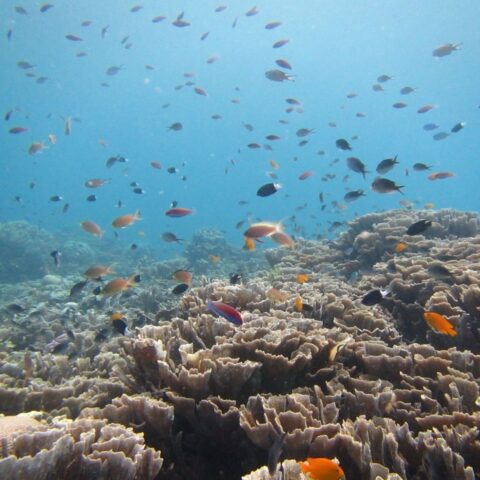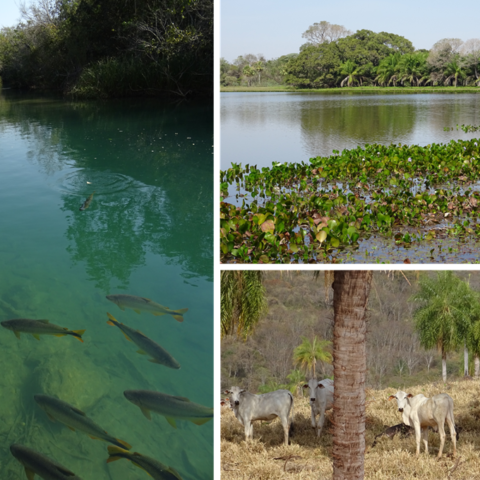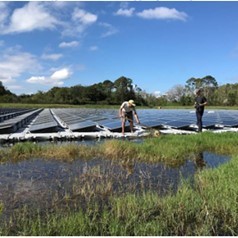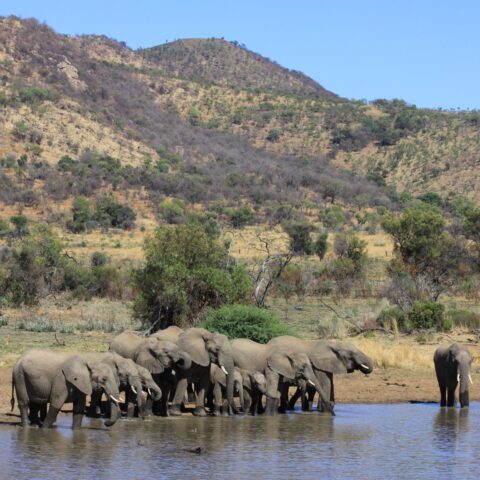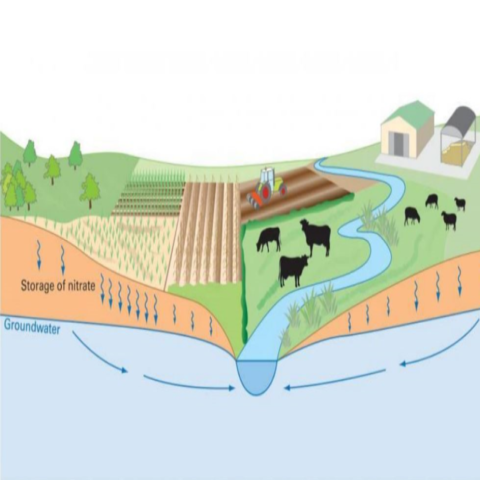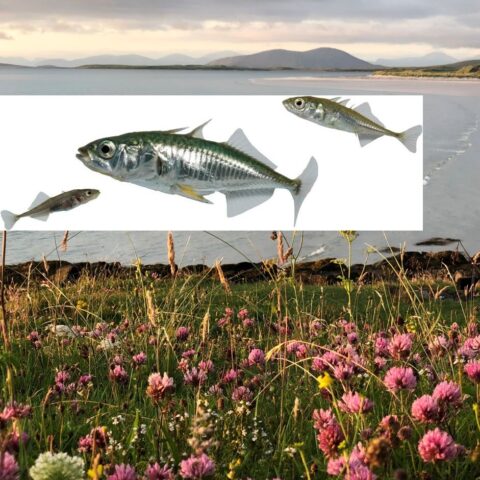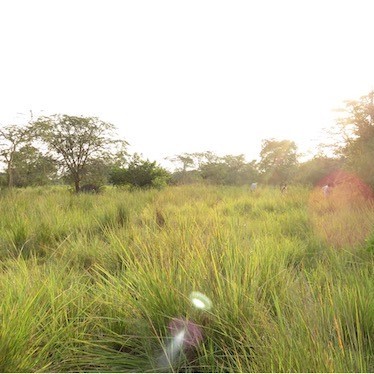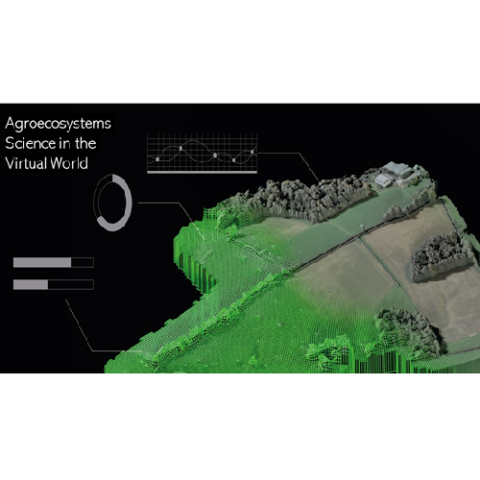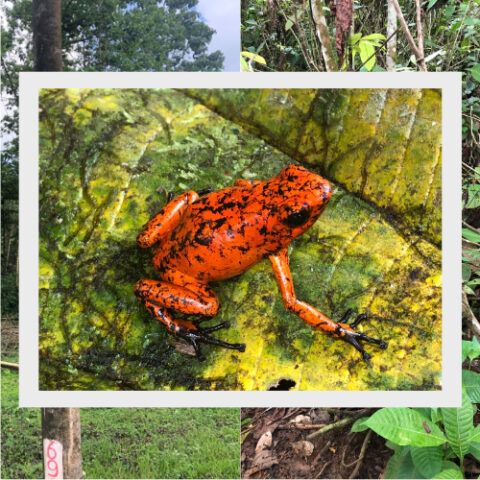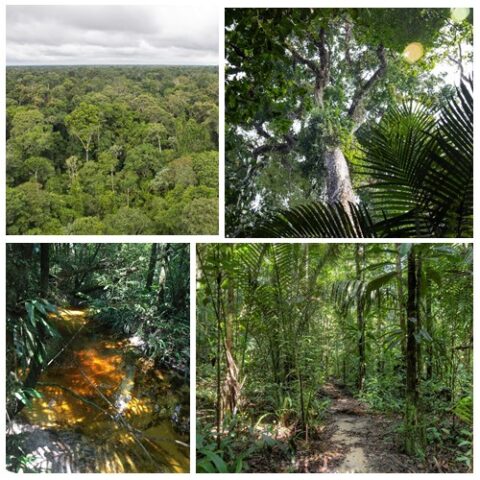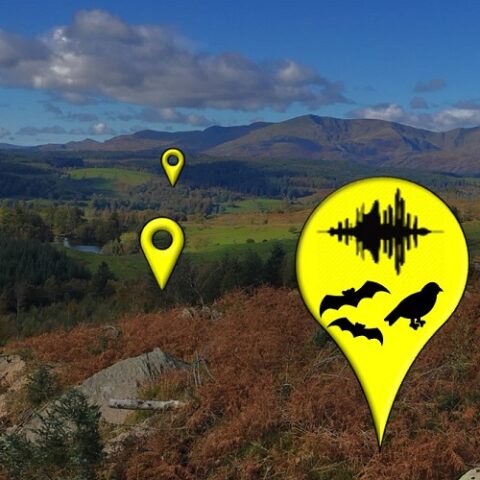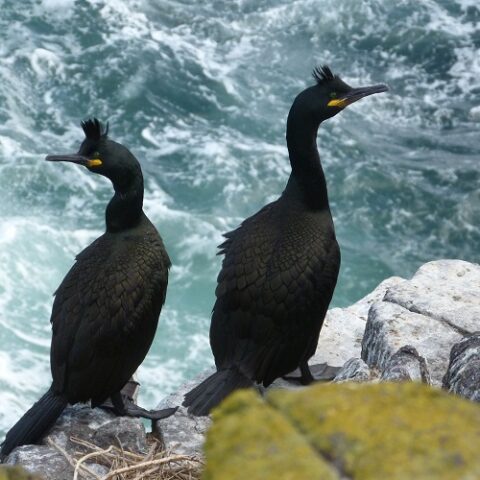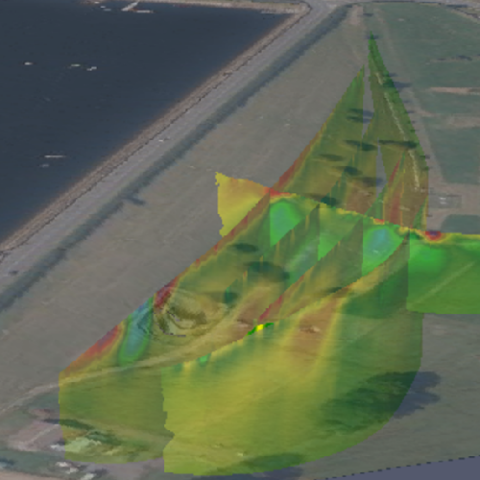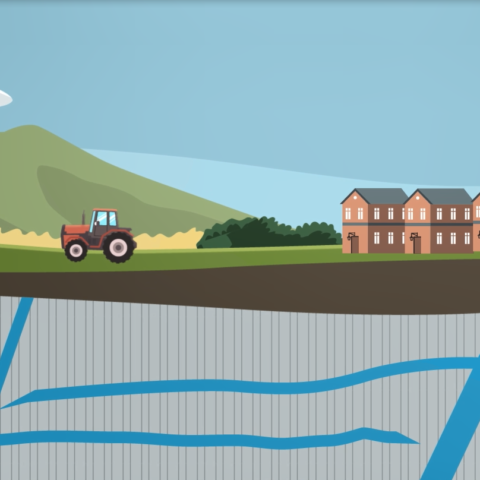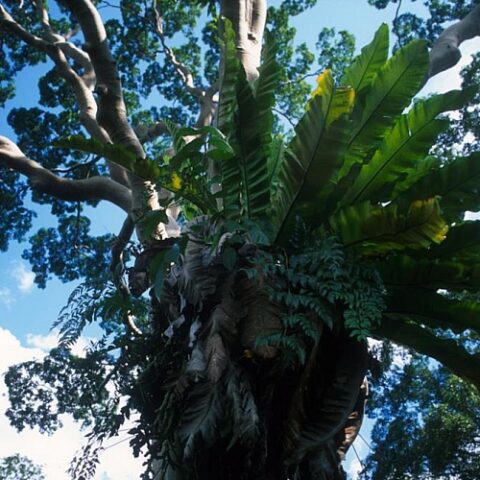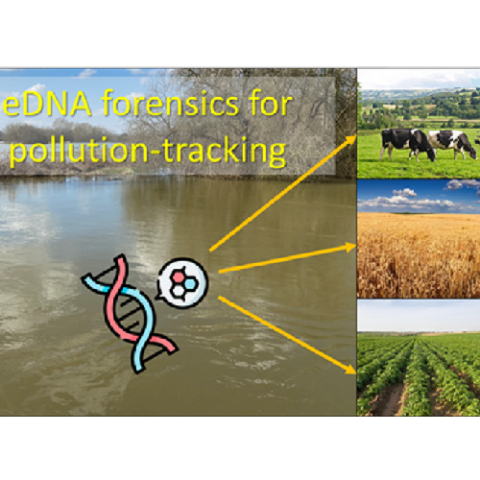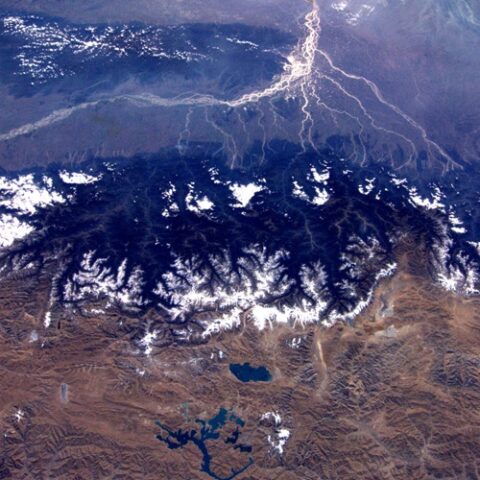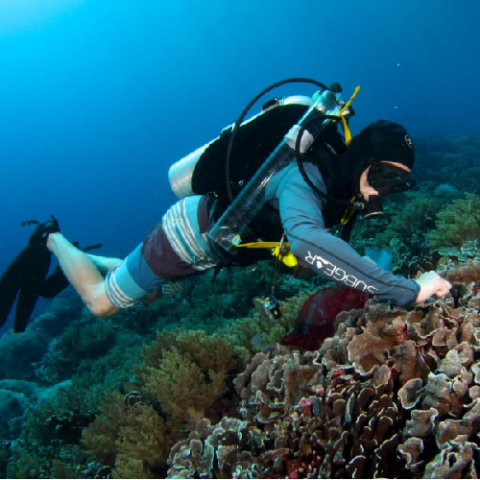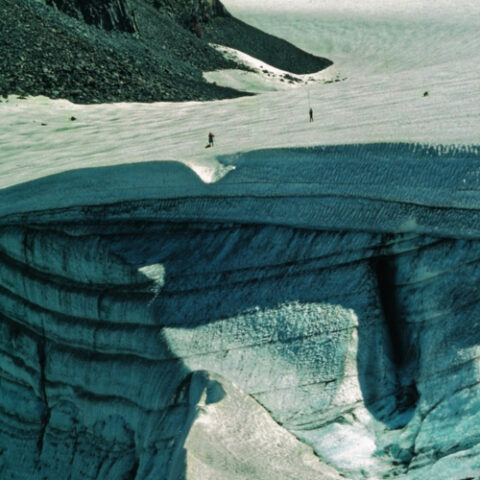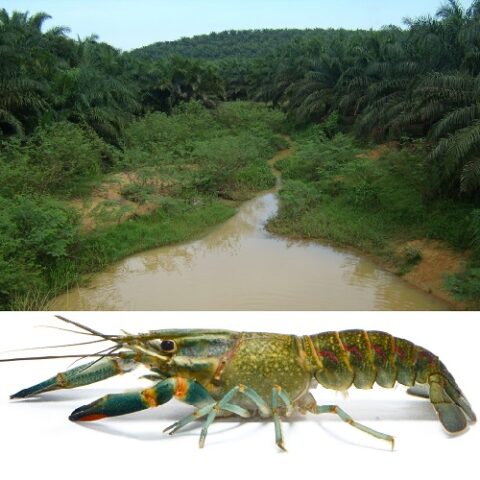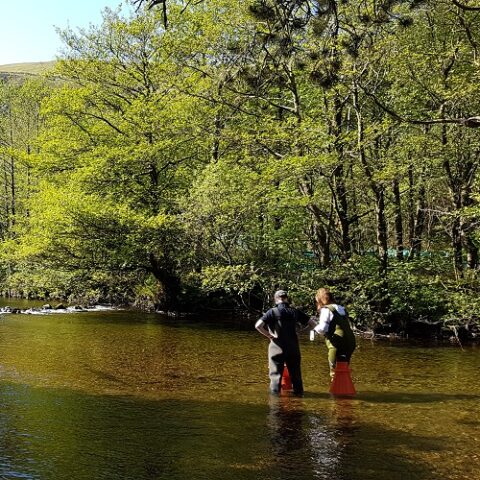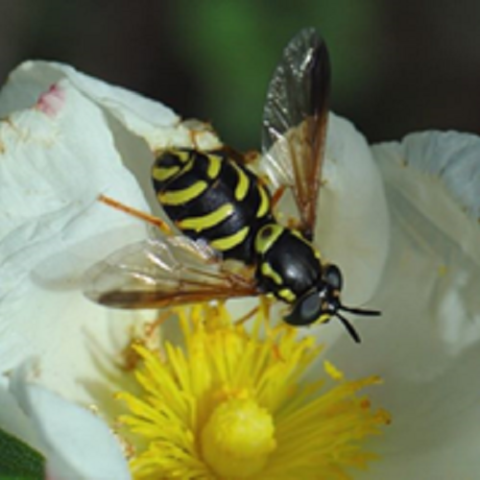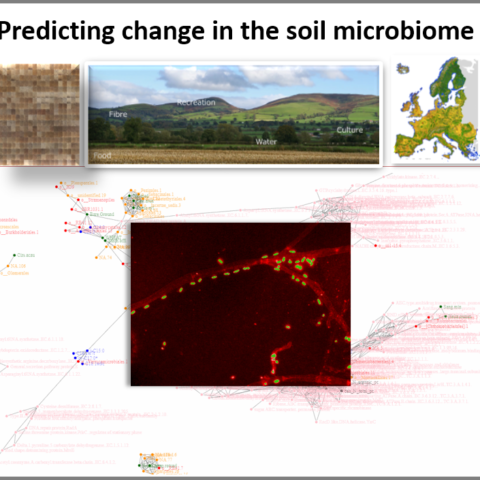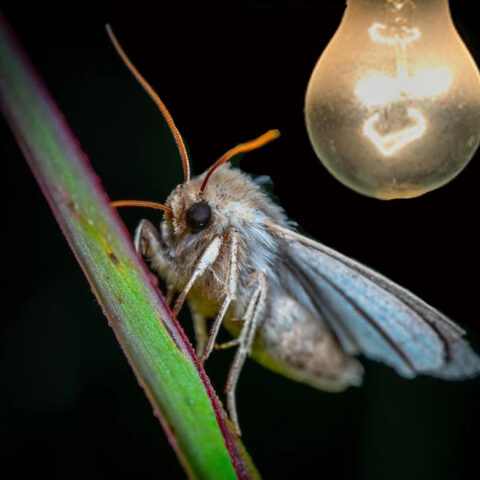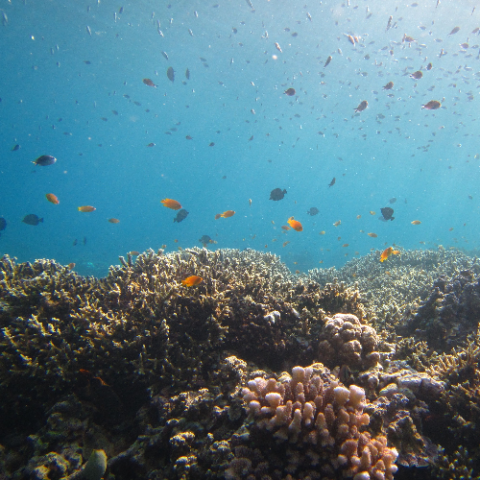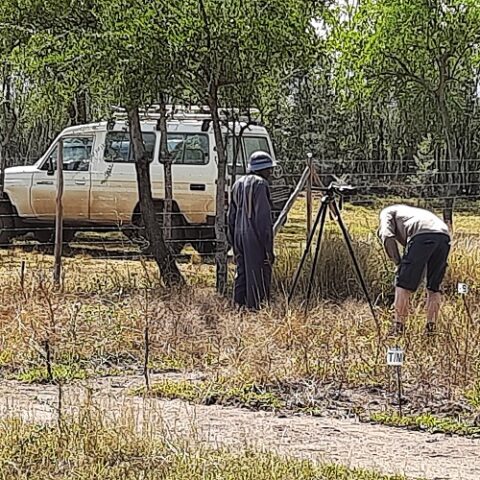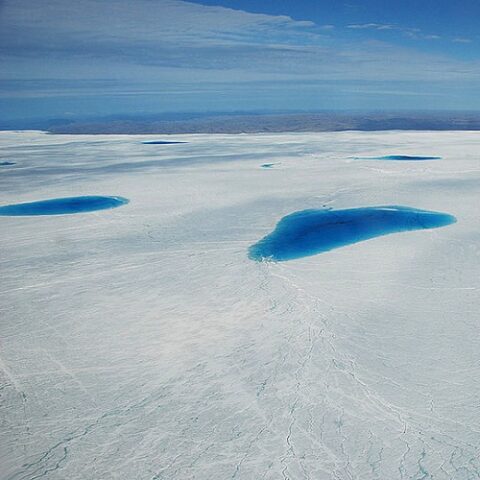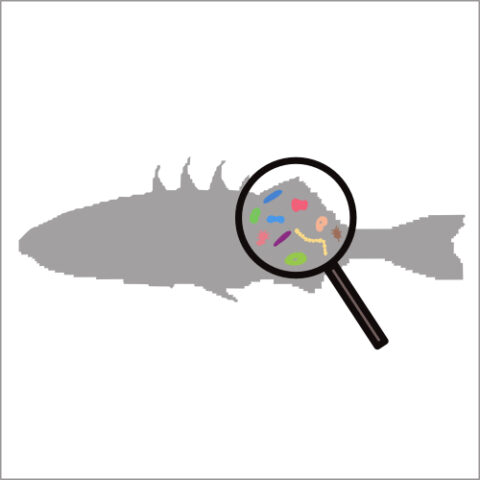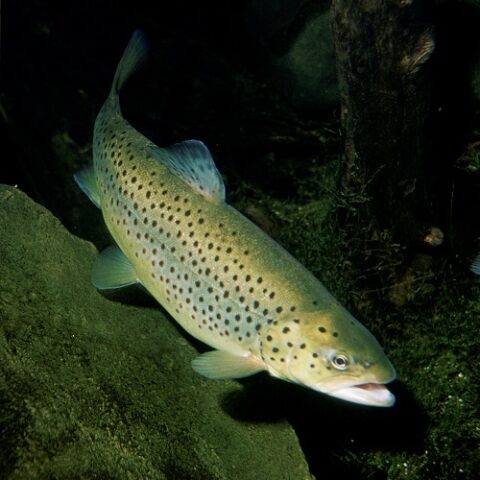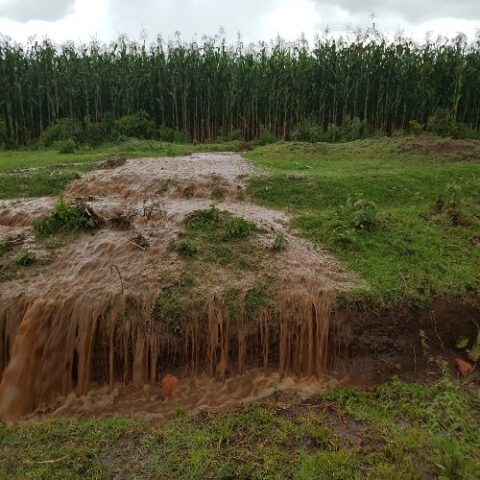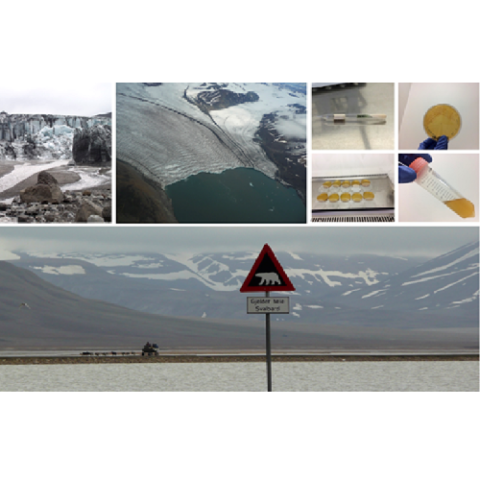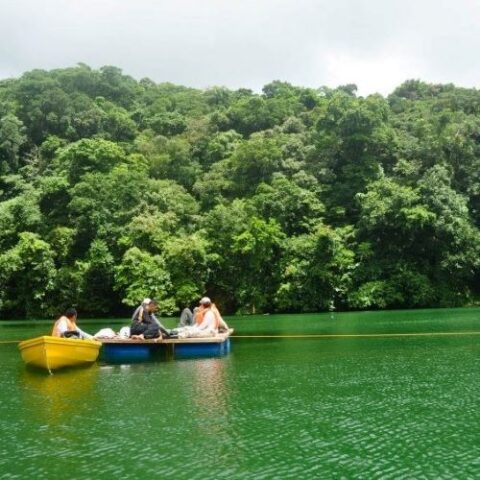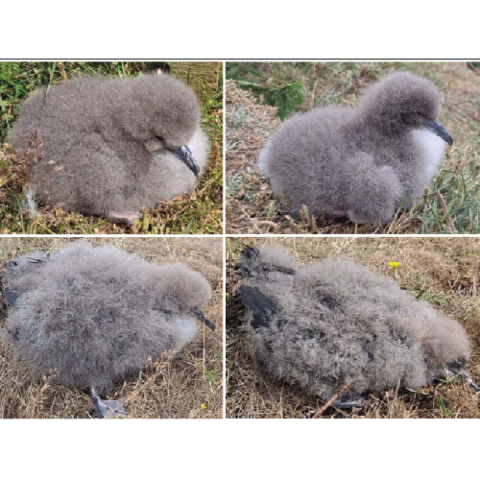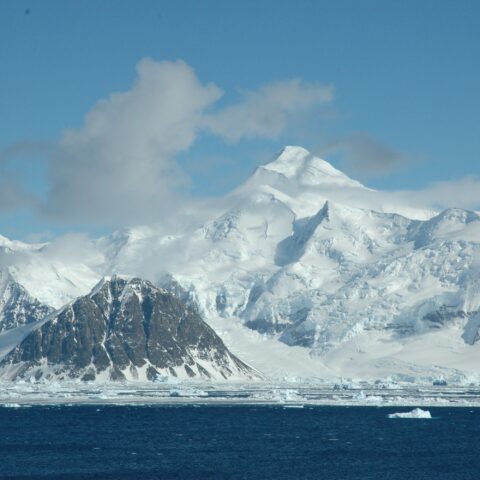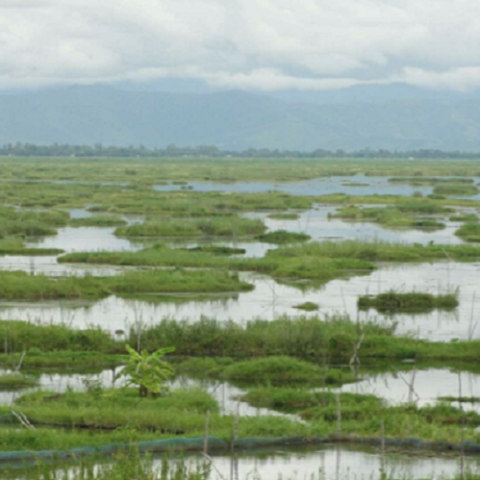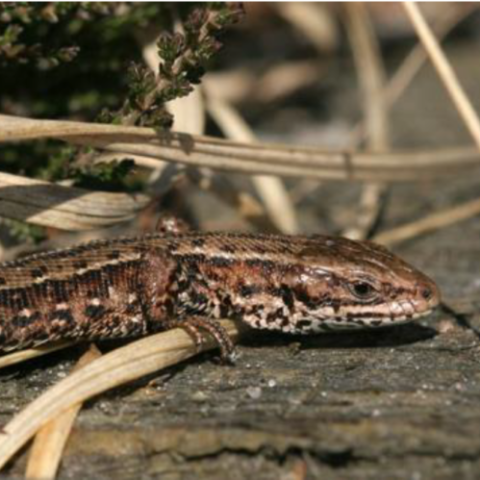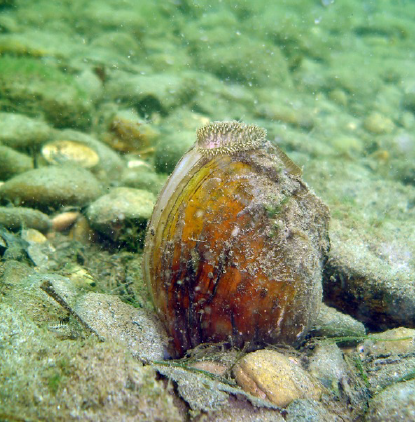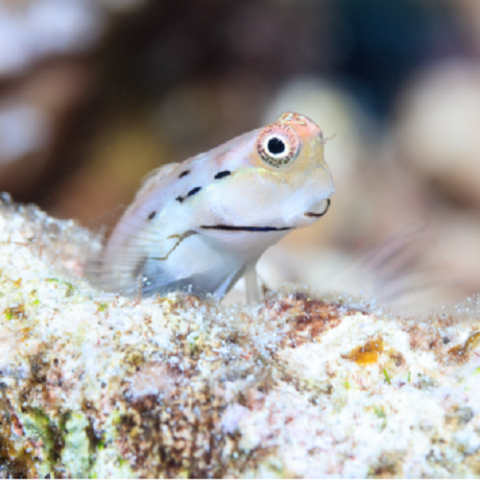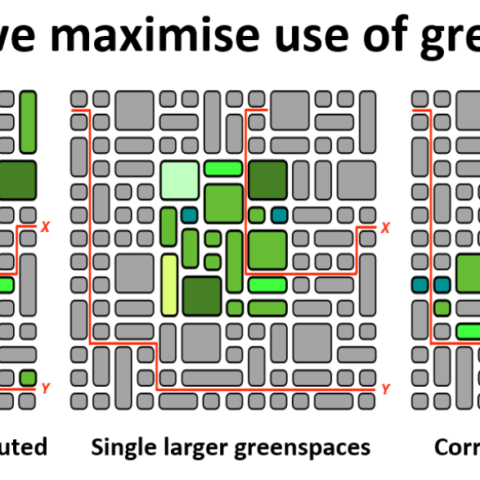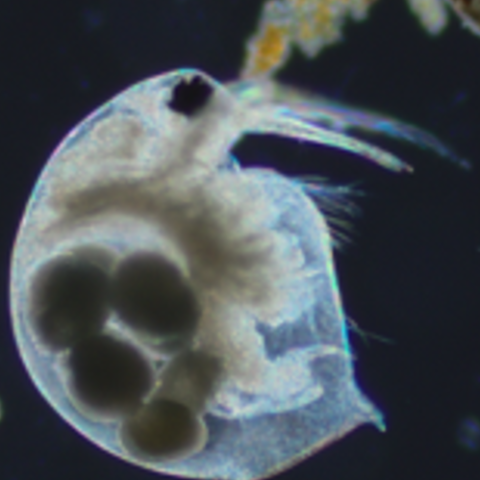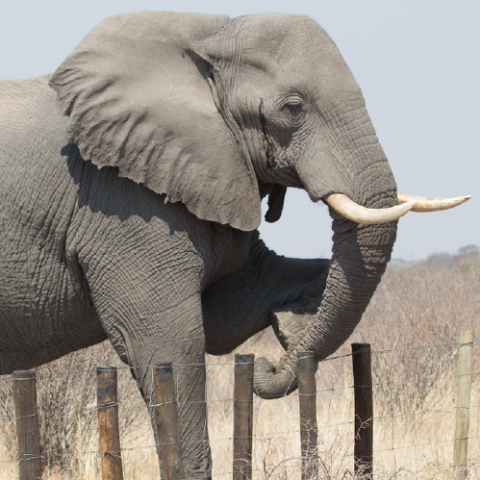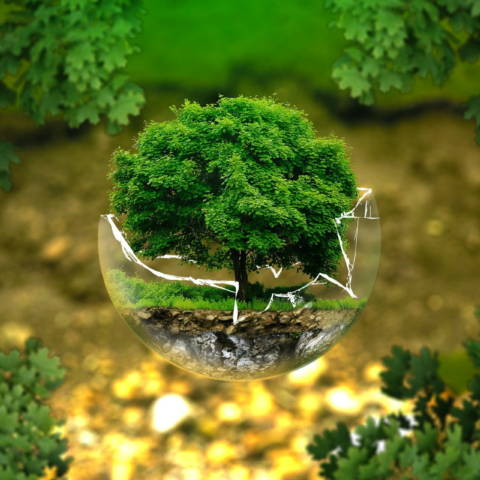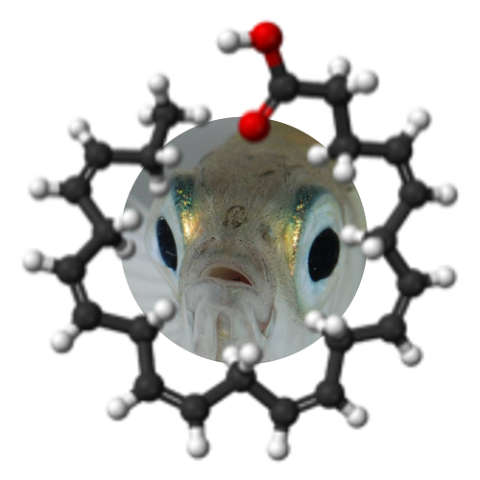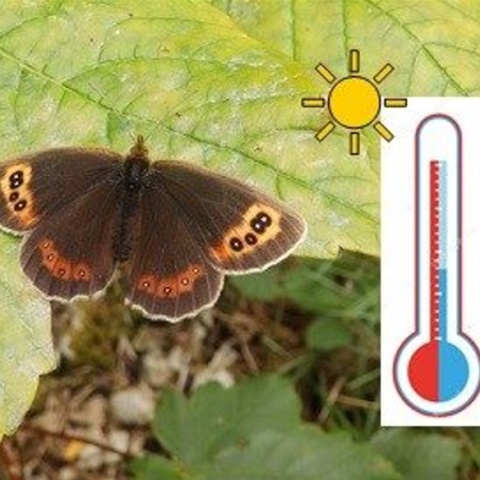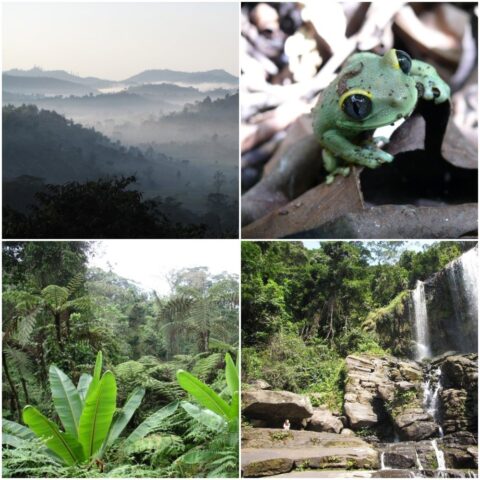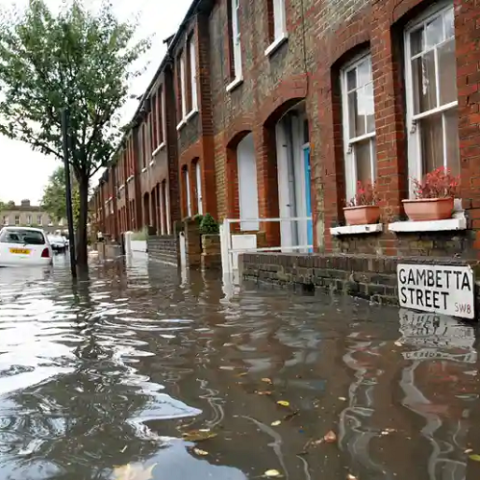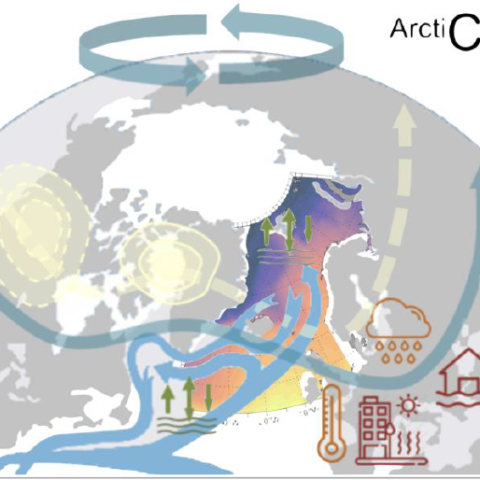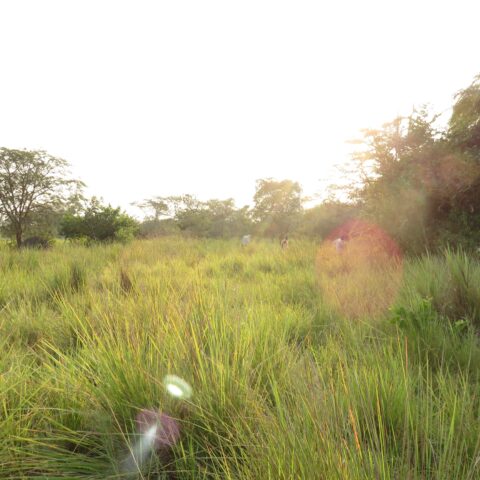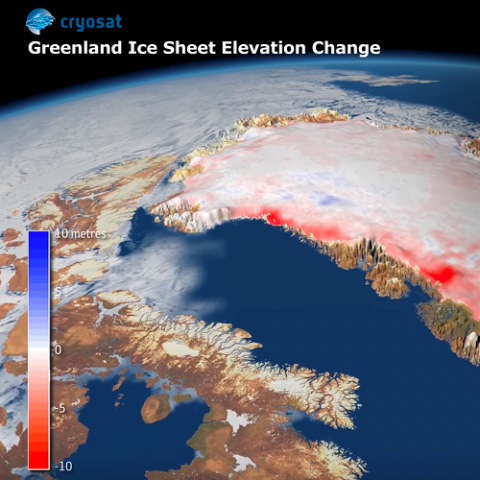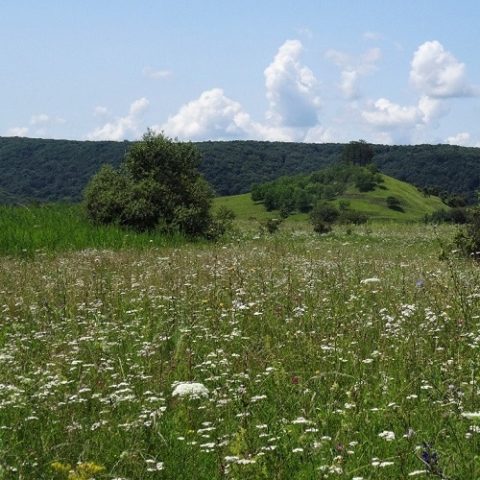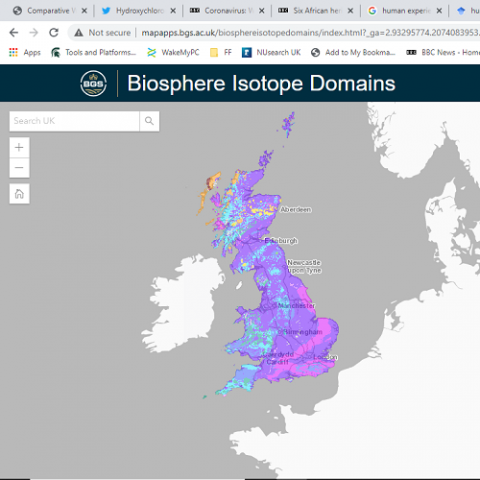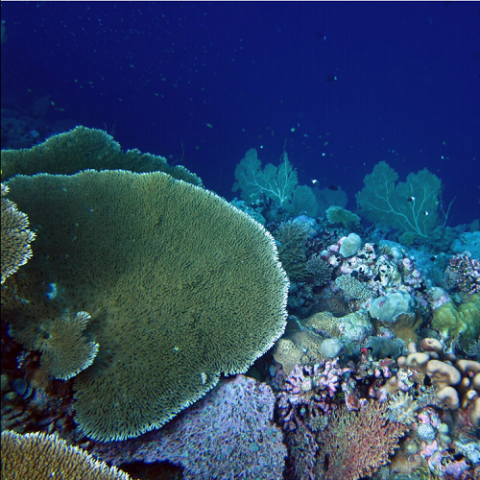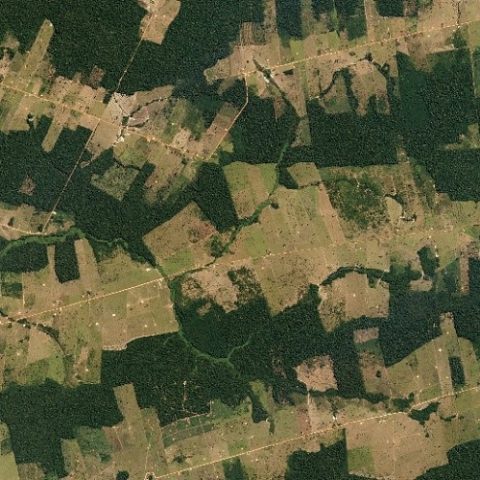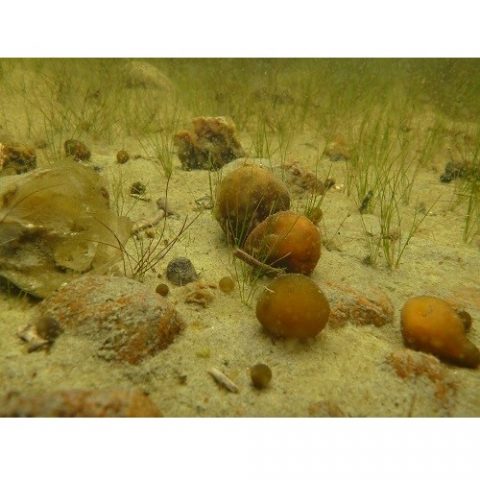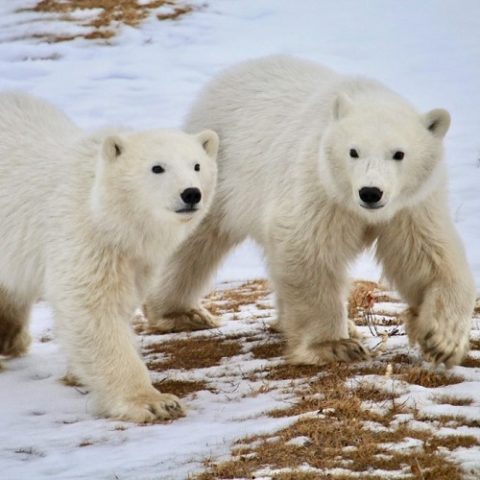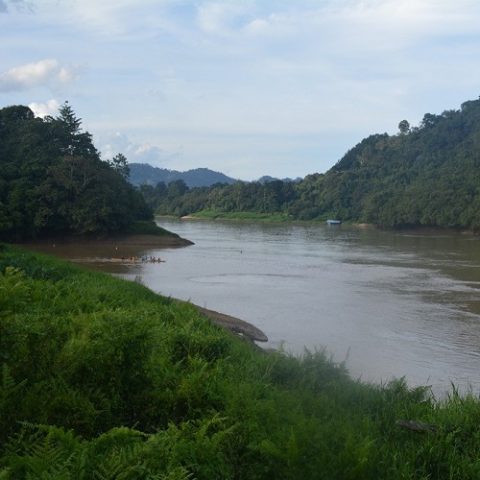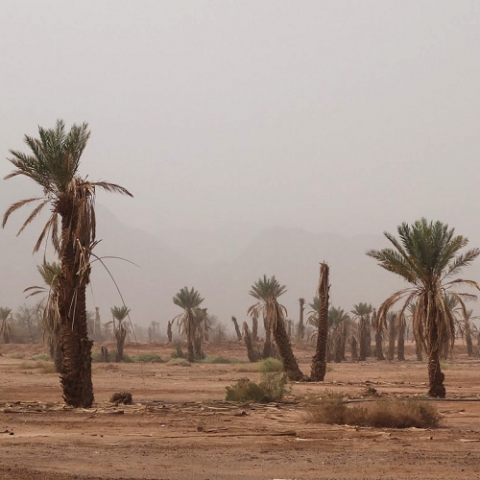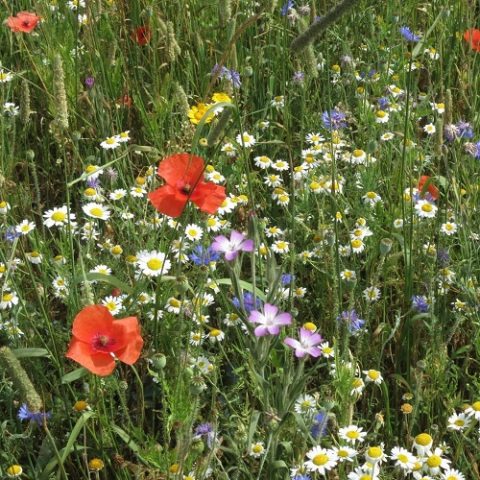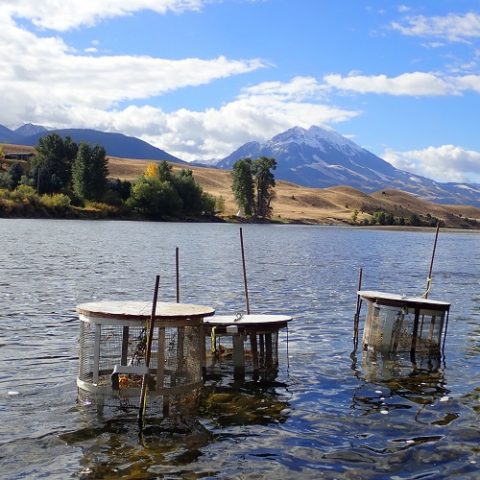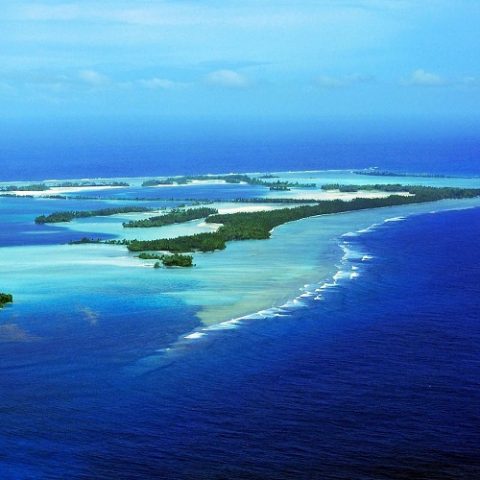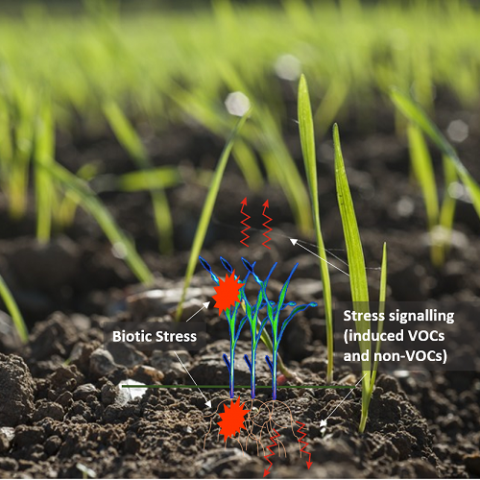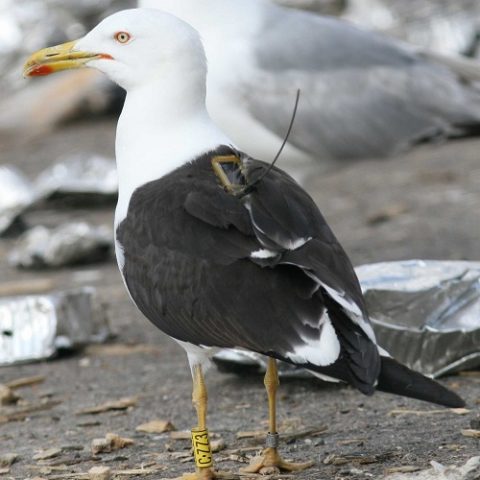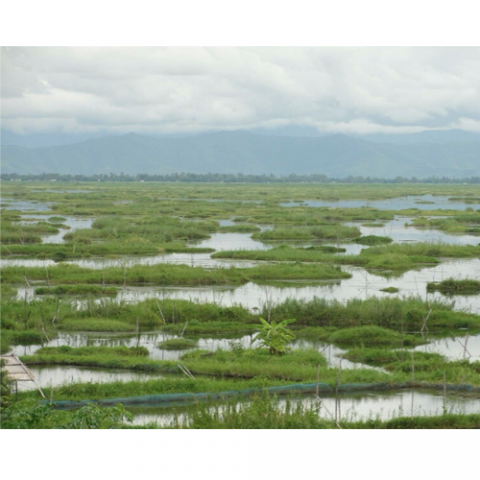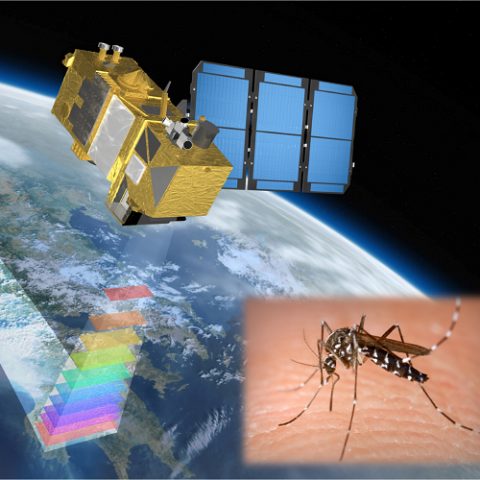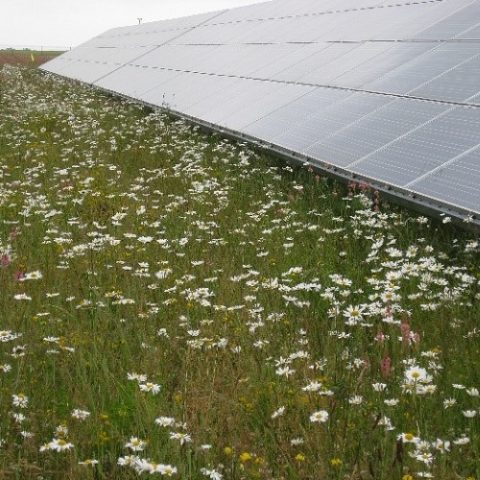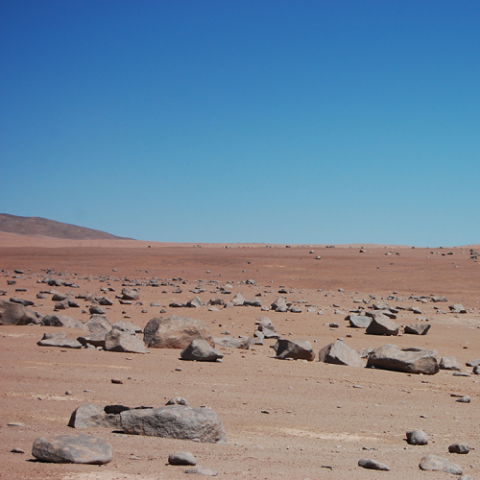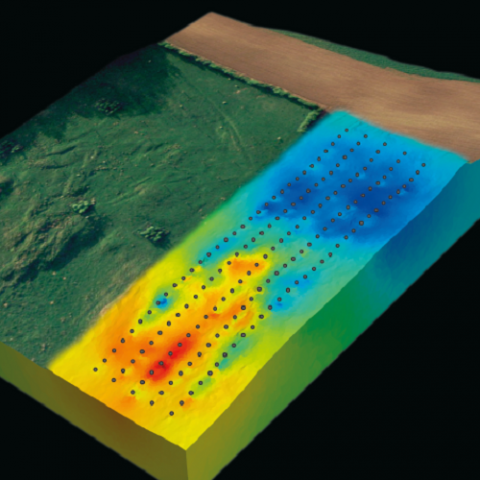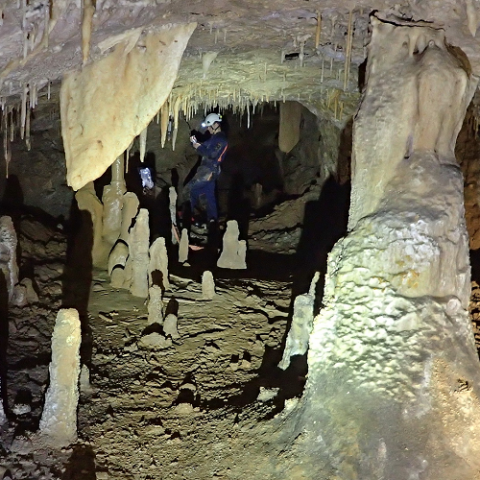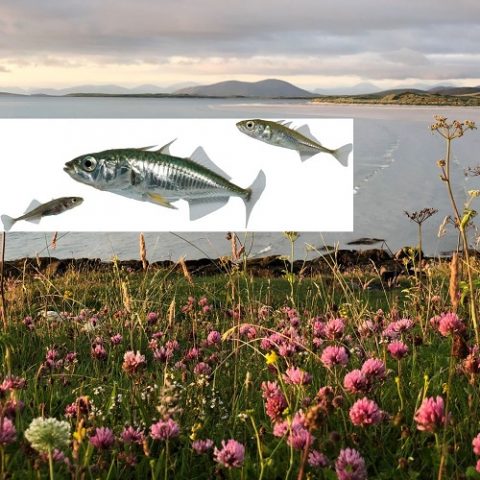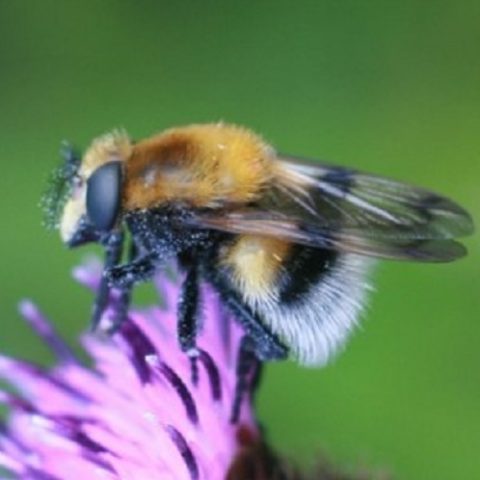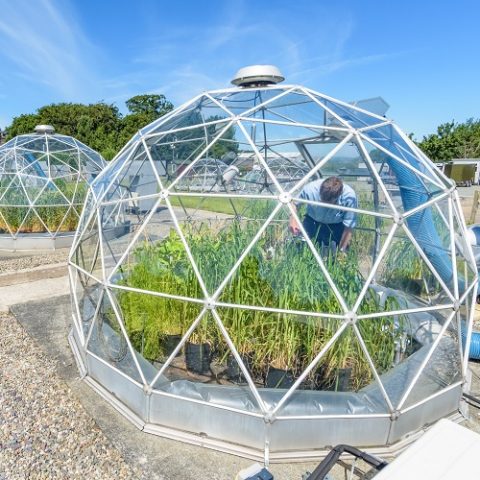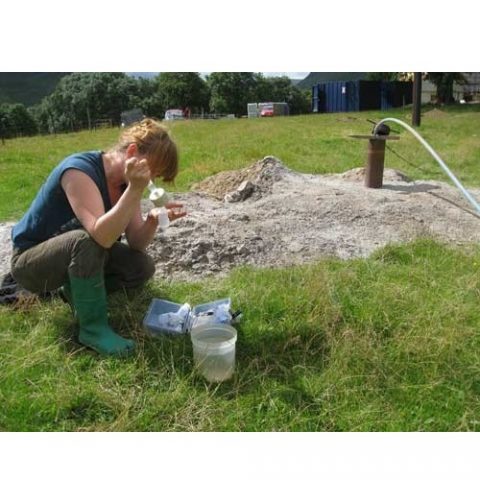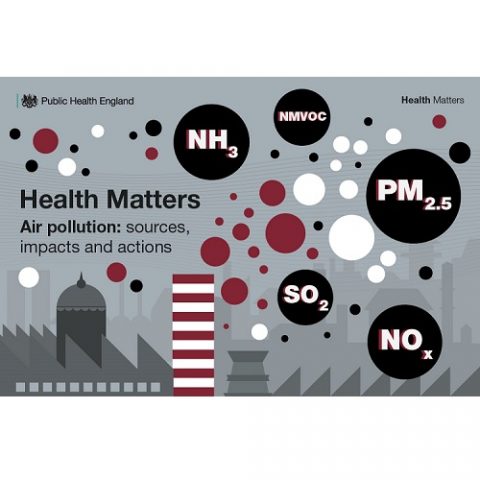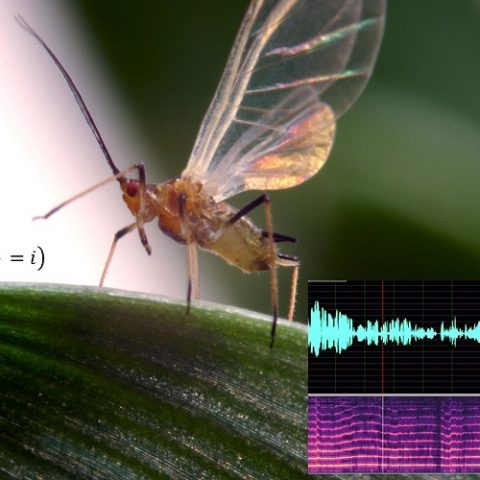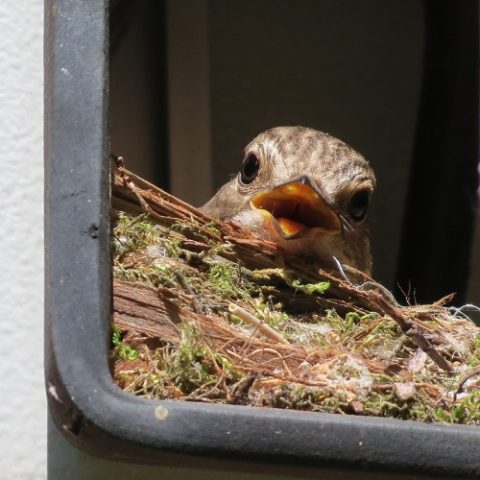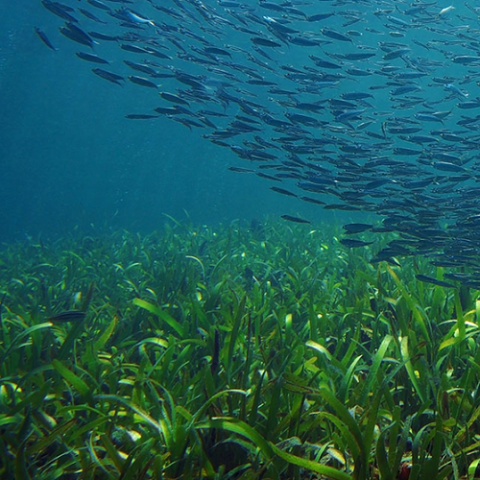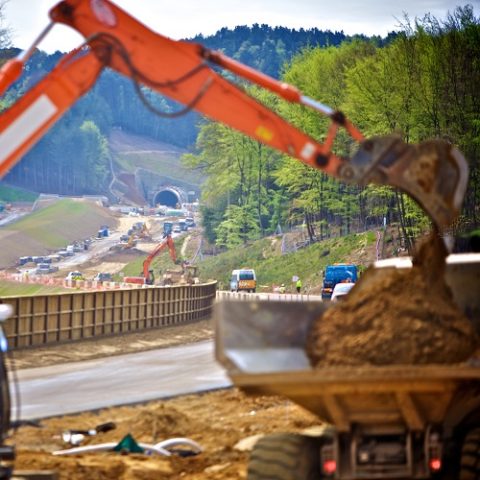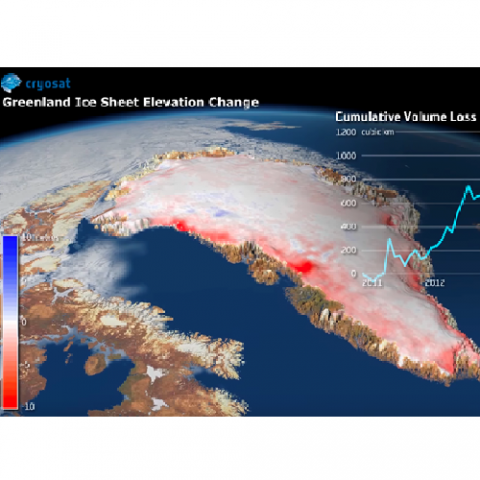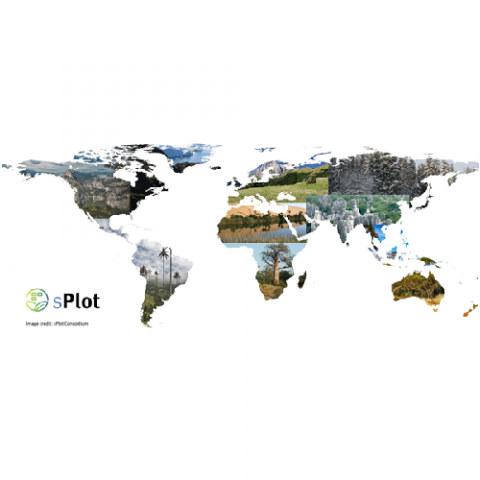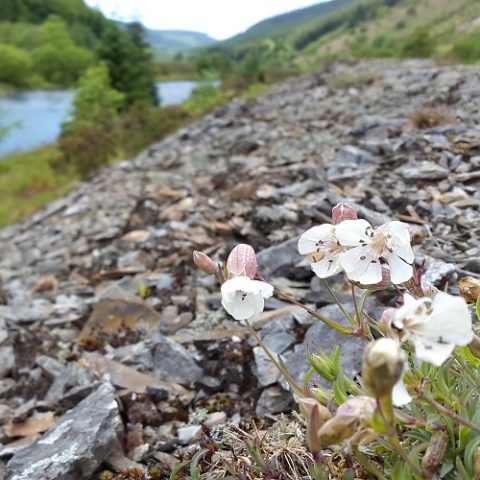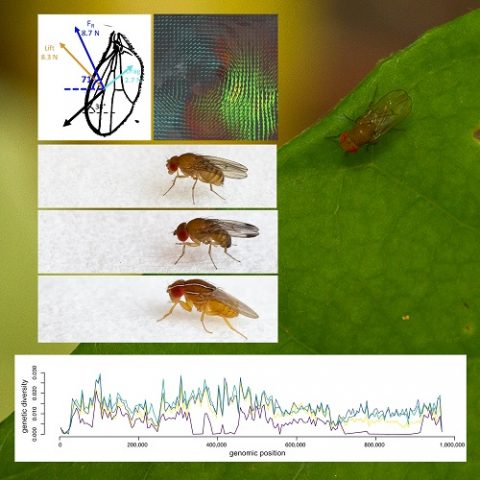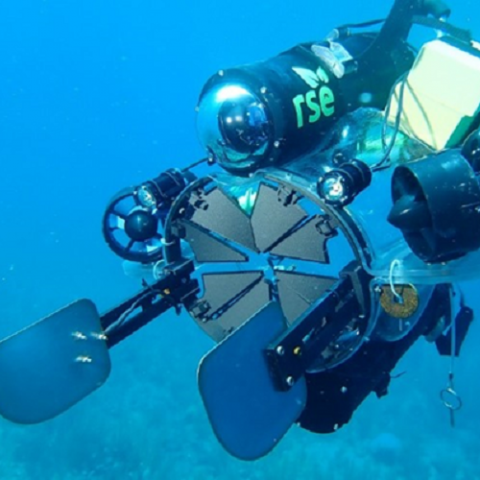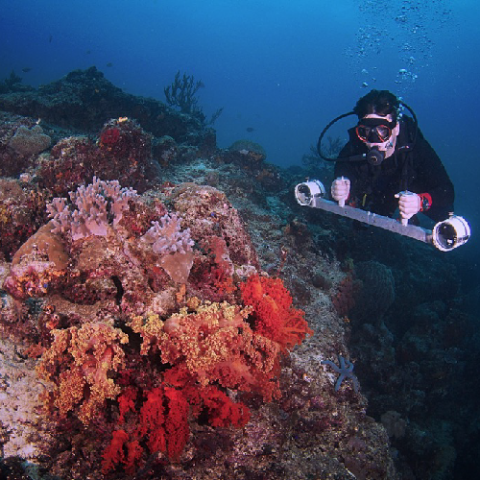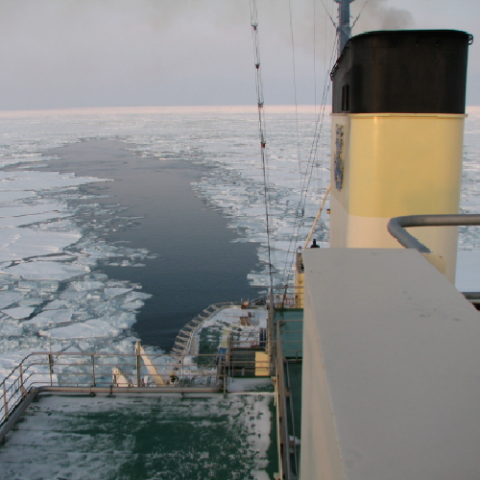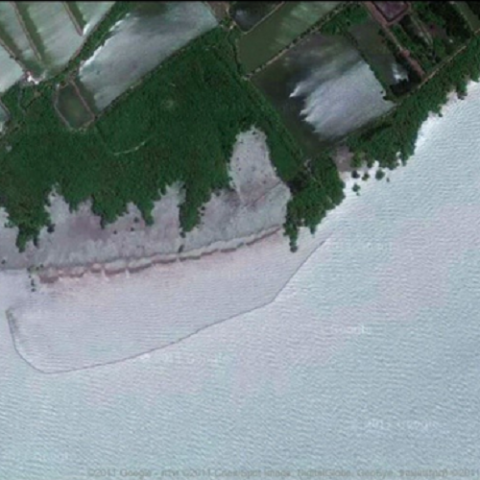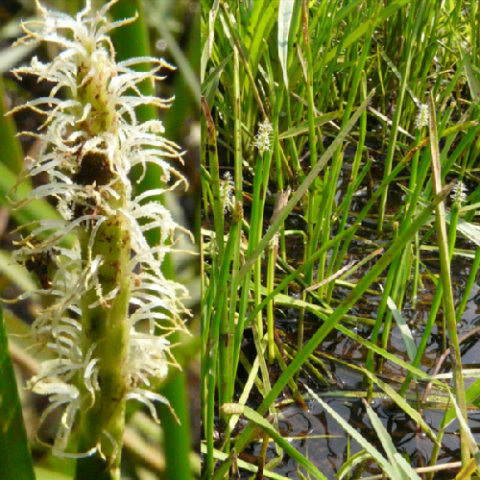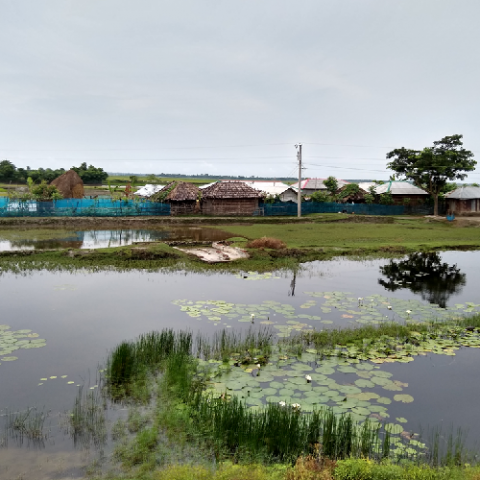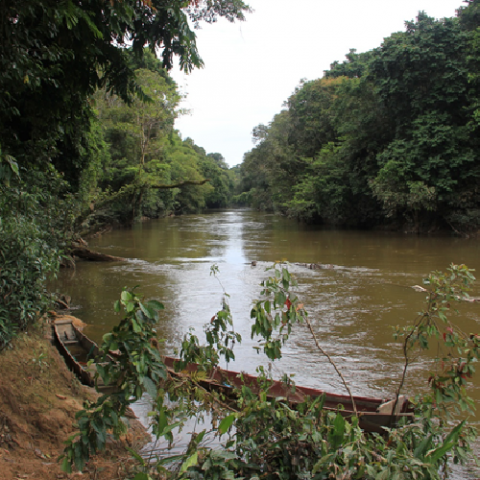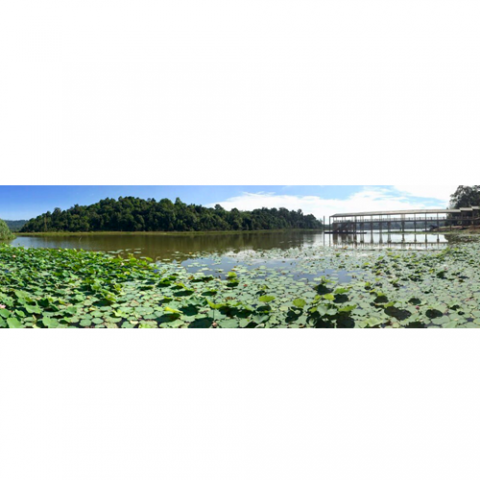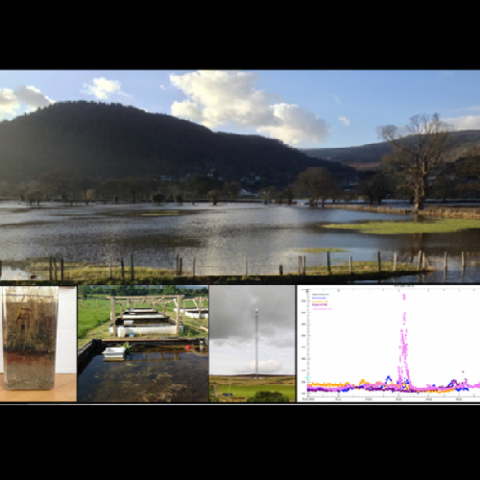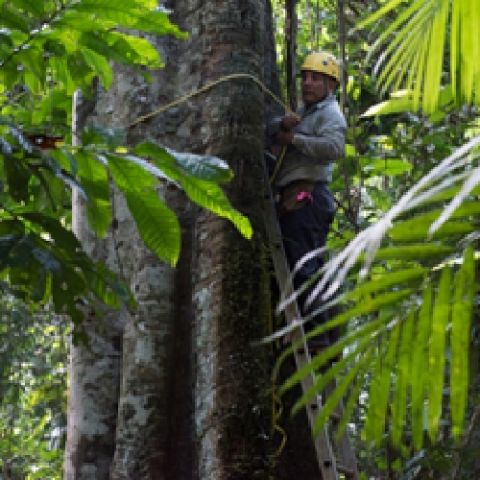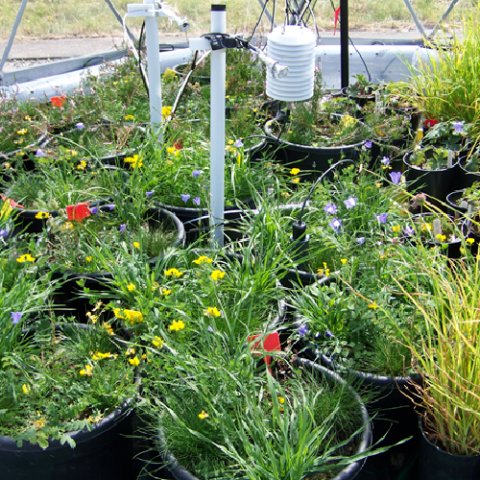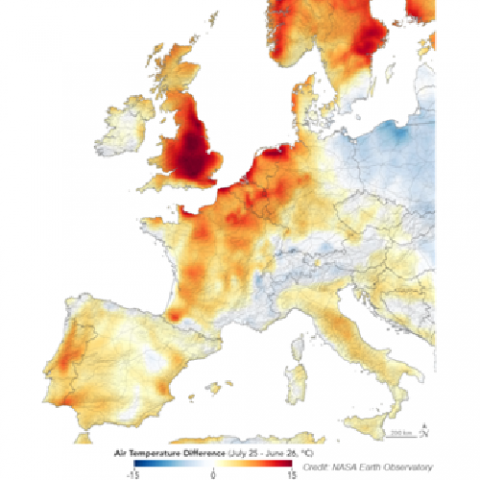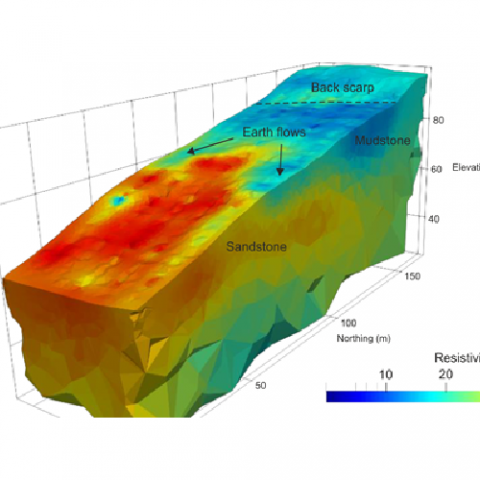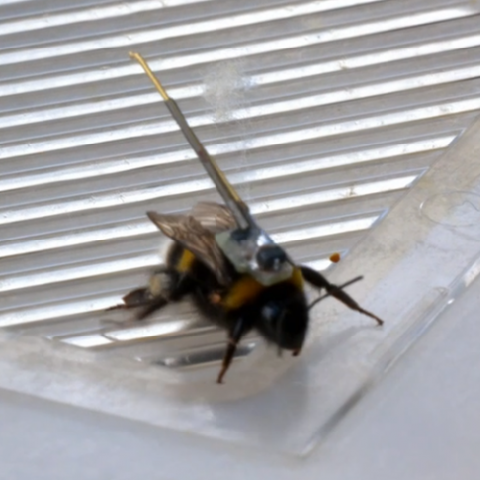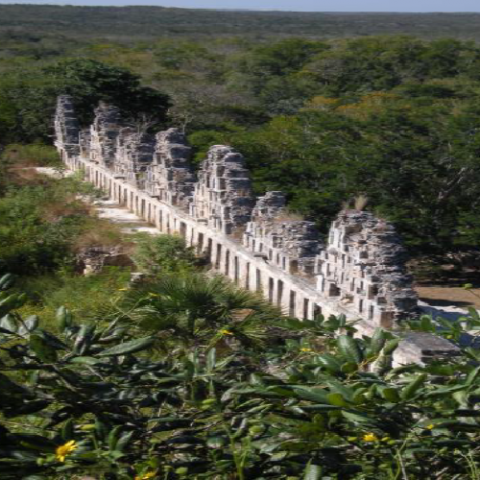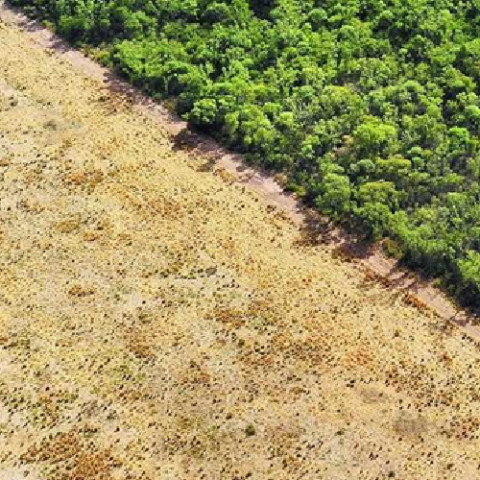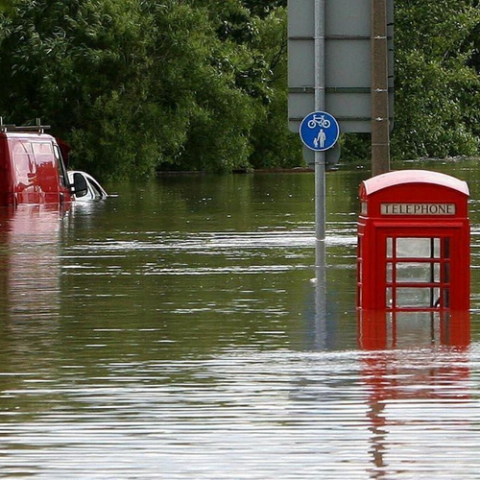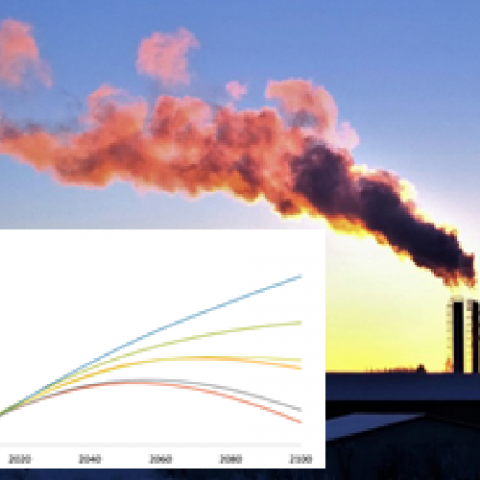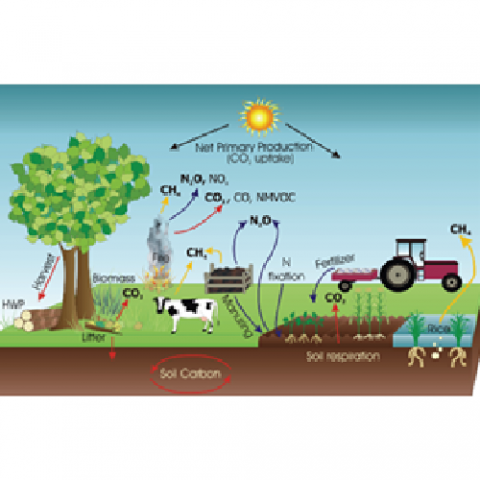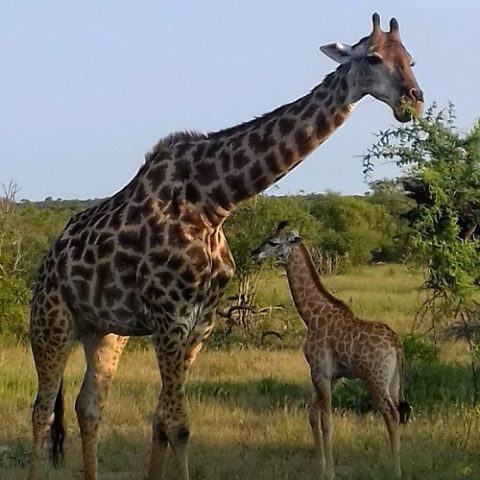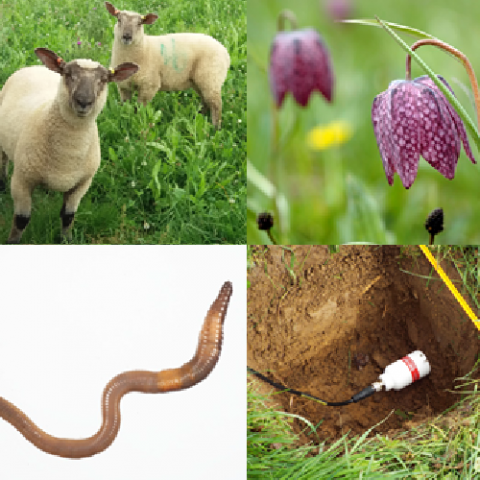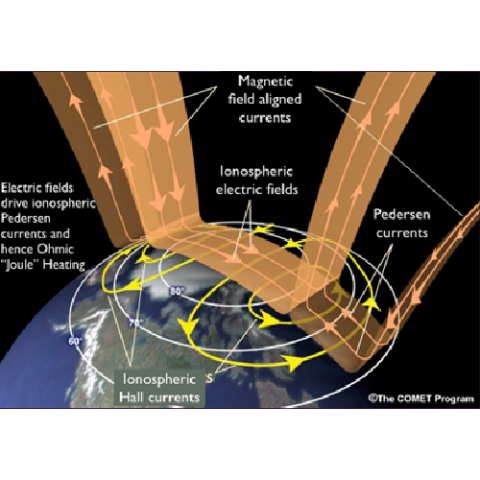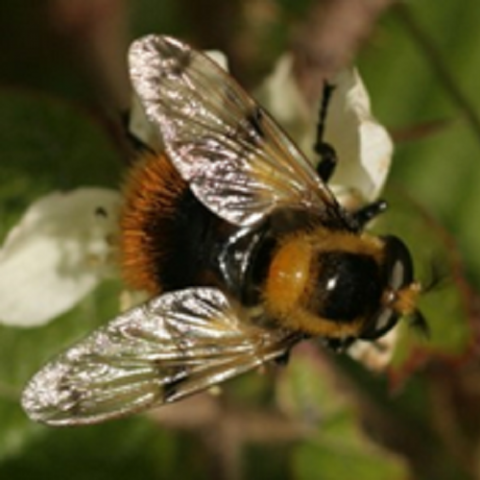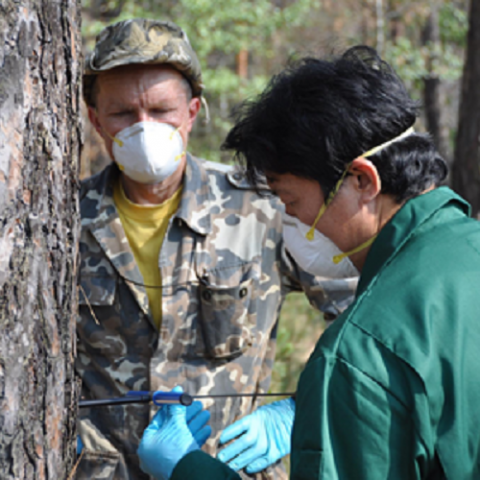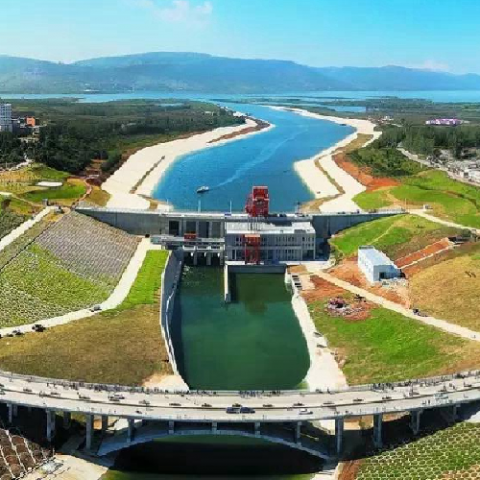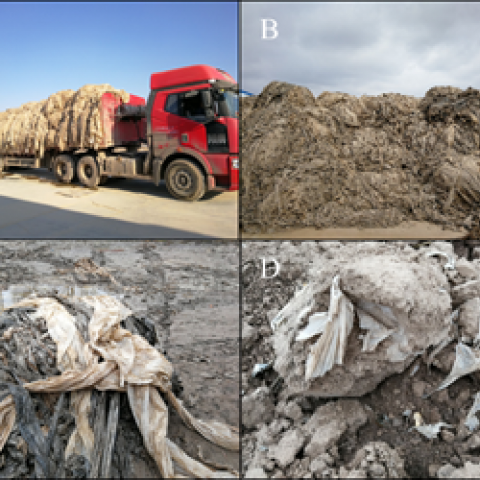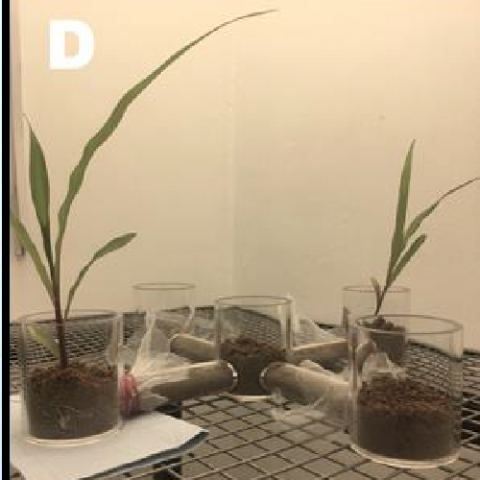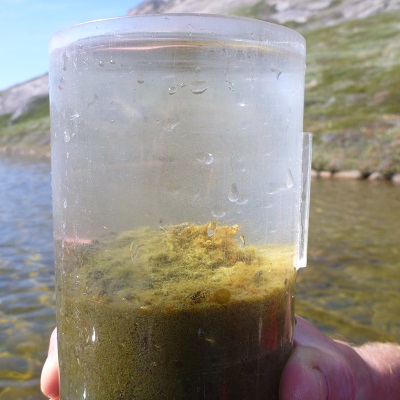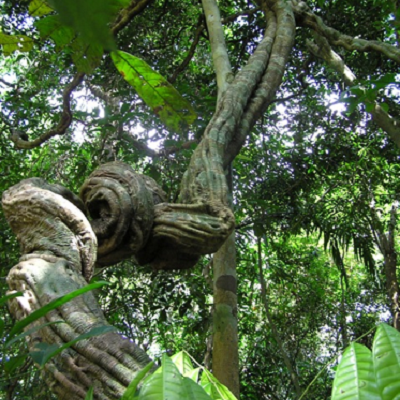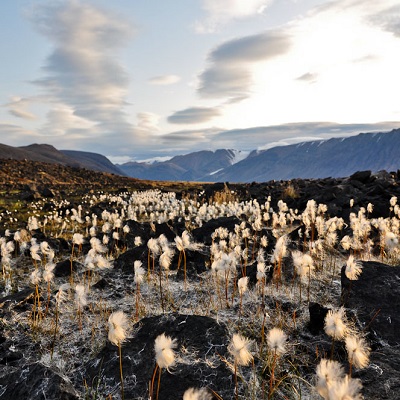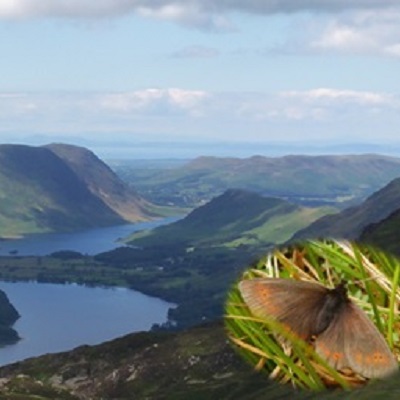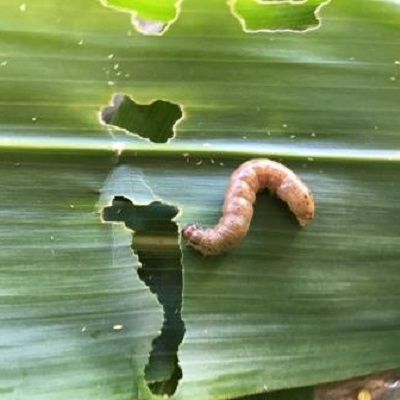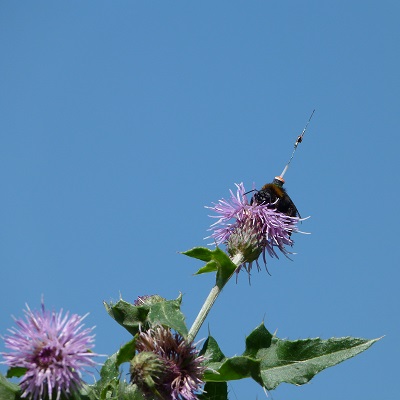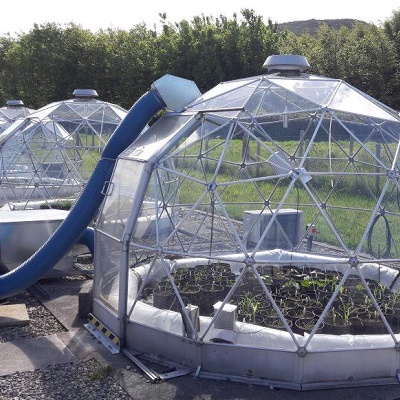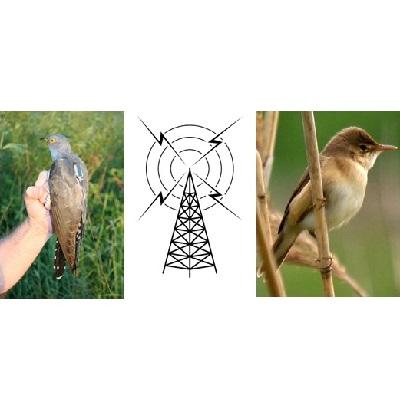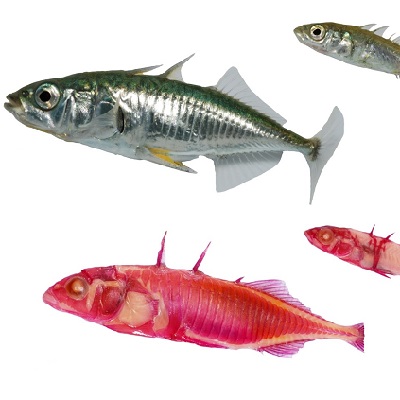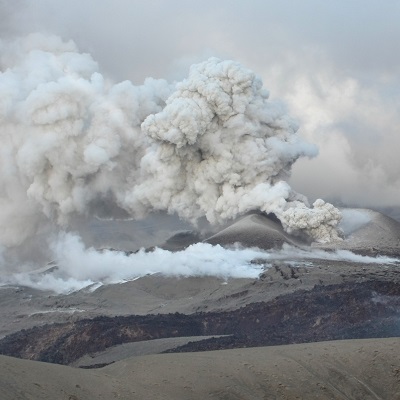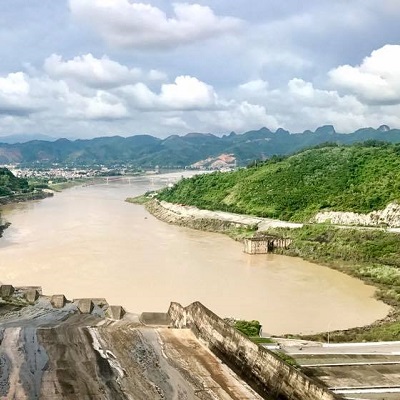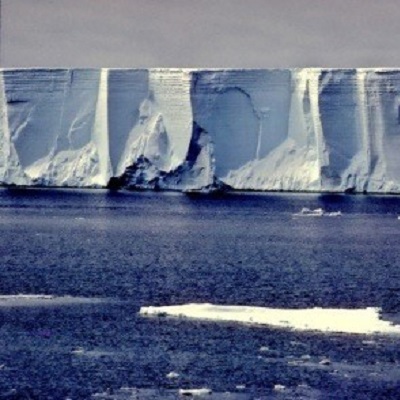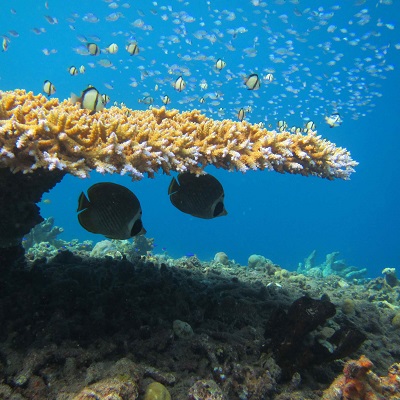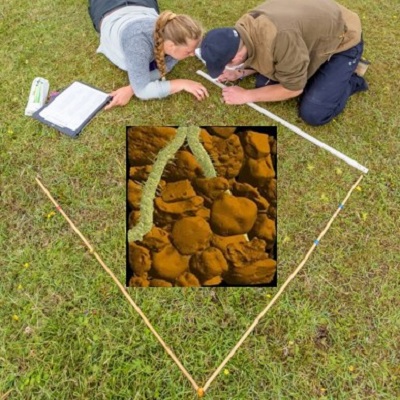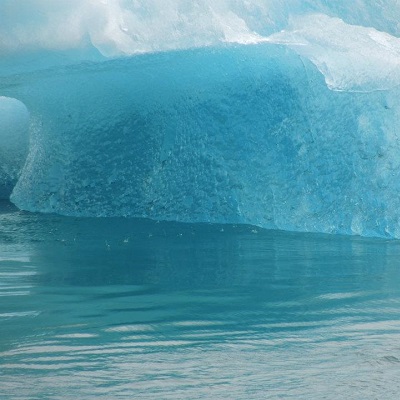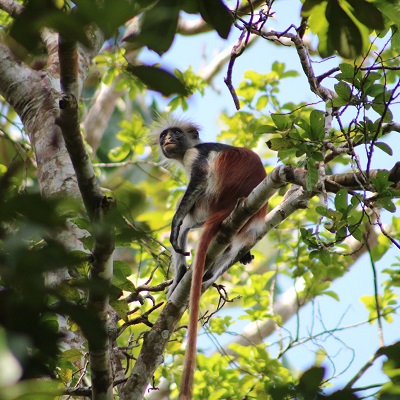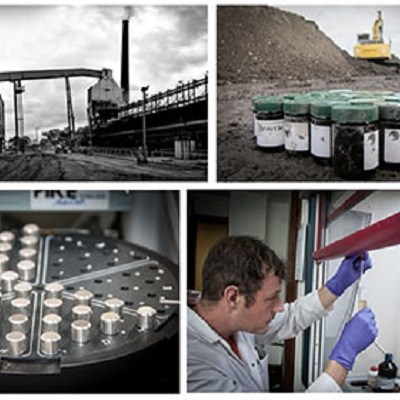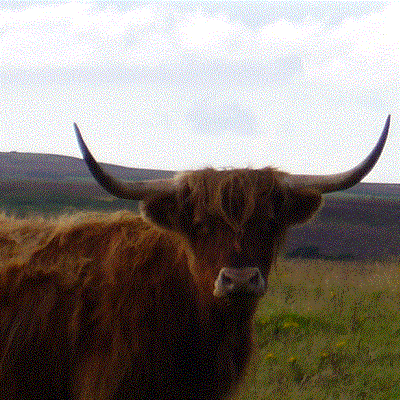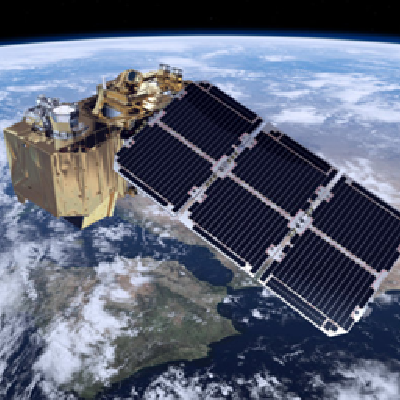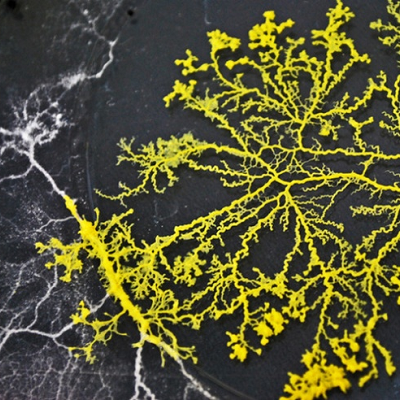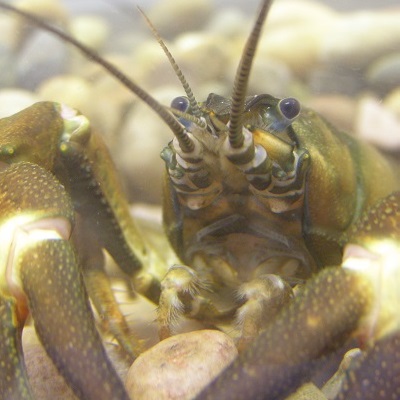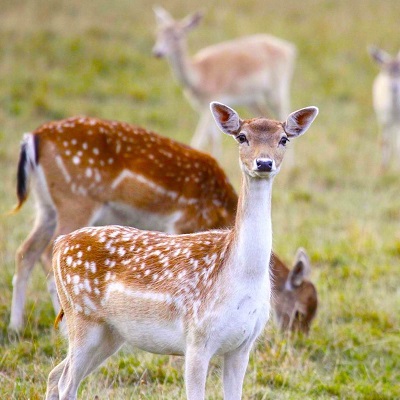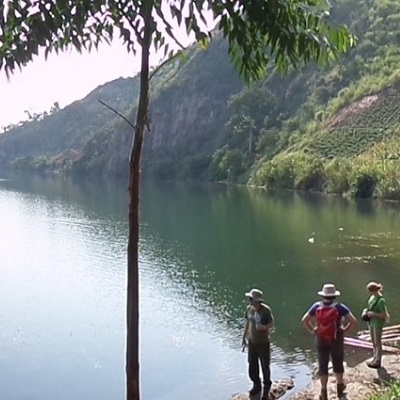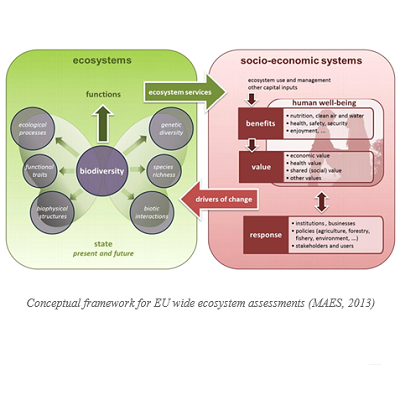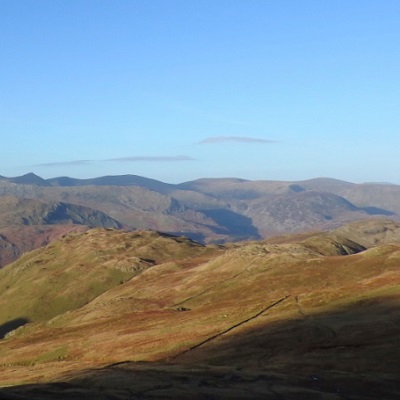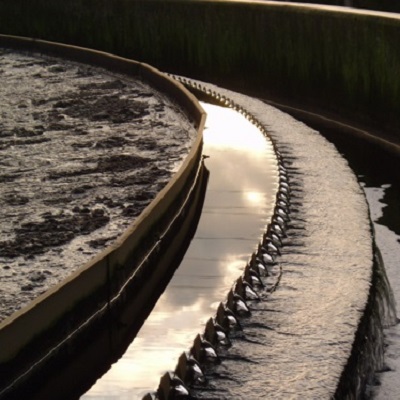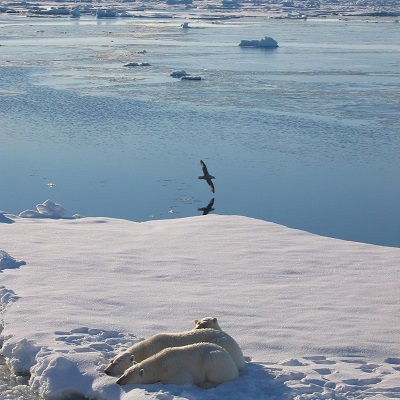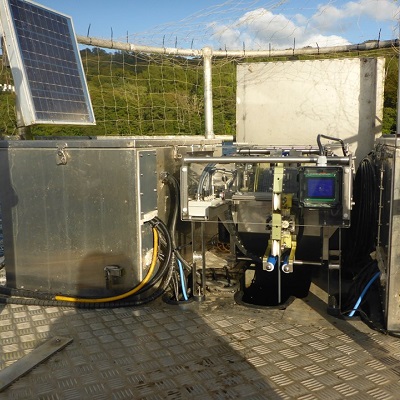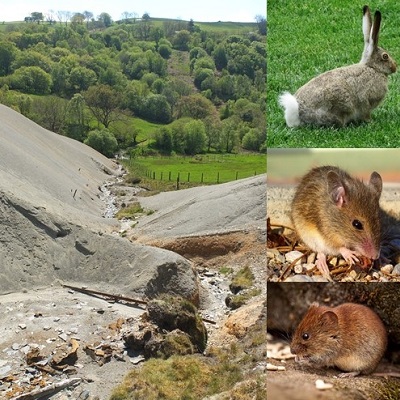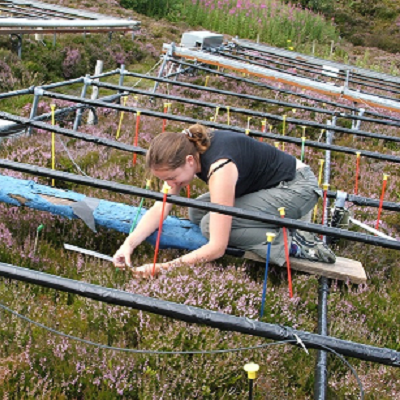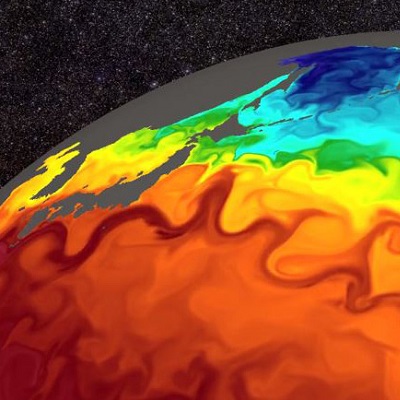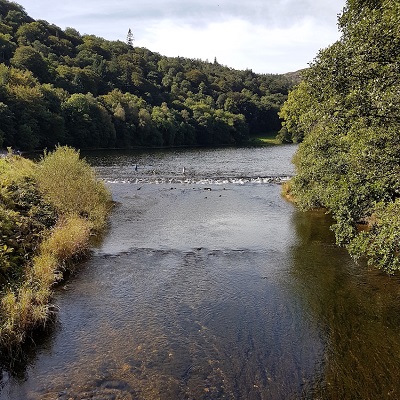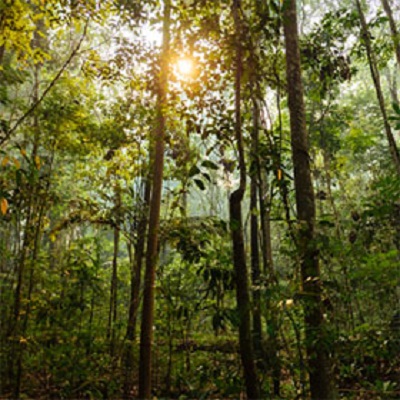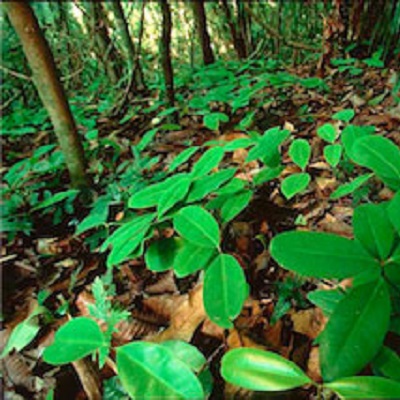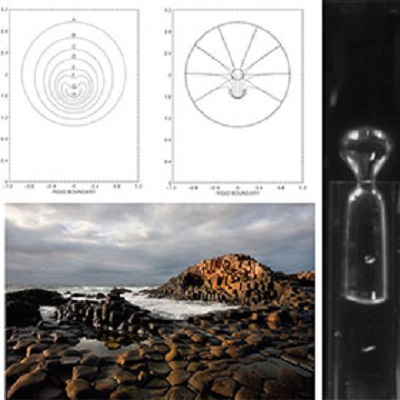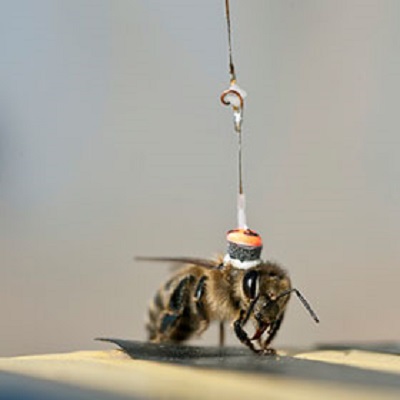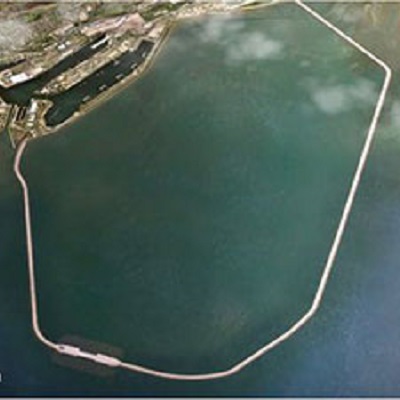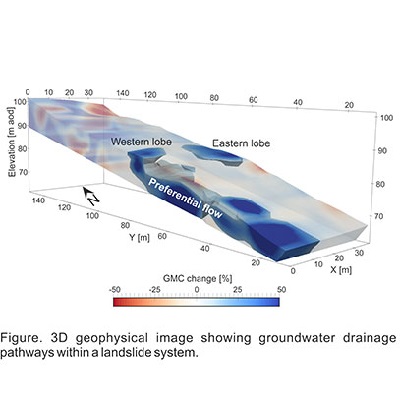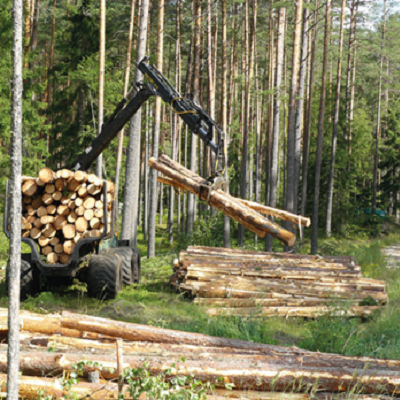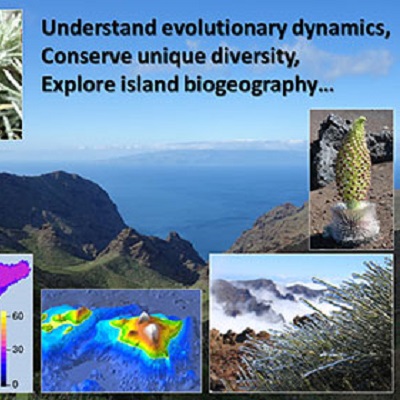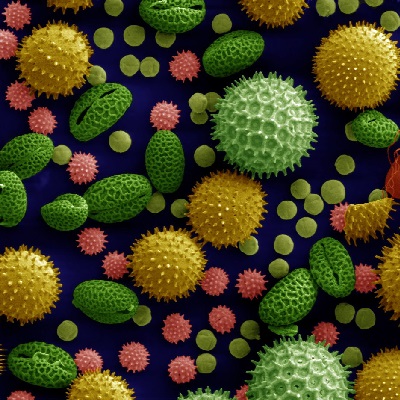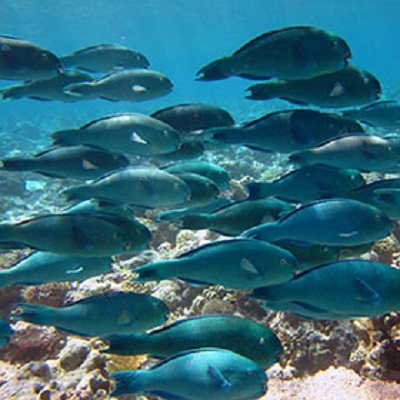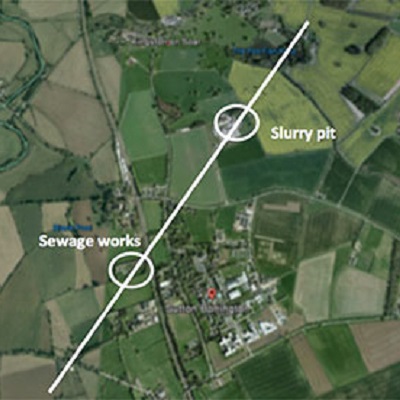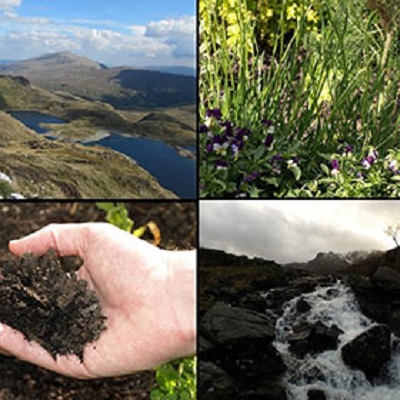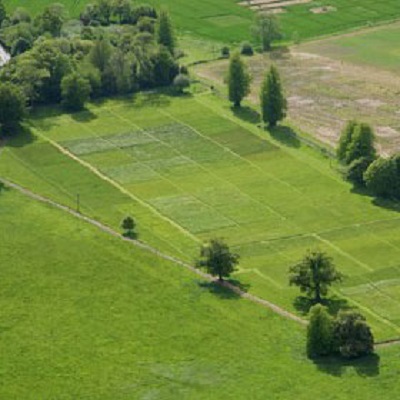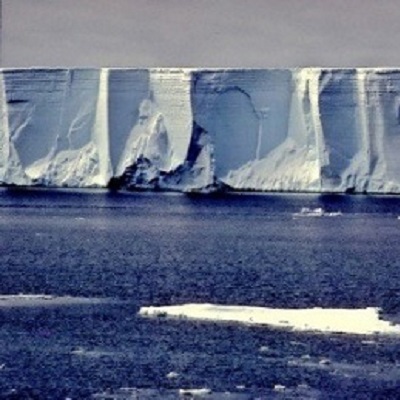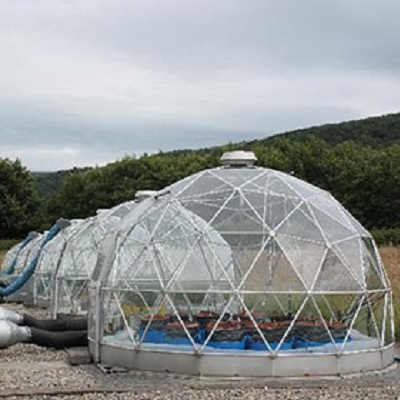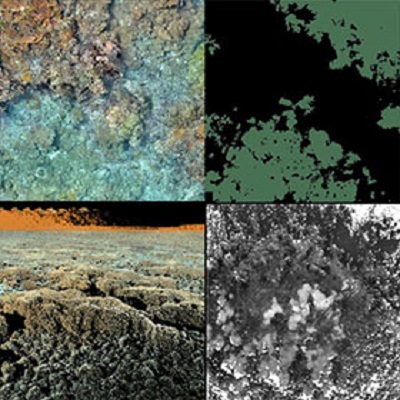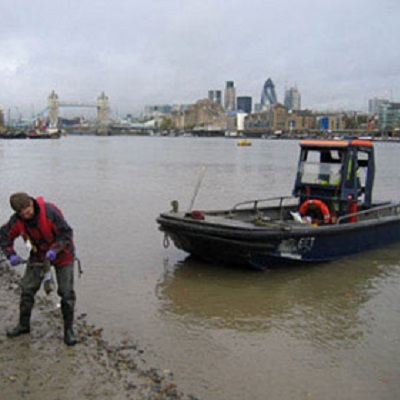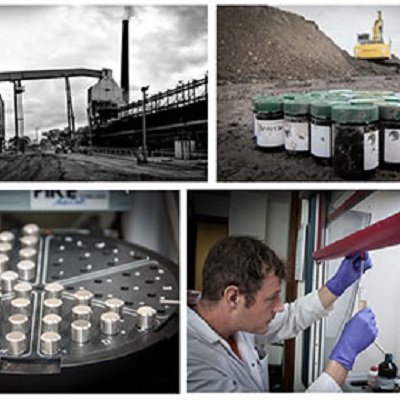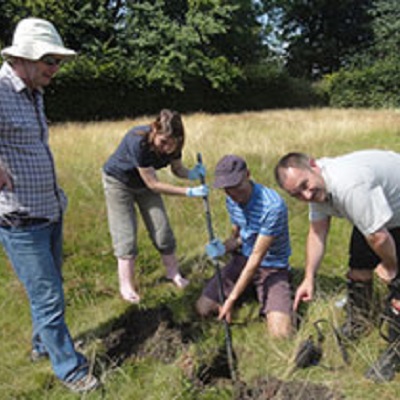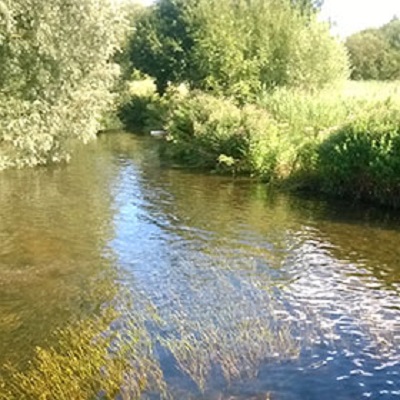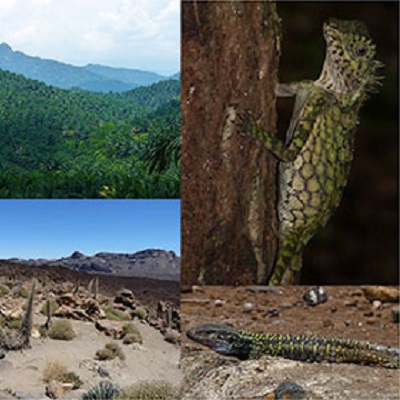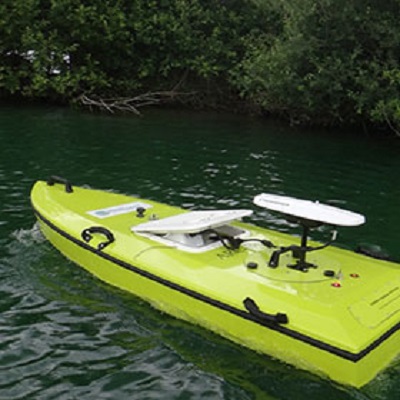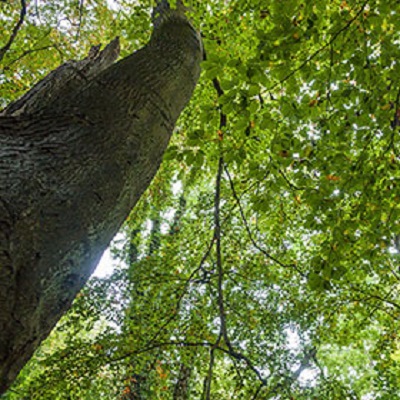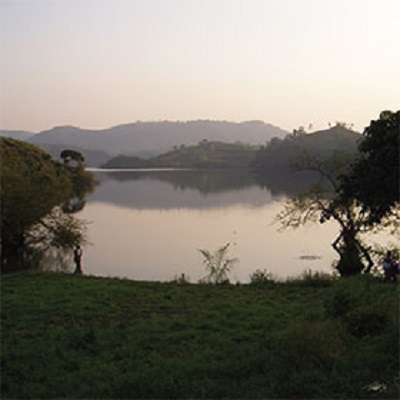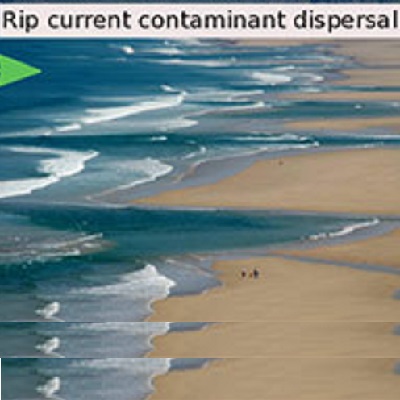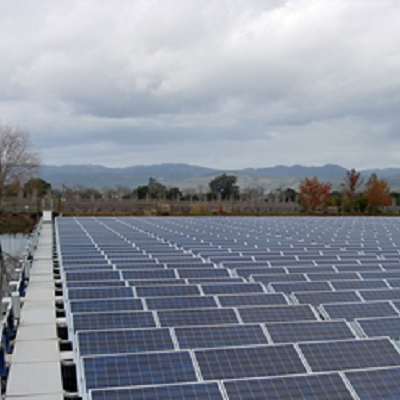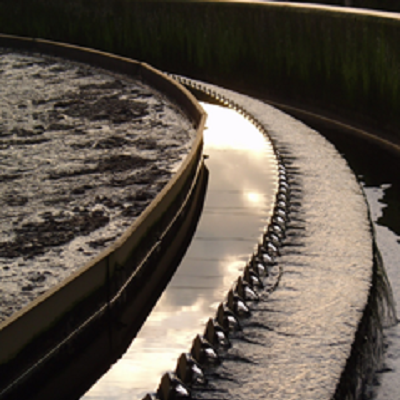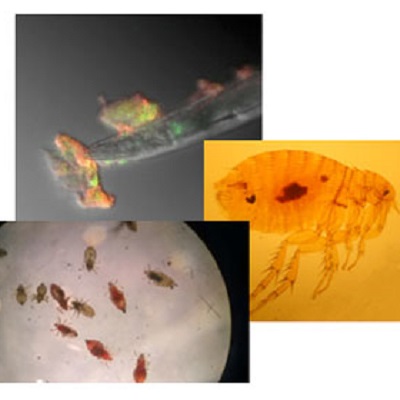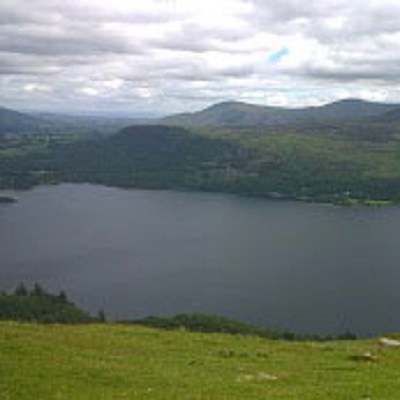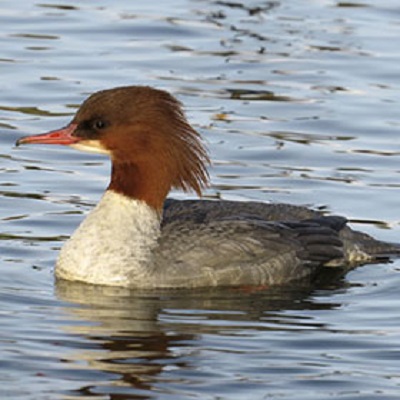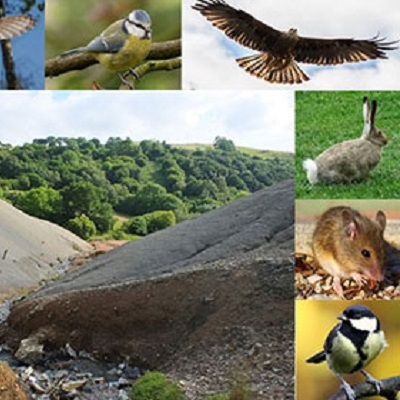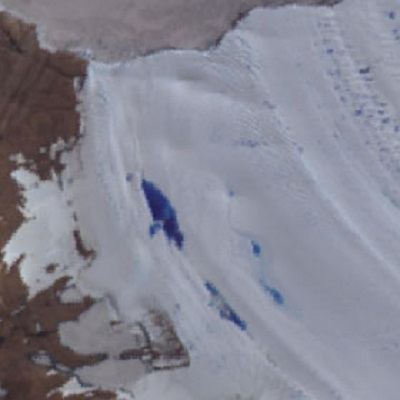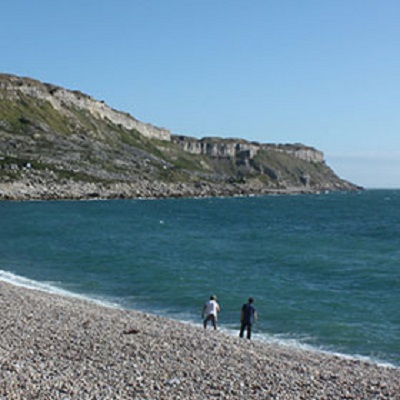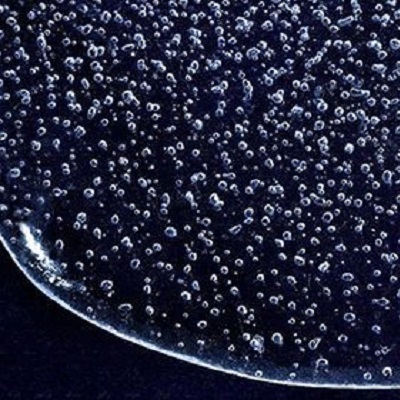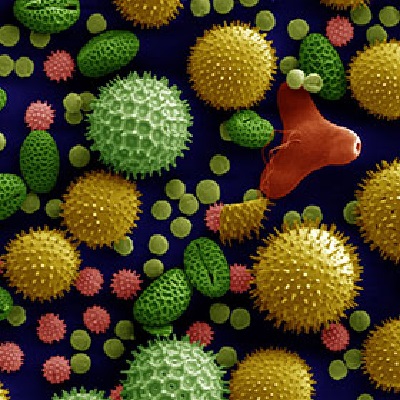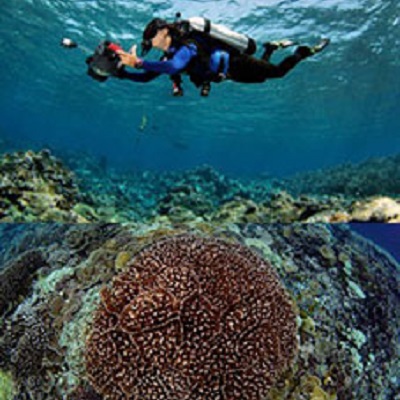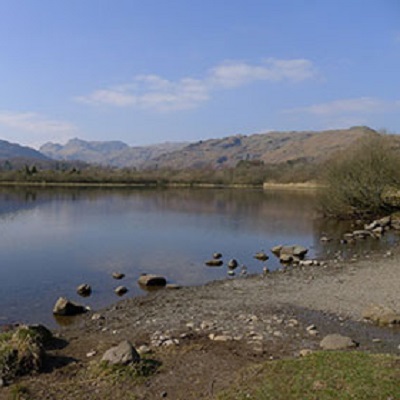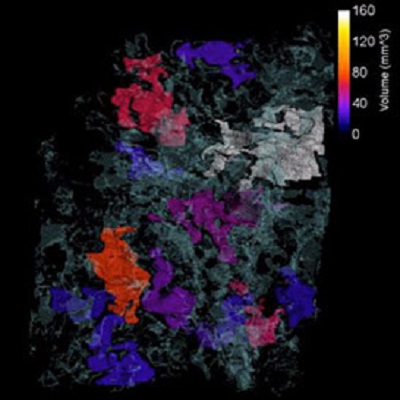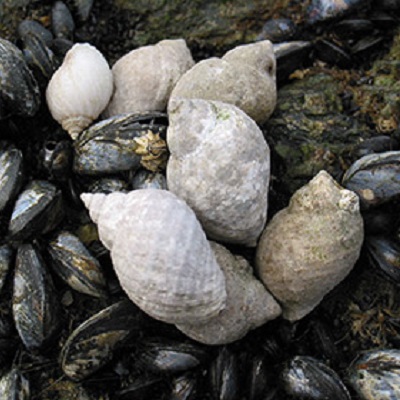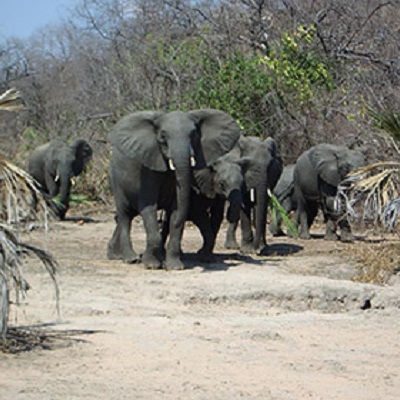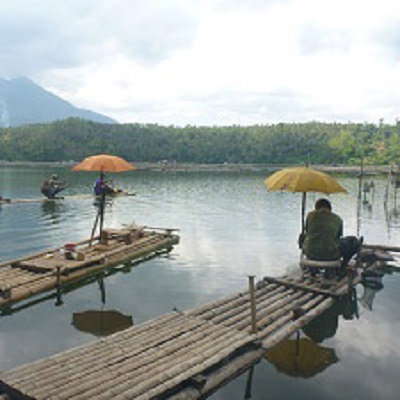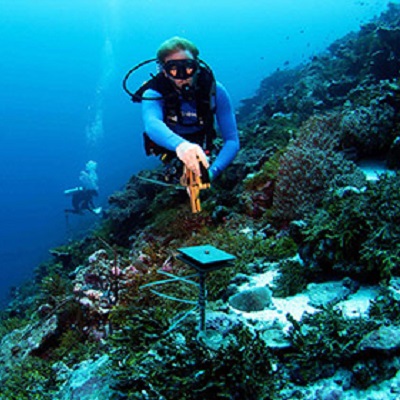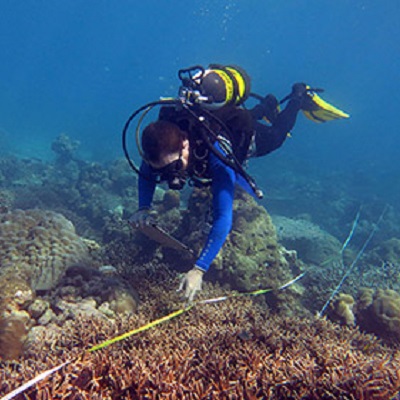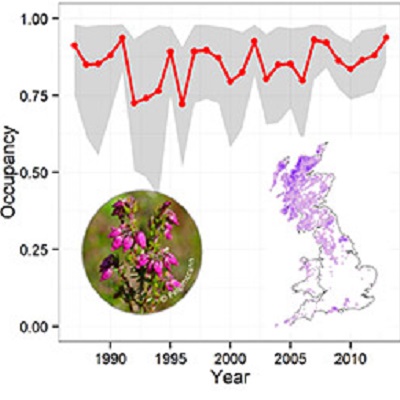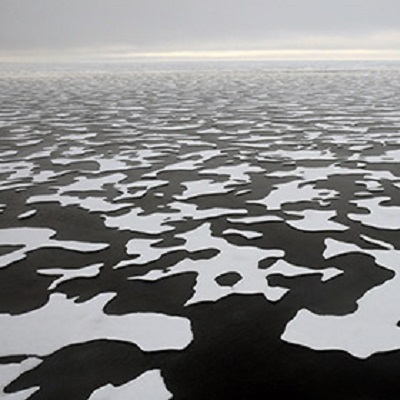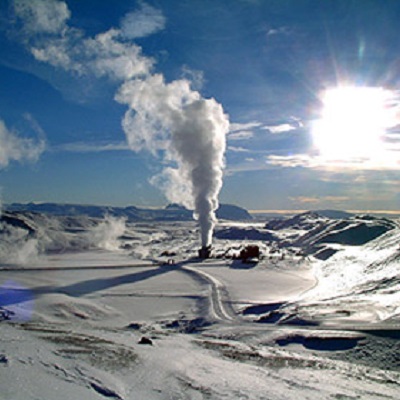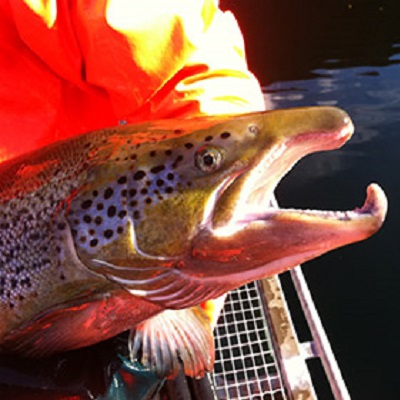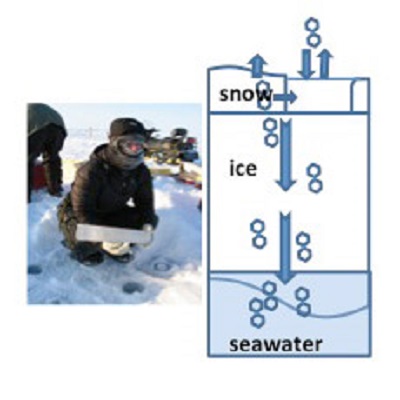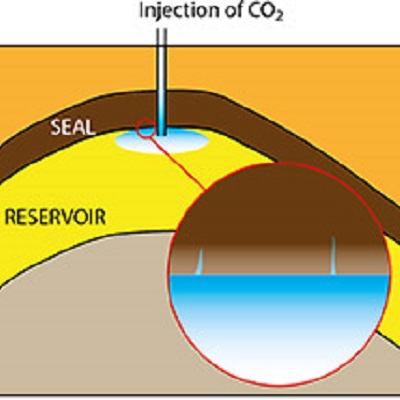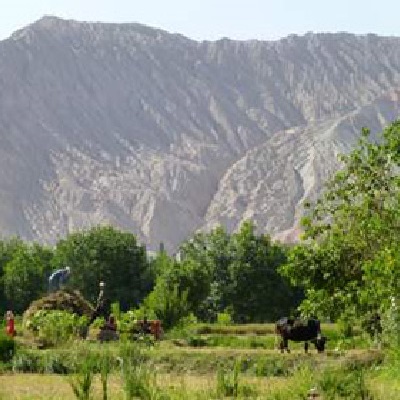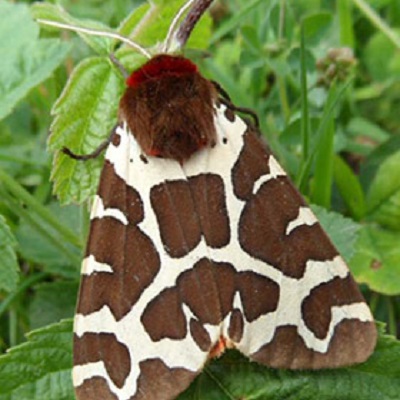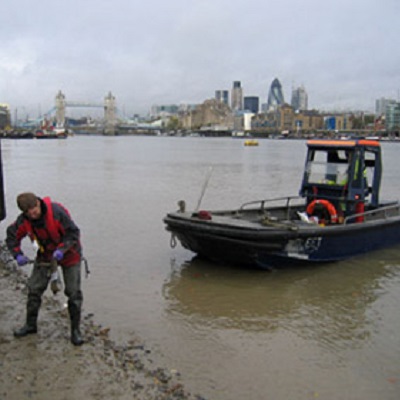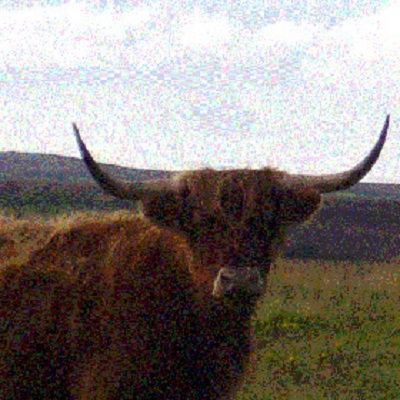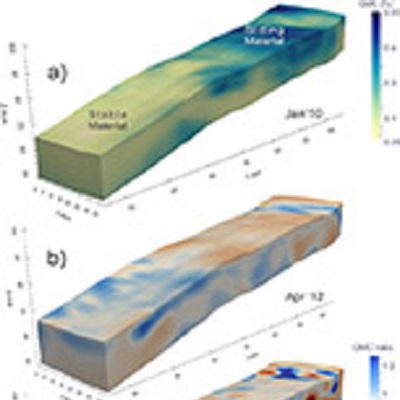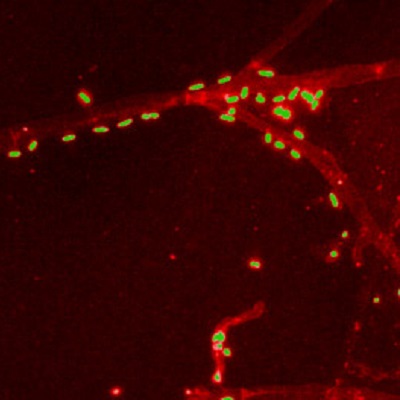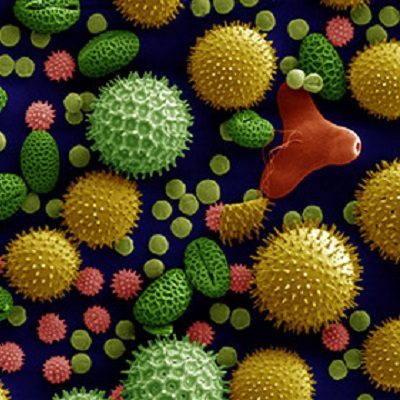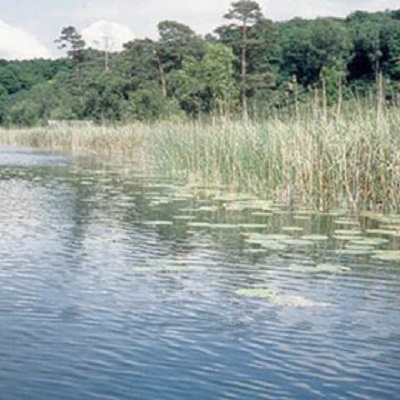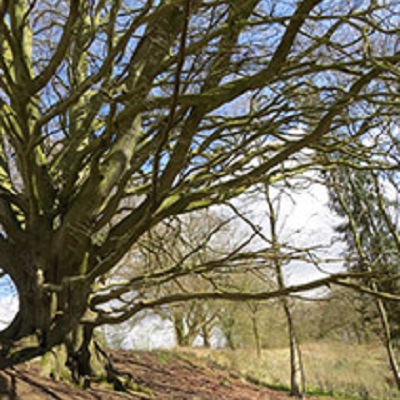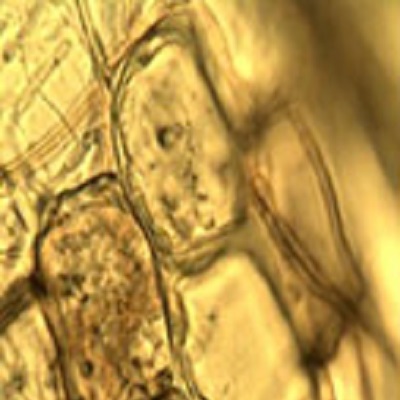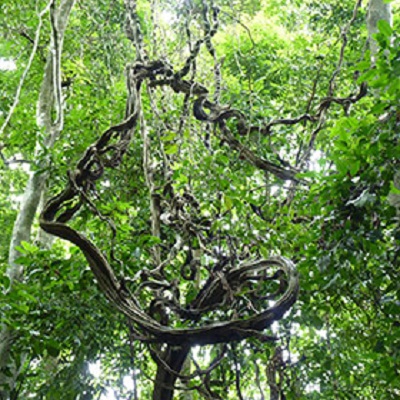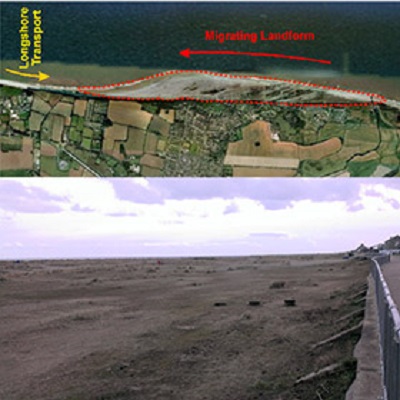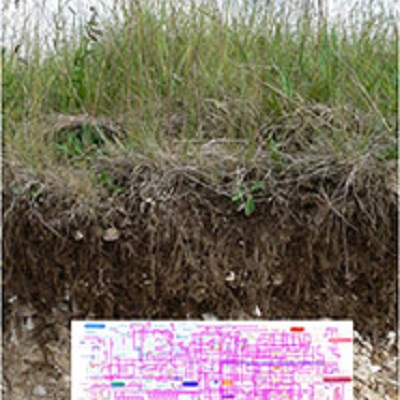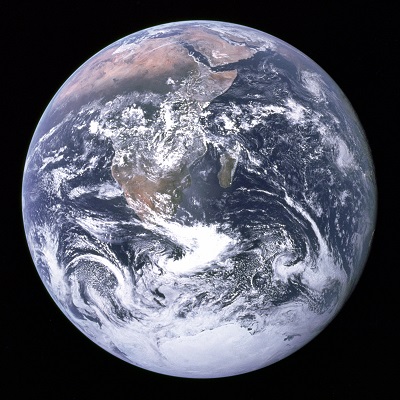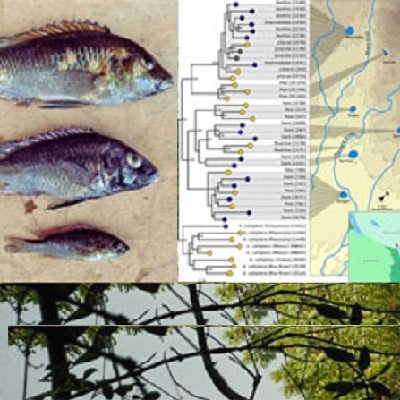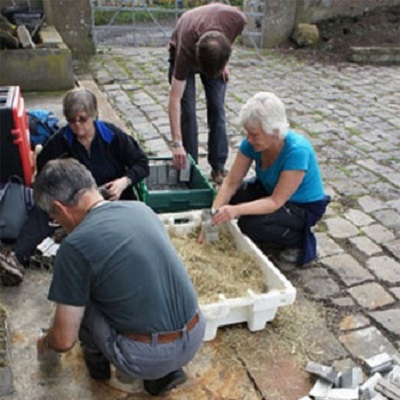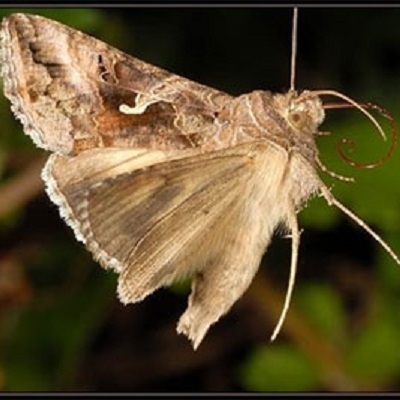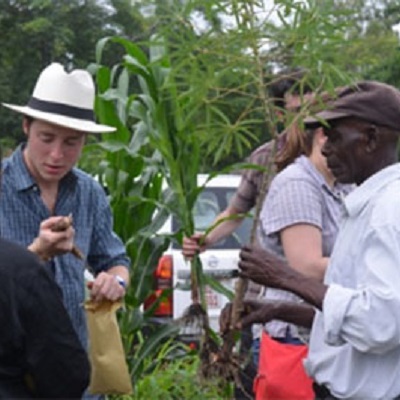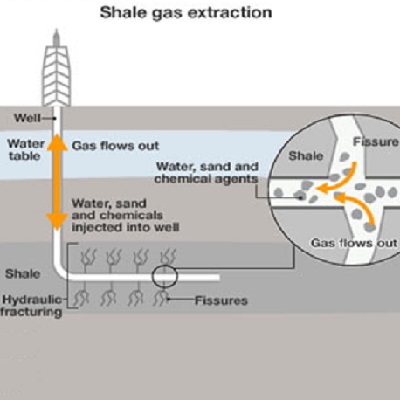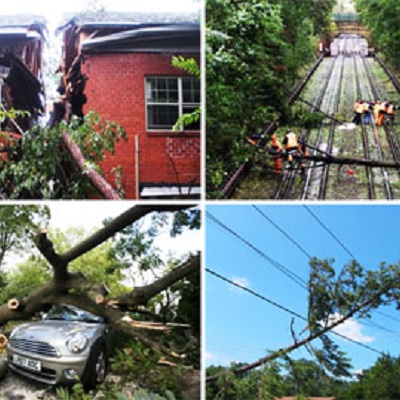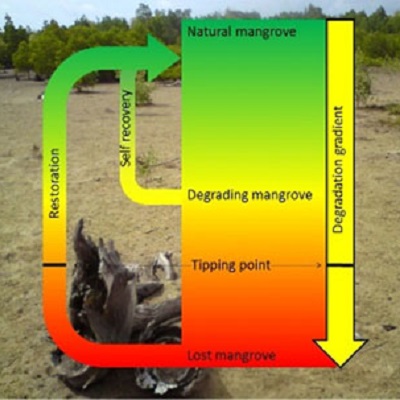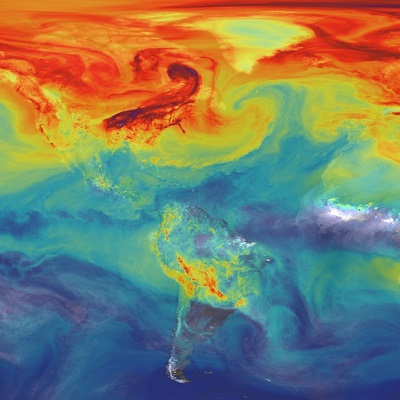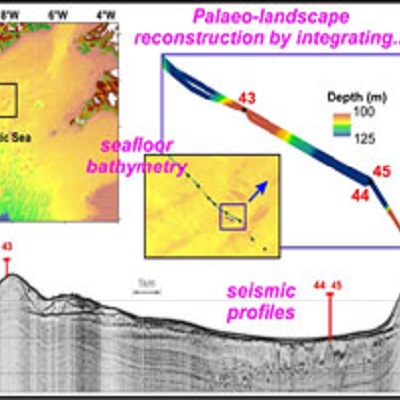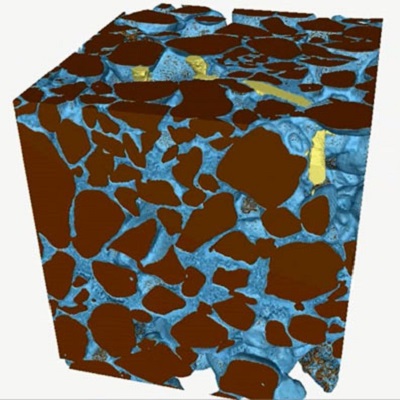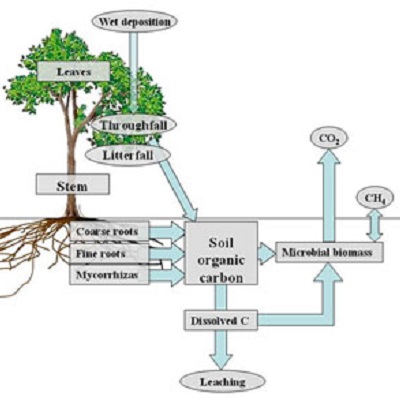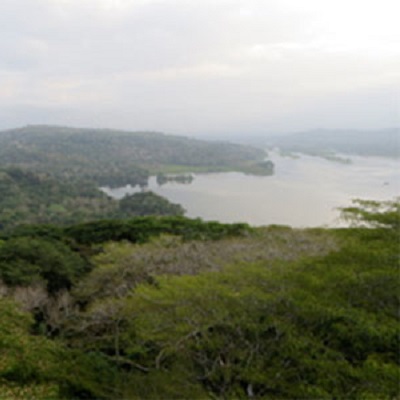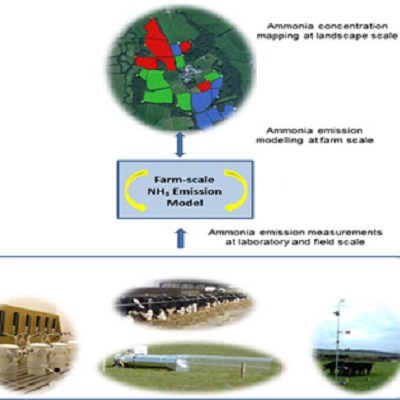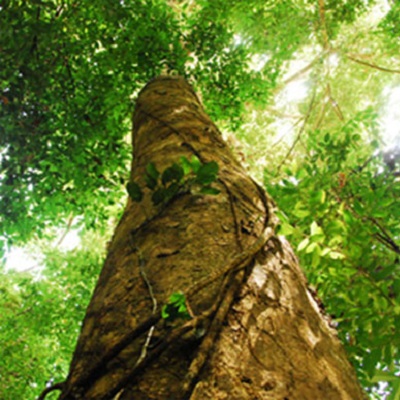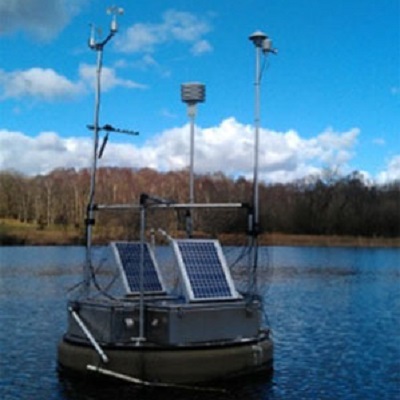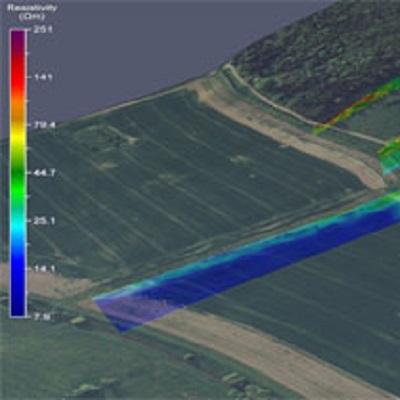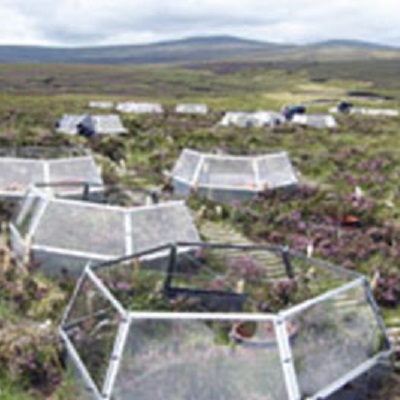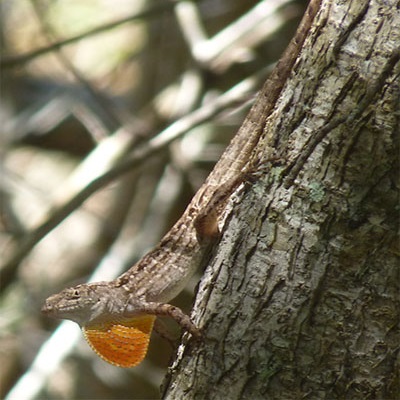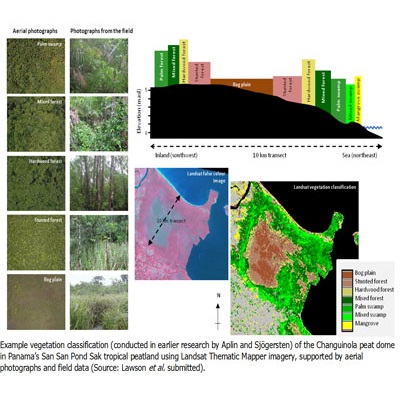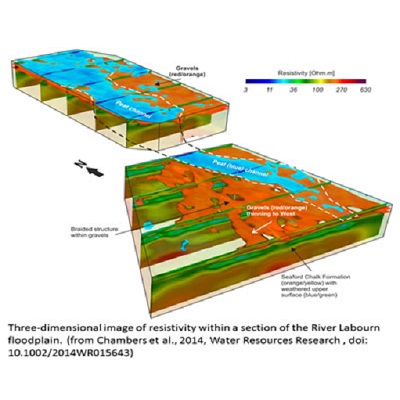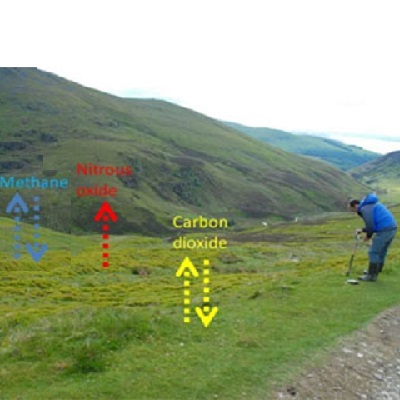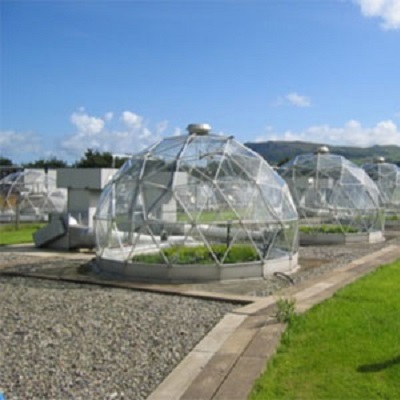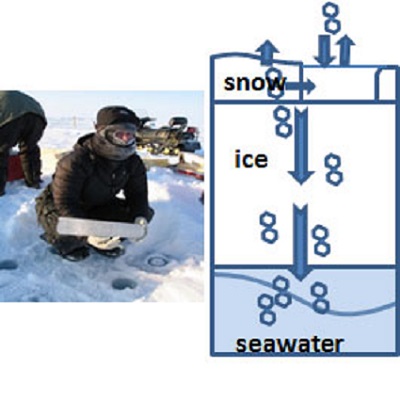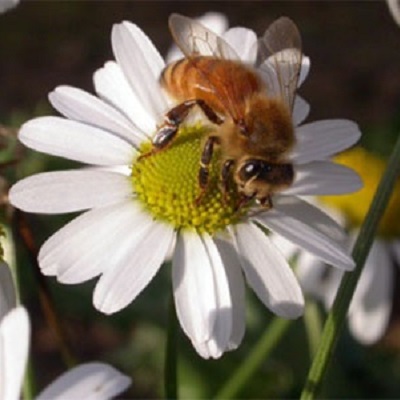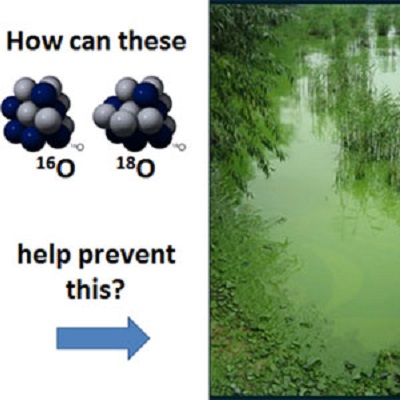
Envision - Developing next generation leaders in environmental science
Developing next generation leaders in environmental science
Projects advertised in 2023
A scent of biodiversity – environmental volatile organic compounds to monitor biotic interactions
Monitoring biodiversity is a major research focus, with the current upsurge in initiatives to finance biodiversity conservation (e.g. Target 19, Kunming–Montreal CBD). Measurements must be transpare…
Read More
Abrupt Declines In Already Degraded Ecosystems
Climate change forecasts for the UK suggest changes to the intensity and frequency of flooding, drought, heat and strong winds, as already evidenced by the record-breaking years observed in the UK ove…
Read More
Accelerating phosphorus and nutrient cycling in the Greenland Arctic ecosystem Soils
PhD Study: At the Global Frontier of Climate Change and Nutrient Cycling The fragile Arctic ecosystems are changing rapidly due to global warming, as glaciers retreat, they are revealing arctic so…
Read More
Biodiversity for woodland resilience: the long-term functional ecology of tree diversity
The benefits of biodiversity for forest resilience and delivery of many ecosystem services underpin “nature-based solutions”. However, there are major gaps in knowledge of the ecological mechanism…
Read More
Can prey behaviour explain habitat associations of seabirds?
Understanding animal responses to environmental variation help predict population-level impacts from climate change and habitat modifications. In recent times, studies identifying relationships betwee…
Read More
Carbon cycling in freshwater lakes; identifying the who, what, where and when.
Algal blooms in freshwaters are happening with increasing frequency due to climate change and input of nutrients. Lake ecosystems may be severely impacted by blooms, particularly the microbial food we…
Read More
Data to Decisions: Designing a digital twin for sustainable agriculture
The need for data-informed farmer decision-making has never been more critical. Climate change, floods, droughts, pests, diseases, and political pressures all pose significant threats to our ability t…
Read More
Defrosting the Arctic Ocean layer cake.
Dramatic sea ice loss – “defrosting” of the Arctic has occurred as it warms 4 times faster than the rest of earth. This and other rapid changes in the Arctic, such as a freshwater release from…
Read More
Developing next-generation radar for accurate measurement of volcanic eruption plumes
This is an opportunity to improve volcanic ash dispersal forecasts through enhancing real-time radar remote sensing. Volcanic ash plumes present a global hazard and have led to well-documented multi-b…
Read More
Early warning of reservoir dam failure: harnessing novel ground imaging and machine learning technologies for enhanced hazard assessment
This is an exciting opportunity to explore deep learning (DL) methods, in combination with geophysical and hydro-mechanical models, to extract information on the stability of dams and other earthworks…
Read More
Enhancing the contribution of beneficial beetles to biodiverse and net-zero livestock systems
Grazing systems are a key target for reducing the greenhouse gas emissions of agriculture, towards sustainable livestock production. Regenerative farming practices such as herb rich pastures (herbal l…
Read More
Evaluating the pre and syn-collapse conditions of rainfall-triggered landslides in Indonesia: steps toward improved forecasting
Landslides are a persistent and widespread geohazard in Indonesia, causing tens to hundreds of deaths and widespread infrastructure damage on a yearly basis (e.g. Froude and Petley 2018). Landslide tr…
Read More
Exploring the ecology, functionality and biogeography of Amazonian soundscapes
The world’s rainforests are incredible reservoirs of biodiversity, holding over 60% of the world’s animal species and 67% of all tree species. While this remarkable diversity makes them a …
Read More
Firn saturation and the future stability of the Larsen C ice shelf in Antarctica
The Antarctic ice sheet is ringed with floating extensions known as ice shelves, which dam the flow of grounded ice into the ocean. Their removal can cause acceleration of ice flow and subsequent sea …
Read More
Freshwater storage at the “roof of the world” under climate change
The Tibetan Plateau, commonly known as the “the roof of the world”, supplies freshwater for nearly two billion people. Water storage is crucial in determining hydrologic transport and water availa…
Read More
From wings to fins: ecological connectivity between seabirds, mangroves and coral reefs
Do seabirds enhance the connectivity of reef fishes and elasmobranchs between mangroves and coral reefs? Seabirds forage for fish in the open ocean, returning to islands to roost and breed. In doing s…
Read More
Holed-up, but not safe: the impact of climate change on behaviour, populations, and communities of hole nesting birds
Climate change is influencing wildlife populations across the globe, often resulting in changes in behaviour and the timing of key life events throughout the year. Both temperature and precipit…
Read More
Hot to cold: the exceptional mobility and hazard of volcanic block and ash flows
Ten percent of the world’s population (i.e. 100s of millions) live within 100 km of an active volcano. During all explosive volcanic eruptions pyroclastic density currents (PDCs) can form – hi…
Read More
How does sensory pollution affect navigation behaviour in animals?
Animals face many challenges as increased urbanization impacts their ability to survive and reproduce. Nowhere is this more evident than in migratory birds. Throughout Europe evidence indicates that p…
Read More
Investigating the nature and dynamical properties of rogue waves
Once dismissed as a nautical myth, rogue waves are now known to be real events, with a growing worldwide database of observations. Rogue waves pose a significant threat to maritime safety and have bee…
Read More
Measuring Meltwater Fluxes into the Arctic Ocean
This project offers the exciting opportunity to assess pan-Arctic meltwater fluxes from the Greenland Ice Sheet and Arctic ice caps, using novel satellite datasets and advanced processing techniques. …
Read More
Modelling extreme sea states in a changing climate
Applications are invited for a PhD studentship within the NERC-ENVISION Doctoral Training Partnership, co-funded by JBA Trust, with a project entitled: “Modelling extreme sea states in a changin…
Read More
Ozone Risk to Carbon Sequestration by Wetlands
There are increasing efforts to improve estimates of carbon sequestration by vegetation as this is a method of capturing and storing atmospheric carbon dioxide o reduce climate change. However, the ab…
Read More
Pioneering the next generation of flexible and adaptable environmental models: a case study of emerging contaminants
We are seeking an enthusiastic student to pioneer the next generation of environmental modelling innovation. Sitting at the intersection of disciplines, this exciting opportunity will allow you to dem…
Read More
Redrawing the lines of battle in coral reef fish communities
Coexistence of competing species in ecological communities is made possible by co-evolved “rules of engagement”. During competition, these rules enable contest resolution through avoidance or sign…
Read More
Revealing human impacts through time in the Brazilian Pantanal using integrated lake sediment analyses
The Pantanal is the world’s largest tropical wetland and home to numerous endangered and threatened species. It is also increasingly impacted by human activities, particularly cattle ranching. In re…
Read More
The impacts of floating solar panels on lake ecosystems and water quality
Why this project is important: There is an urgent need to decarbonise energy generation and transition to zero carbon to mitigate climate change impacts. As part of the drive to decarbonisation, float…
Read More
The Pollution-Climate-Health Dilemma: Cleaner Air but Poorer Health Outcomes under a Changing Climate?
In the UK, air pollution has been identified as the largest environmental risk to public health, causing between 28-36,000 deaths per year. The WHO have stated that 99% of the world’s population are…
Read More
Thirsting Giants of the African Savanna: Assessing the vulnerability of Elephant water resources to climate change
African elephants are keystone species, shaping the ecosystems they inhabit. Their survival hinges on access to freshwater sources, making them acutely vulnerable to the impacts of climate change. Thi…
Read More
Understanding temporal fluctuations in nitrate in groundwater
Nitrate is the most pervasive pollutant in groundwater. High concentrations of nitrate in groundwater can contribute to degradation of surface water ecosystems and can also result in the need for co…
Read More
Why do populations fail to adapt to environmental change?
There are myriad examples of amazing evolutionary adaptations, from the beaks of finches to antimicrobial resistance, that have been shaped by selection arising from natural processes or the effects o…
Read More
Why is C2 photosynthesis so rare in grasses?
The vast majority of plant species use C3 photosynthesis. However, a turbo-charged form of photosynthesis called C4 evolved independently in nearly 70 lineages and is used by our most productive food …
Read More
Projects advertised in 2022
Agroecosystems in a Climate Crisis: Using Big Data to understand the Out of the Ordinary
Agroecosystems produce food but also deliver both benefits and disbenefits for the environment, including water and air quality. Climate change forecasts for the UK suggest changes to the intensity an…
Read More
Anthropogenic change and disease susceptibility in poison frogs: identifying links with diet, skin alkaloids, and the microbiome
Anthropogenic disturbance, coupled with climate change, is a leading cause of biodiversity loss. In Ecuador, approximately 97% of the Chocó biodiversity hotspot is now deforested, underscoring the ne…
Read More
Assessing Amazon forest vulnerability and resilience to dry periods across soil moisture and microenvironmental gradients
Amazon forests are important for global climate and biodiversity. However, major uncertainties remain about how they will respond to future climate, limiting our ability to make accurate projections a…
Read More
Bird life in the Anthropocene: understanding convergent adaptation to urbanisation
Urbanisation is a major threat to biodiversity in the 21st Century. Over 4 billion people inhabit urban spaces and by 2050, this is predicted to increase by a further 2.4 billion. This will have a pro…
Read More
Delivering Ecoacoustic Net Gain in the UK
Ecoacoustics is the use of sound to understand more about the nature of ecosystems and how they function. The scientific field and practical applications are rapidly developing as new hardware and ana…
Read More
Developing a microfluorination technique for oxygen isotope analysis on biogenic silica
Human-induced climate change has altered environments around the world. In pursuit of environmental change resilience, we require vital palaeoclimate data and empirical context for contemporary and fu…
Read More
Drivers and demographic consequences of seabird foraging strategies in a changing environment
Coastal marine ecosystems are undergoing rapid change due to multiple anthropogenic impacts including overfishing, climate change, pollution and renewable energy generation. These changes have importa…
Read More
Early warning of reservoir dam failure: harnessing machine learning and novel ground imaging for enhanced hazard assessment
This is an exciting opportunity to explore deep learning (DL) methods, in combination with geophysical and hydro-mechanical models, to extract information on the stability of dams and other earthworks…
Read More
Establishing the relative importance of a rainforest microcosm in oil palm plantations
Palm oil is the most widely consumed vegetable oil on Earth and expanding oil palm (Elaies guineensis) plantations are a major contributor to the global biodiversity crisis. When tropical forests are …
Read More
Forensic source-fingerprinting of sediment-degraded aquatic habitats using eDNA
Excess fine-grained sediment and associated organic matter loadings are pervasive in aquatic habitats globally as a result of land use and climate change. Reducing the sediment-associated environmenta…
Read More
Freshwater storage at the “roof of the world” under climate change
The Tibetan Plateau, commonly known as the “the roof of the world”, supplies freshwater for nearly two billion people. Water storage is crucial in determining hydrologic transport and water availa…
Read More
How do coral energy strategies influence their survival?
Most tropical reef-building corals are mixotrophic, acquiring autotrophic nutrition from their photosynthetic algal endosymbionts and heterotrophic nutrition via predation of plankton. This flexible t…
Read More
Ice ablation controlled by natural and anthropogenic particles
Glaciers and ice sheets store 77% of Earth’s freshwater and are key for utility supply, irrigation, and hydropower. Effective water-resource planning for a sustainable Earth in a changing climate, a…
Read More
Impacts of non-native invasive crayfish in tropical freshwater systems
Invasive species are a key cause of biodiversity decline in freshwater systems. Crayfish are a particularly problematic invader, with multiple species ranked amongst the worst global invaders. However…
Read More
Investigating the role of organic nutrient resources in controlling biodiversity and production in freshwater ecosystems
The project: Freshwater ecosystems are among the most threatened ecosystems globally, with nutrient enrichment perhaps the most significant stressor. However, the importance of the wide range of organ…
Read More
Landslide early warning: developing novel geophysical monitoring approaches to ‘see inside’ unstable slopes
Slope failures cause considerable social and economic harm. In the UK, impacts are principally economic, through the damage and disruption to our transportation (e.g. rail) and utilities (e.g. dams) n…
Read More
Measuring the impact of rewilding on pollinator biodiversity: what can machine learning tell us?
Rewilding is an approach to conservation which seeks to regenerate degraded ecosystems in a self-sustaining way, with relatively little ongoing management. Rewilding projects are proliferating in the …
Read More
Modelling extreme sea states in a changing climate
Applications are invited for a PhD studentship within the NERC-ENVISION Doctoral Training Partnership, co-funded by JBA Trust, with a project entitled: “Modelling extreme sea states in a changin…
Read More
Predicting soil microbial responses to environmental change
DNA sequencing has revolutionised our understanding of soil microbial biodiversity, uncovering the ecology of thousands of novel taxa and providing new opportunities for innovation within areas such a…
Read More
Promoting a nature-positive future: how to measure biodiversity to assess habitat restoration success
Biodiversity is essential for ecosystem services and resilience to global change, but is declining globally. Recent regulatory shifts requiring biodiversity reporting, offsetting and nature positive o…
Read More
Reclaiming the night sky for moths: what drives the flight-to-light response and how can this be mitigated?
Over the last 50 years, 33% moth species have declined in total abundance in Britain. This tragic loss of biodiversity is poorly understood, but artificial light at night (ALAN) has been shown to be a…
Read More
Redrawing the lines of battle in coral reef fish communities
Coexistence of competing species in ecological communities is made possible by co-evolved “rules of engagement”. During competition, these rules enable contest resolution through avoidance or sign…
Read More
Restoring degraded Kenyan grassland soils
Soils underpin food production in Africa, and they are under extreme pressure and while there has been considerable research into the management of African soils for crop production, far less research…
Read More
Seeing in the dark: evolution of supraglacial lakes on the Greenland and Antarctic ice sheets during polar night
The Greenland and Antarctic Ice Sheets are responsible for about a third of global sea level rise as a result of increased melting and changes to ice flow. Supraglacial lakes (SGLs) are becoming more …
Read More
The effect of environmental metals on the spread of antimicrobial resistance genes in the stickleback skin microbiome
Antimicrobial resistance (AMR) is a major threat to humans, animals, and our environment. Often associated with overuse of antibiotics in human and livestock dominated environments, its wider environm…
Read More
The genomic and adaptive consequences of extreme, human-mediated population decline
Human activities are placing incredible pressure on the natural world and impacting population sizes of wild organisms, but the consequences of severe population decline in the wild is poorly understo…
Read More
The vulnerability of soil carbon to extreme rainfall
There is a growing imperative to reverse global soil carbon losses and increase soil carbon stocks. This action could contribute to climate change mitigation and improve food security. While efforts t…
Read More
Tracking landslides and earthwork failures using electrical geophysics
Slope instability is responsible for considerable social and economic harm. In the UK, impacts are principally economic, through damage and disruption to critical infrastructure (e.g. railways, flood …
Read More
Understanding nitrogen delivery from glaciers to the Arctic Ocean: Do freshwater buffers help or hinder?
Temperatures in the Arctic have been increasing at more than double the global average over the last decades and glacial environments are at the forefront of climate change. Increasing temperatures im…
Read More
Understanding the indirect climate impacts of halogens in the troposphere
Halogen (i.e. chlorine, bromine & iodine) gases are ubiquitous in Earth’s atmosphere and since the 1970s are recognised as the principal driver of stratospheric ozone layer depletion. While the …
Read More
Volcanic fertilisation of tropical forest biomes
Tropical rainforest biomes are some of the most diverse and productive ecosystems on the planet, but these systems are also particularly vulnerable to changing climatic and environmental conditions. T…
Read More
What’s for dinner? Oceanographic drivers of Manx shearwater chick provisioning and growth
Oceanographic features (e.g. fronts, gyres and eddies) are known to aggregate pelagic forage fish and thereby shape the space use of marine predators. These features are dynamic and changes in their c…
Read More
Projects advertised in 2021
Assessing the Contribution of Antarctic Peninsula Glaciers to Global Sea Level Rise
Melting of the Greenland and Antarctica ice sheets contributes more than one third of global sea-level rise. One of the most rapidly changing polar regions is the Antarctic Peninsula which, during the…
Read More
Assessing the impacts of aquaculture and pesticide use in a protected tropical wetland (Loktak Lake, India)
Loktak Lake, located in Manipur, is the largest freshwater lake in NE India, declared a Ramsar site in 1990. It is divided into three main basins which have different land use practices by local popul…
Read More
Cold blood in warming winters: physiological impacts of climate change on UK reptiles
Environmental change is causing temperatures to rise across the globe – how this will affect the distribution and abundance of species is therefore an important current focus for ecologists worl…
Read More
Ecosystem functions of tropical filter-feeders under environmental
Mussels, bryozoans and sponges are sessile filter-feeders that are known to fulfil important ecosystem functions in temperate freshwater habitats, such as water clearance, nutrient cycling and promoti…
Read More
Effects of seabird nutrient inputs on the productivity of coral reef fish communities
How coral reefs can sustain their extreme biomass of large reef fishes has continued to puzzle scientists. By living fast and dying young, small, bottom-dwelling (‘cryptobenthic’) reef fishes have…
Read More
Exploiting big data to understand access to greenspace in the UK
Greenspaces provide incredible valuable benefits to people. For example, there are over 62,000 urban greenspaces in Great Britain, estimated to provide just over £130 billion to those living nearby. …
Read More
In from the cold: how are winter plankton communities changing with the climate?
Lake ecosystems host diverse communities of organisms which show great variation over seasonal, year-to-year and decadal timescales. Growing evidence demonstrates that these communities are already be…
Read More
Modelling the future of coastal soft cliffs under changing climate
Applications are invited for a PhD studentship within the NERC-ENVISION Doctoral Training Partnership with a project entitled: “Modelling the future of coastal soft cliffs under changing climate…
Read More
Quantifying drivers of human-elephant conflict in an arid savanna ecosystem
The continental-range of the African elephant has been dramatically reduced and fragmented due to the rapid expansion of human settlements and agriculture, resulting in escalating conflict over access…
Read More
Restoring for a resilient future: Woodland community assembly trajectories in the face of multiple stressors
You will be based at UKCEH Bangor and Bangor University, joining a dynamic group of forest ecosystem, climate change and air pollution researchers, based in the Environment Centre Wales. You will make…
Read More
The evolution of metabolic adaptation to environmental change
The ecological and evolutionary transitions that accompany environmental change often involve alterations in diet and accompanying morphological adaptations. These changes are abundantly well research…
Read More
The impact of climate change on the thermal ecology of cold-adapted butterflies
The project will investigate how increasing temperatures are affecting northern butterflies in the UK, and test the potential for managing habitats to promote climate change adaptation. It provides …
Read More
The Impact of Climate on Tropical Forests: A natural experiment within the Eastern Arc Mountains, Tanzania
Atmospheric CO2 is high (over 416 ppm) and rising, and the impacts of this are felt across the globe as climate change. Tropical forests (which contain ~50% of the world’s terrestrial biodiversi…
Read More
The impact of small impoundments and connectivity loss on fish distribution and abundance in river ecosystems
Rivers are among the world’s most threatened ecosystems. Freshwater fisheries are at risk from multiple stressors including climate change, pollutants and the presence of dams which inhibit fish mov…
Read More
The influence of groundwater and soil conditions on future flood risk of UK estuaries
The risk of flooding is changing worldwide, associated with population and socioeconomic growth, and climate change. Lowland catchments and estuaries are particularly vulnerable because of high land v…
Read More
Tracing the heat signature of Atlantic Water through the GIN seas and its impact on Arctic ice and climate.
Extreme weather such as floods, heat waves, unusually cold harsh winters are increasingly prevalent across the Northern Hemisphere. For instance, the Thames barrier, designed to prevent flooding of th…
Read More
Why are there so few C2 grasses?
The vast majority of plant species use C3 photosynthesis. However, a turbo-charged form of photosynthesis called C4 evolved independently in nearly 70 lineages and is used by our most productive food …
Read More
Projects advertised in 2020
A New Framework for Measuring Uncertainty in Satellite Observations of Climate Change.
This project offers the exciting opportunity to develop fundamental new insight into the certainty of satellite estimates of climate change, with a focus on Earth’s polar ice sheets. The melting of …
Read More
Assessing the role of geodiversity in conserving biodiversity in agricultural Eurasian grasslands
This project assesses geodiversity-biodiversity relationships and hypothesised drivers, mainly at the Târnava Mare Natura 2000 site, Transylvania (Romania). This landscape of traditionally managed gr…
Read More
Biosphere mapping of lead pollution though time
This PhD will create a novel methodology for GIS mapping of the extent of Pb pollution through time in Central Britain, resulting in an important addition to the BGS Isotope Biosphere Domain Map. The …
Read More
Confronting the Changing Diversity Patterns of Coral Reefs
Coral reef ecosystems are in a state of change. Increasingly frequent and severe disturbances, and escalation of human interactions, are transforming many tropical coral reefs. At the same time, speci…
Read More
Constraining palaeoceanographic changes in Pacific meridional overturning circulation (PMOC)
Palaeoceanographic studies have often focused on understanding how the North Atlantic Ocean responds to and has driven past changes in the global climate-oceanographic system. In recent years, it has …
Read More
Country, calypso or carimbó? The role of cultural value shifts in advancing Amazonian deforestation frontiers
This inter-disciplinary project addresses the intractable problem of how to reduce tropical deforestation. Current strategies such as REDD+ are failing and rooted in assumptions of rational economic d…
Read More
Deepwater gunk and slimeballs: Diversity and function of benthic microbes in West Greenland lakes
We are looking for a student with interests in Arctic science, microbial ecology and lake ecosystems. Focused on the Kangerlussuaq area of West Greenland, this project will determine the genetic diver…
Read More
Destabilisation of terrestrial ecosystems in the high Arctic by extreme winter warming
The high Arctic is warming at an alarming rate, disrupting soil carbon, nutrient and hydrological cycles. This is resulting in increased soil microbial activity with subsequent increases in nutrient a…
Read More
Drivers of tropical freshwater biodiversity: a DNA metabarcoding approach
Southeast Asian (SE-Asian) freshwater biodiversity is declining rapidly. This is particularly true for Borneo, renowned for its highly diverse and globally important biodiversity. The situation is ala…
Read More
Drought vulnerability of the date palm and its wild relatives
Understanding the mechanisms and evolution of drought tolerance in plants is crucial to support the development of drought-tolerant crops, assess the vulnerability of wild species to climate change, a…
Read More
Exploring drivers of rarity in the arable weed flora
Several iconic plant species that used to be common in cropped fields, including corncockle and corn marigold have dramatically decreased in frequency and abundance since the 1960s due to the intensif…
Read More
Fishing for parasite genomes: host-parasite co-evolution of an emerging salmonid disease
Climate change may drive the emergence of disease epidemics with severe ecological and economic consequences. Freshwater ecosystems, and their iconic inhabitants such as salmonid fish, are among the m…
Read More
Functional role of uncharted coral reef habitats in the Anthropocene
Tropical reef-building corals are vulnerable to breakage by waves and some corals also asexually reproduce via fragmentation. Early descriptions of coral reefs noted the ability of these coral fragmen…
Read More
Herbivore-Plant-Soil microbe interactions: who is helping whom
Globally, 20-40% of crops are lost to insects, pathogens and weeds. Novel solutions to combat these biotic threats and protect crop health are urgently required, but they need to be intertwined with s…
Read More
How do birds contribute to the spread of antimicrobial resistant microorganisms?
The emergence and spread of antimicrobial resistance genes (AMR) amongst pathogenic microorganisms is one of the greatest health issues of this century. Over-use of antibiotics in treating humans and …
Read More
Impact of warm salty Indian Ocean water leakage into the South Atlantic on the Benguela Upwelling ecosystem over the last 40 years
The Benguela upwelling system supports fisheries that are key marine resources of the developing nations of South Africa and Namibia. Benguela fisheries yield has experienced large fluctuations over…
Read More
Loktak Lake, India: Assessing the impacts of aquaculture and pesticide use in a protected tropical wetland
Loktak Lake, located in Manipur, is the largest freshwater lake in NE India, declared a Ramsar site in 1990. It is divided into three main basins which have different land use practices by local popul…
Read More
Multi-scale modelling of invasive mosquito disease vector establishment in the UK under future climate change scenarios
Aedes albopictus, a highly invasive mosquito species and important transmission vector of dengue, zika, yellow fever, dirofilaria and chikungunya, has spread rapidly from Asia and is now established a…
Read More
Net zero, land use and climate change: what are the ecosystem consequences?
Why this project is important: Ensuring grasslands, which cover 40% of the UK, provide a suite of ecosystem goods and services and store natural capital is critical for societal needs. However, new un…
Read More
Rare, extreme rainfall events dominate nitrous oxide emissions from hyper arid deserts (AtacamaN20)
The Atacama Desert is the oldest and driest desert on earth. It is also one of the most hostile environments for microbial life on Earth due to its hyper arid moisture regime, thermal extremes, high c…
Read More
Seeing into the subsurface – next generation geophysical imaging for environmental and engineering hazard monitoring
Are you looking to transfer your experience of computational methods to tackling some important Earth science problems? We are interested in imaging the shallow subsurface (the top 100m of the Ear…
Read More
Stalagmite capture of groundwater nitrogen
The world’s population relies on using nitrogen to boost crop yields and ensure sufficient food production. However, application of nitrogen fertilizer in excess of that taken up by plants and anima…
Read More
The ecological and evolutionary significance of functional variation in mitochondria in a wild animal
In this multidisciplinary, international project you will address novel and exciting questions about the ecological and evolutionary consequences of mitochondrial variation in wild animals. You will c…
Read More
The evolution of mimicry in a changing world: how shifting bumblebee communities affect selection on a colour-polymorphic hoverfly
Complex species interactions make the impacts of global environmental change difficult to foresee. Understanding the ecological and evolutionary relationships between species, and the way that the fit…
Read More
The impact of ozone and climate change on floral VOC signalling in beans, with a focus on subsistence agriculture in Sub-Saharan Africa
Bean yields are significantly affected by pollinator visitation, a visitation which can be heavily influenced by the release of floral volatile organic compounds (VOCs). Ozone pollution and climate ch…
Read More
The mysterious microbial ecosystem beneath our feet: Unravelling groundwater microbiology
Groundwater constitutes 99% of accessible freshwater on the planet and is a vital resource for public water supply in the UK. It contains a little-studied indigenous microbial ecosystem responsible fo…
Read More
The War-torn Woodlands of Britain: Reconstructing the ecological impacts of historical disturbance
We seek a numerate, enthusiastic student with a passion for understanding how woodland habitats have been shaped by human activity past and present. The proposed research provides a unique opportunity…
Read More
UK air pollution futures and their health impacts
Poor air quality is the number one environmental health threat in the UK, contributing to ~30,000 deaths per year, while also exacerbating several health conditions. Air quality depends on the amount …
Read More
Understanding and monitoring insect pest dispersal within a changing environment
This exciting PhD project will work at the cutting edge of mathematical and statistical sciences to deliver automatic insect pest detection. Whilst the focus is on developing and applying data science…
Read More
Understanding how habitat quality, insect abundance and aquatic subsidies impact population change in a rapidly declining bird
Global declines in migrant bird populations are a major threat to the world’s ecosystems. Migrants provide vital ecosystem services at large spatial scales, and avian population trends are key indic…
Read More
Understanding responses of coastal seabirds to local and daily-scale meteorological variation
Weather patterns are changing across the globe, and these changes may affect populations of animals. For coastal seabirds, it seems likely that associated changes in precipitation levels and wind char…
Read More
Unhappy Bedfellows? Interactions between the invasive species Sargassum muticum and Threatened seagrass beds (Zostera spp).
Successful invasive species often escape top-down pressure in the early stages of invasion. However, emerging evidence suggests that over time local animal consumers can adapt to control and moderate …
Read More
Urban greenspace – what attributes determine wellbeing?
Stress is ubiquitous in UK society (85% of which is urban). However, access to green space is correlated with better quality of life, and can actively reduce levels of stress hormones, such as cortiso…
Read More
Using ecological theory and data to evaluate and improve industry’s measurement of Biodiversity Net Gain
Growing awareness of the rapid rate of biodiversity loss, and the ultimate impacts on human wellbeing, has resulted in increasing policy commitments that infrastructure development should deliver a Ne…
Read More
Projects advertised in 2019
A New Framework for Measuring Uncertainty in Satellite Observations of Climate Change
This project offers the exciting opportunity to develop fundamental new insight into the certainty of satellite estimates of climate change, with a focus on Earth’s polar ice sheets. The melting of …
Read More
Abundance within species’ ranges: understanding species’ responses to environmental change
Accelerated climate change and environmental degradation make it necessary to improve our understanding of, and ability to predict, species’ responses to environmental change. The availability of la…
Read More
Adapting to extreme environments: Hybridisation and the evolution of contemporary heavy metal tolerance
Climate change, urbanisation and exploitation of natural resources increasingly alter the environment, posing significant challenges for plants and animals. We have a poor understanding of how organis…
Read More
Aerodynamic invasions: does the biomechanics of flight affect dispersal and genetic diversity in invasive species?
Invasive species represent one of the most pressing threats to earth’s biodiversity. This ENVISION PhD studentship is an exciting opportunity to work at the interface of biomechanics and genomics to…
Read More
Aliens in the twilight zone: using robots to study and manage invasive lionfish on Caribbean mesophotic coral ecosystems
Invasive lionfish threaten native Caribbean marine biodiversity. Lionfish predate unchecked on native fish which, unlike in the lionfish’s native Indo-Pacific, have no evolved defence. Current manag…
Read More
Angry damsels: do species interactions after overfishing enhance or inhibit coral reef recovery?
Coral reef species are undergoing widespread mortality under increasingly frequent mass coral bleaching events, which will continue until global efforts reduce CO2 emissions. In the meantime, it is cr…
Read More
Arctic sea-ice decline: An opening for more wind energy input to the ocean?
Arctic summers are now characterized by ever-expanding areas of open water exposed by the declining sea ice. This dramatic decline has input fresh meltwater to the surface ocean and created more openi…
Read More
Artificial skyglow impacts on the chronobiology of marine organisms
The ecological impact of artificial light at night has been a rapidly growing field of global change science in recent years. While understanding of direct lighting impacts (for example street lights)…
Read More
Clean air for all? Air pollution, deprivation and health
Poor outdoor air quality, particularly that associated with high concentrations of very fine particles (PM2.5) has been identified globally as a major cause of early mortality. In the UK, DEFRA have i…
Read More
Delta dynamics: lessons from the Chao Phraya
River deltas occupy about 0.6% of the Earth’s surface area, but contain 4% of the world’s population (about 300,000,000 people). They are also frequently highly fertile, due to the capture of sedi…
Read More
Development of robust inhalation simulation procedures for measuring exposure to potentially harmful elements from soil particulates
Human exposure to soil-dust can be climate driven in that airborne particulates can be transported (and deposited great distances from the point of origin) through the atmosphere by weather and climat…
Read More
Diversity and evolution of facultative and constitutive C4 photosynthesis in sedges
Plants have evolved different versions of photosynthesis to maintain efficiency under diverse environmental conditions. While the vast majority of plants use C3 photosynthesis, some plants evolved a t…
Read More
Drinking water ponds in southern Bangladesh: blending traditional and scientific management approaches
We are looking for a student with strong interests in freshwater sciences and complex development problems to work with a large transdisciplinary international team. Bangladesh has a profound drinking…
Read More
Drivers of tropical freshwater biodiversity: a DNA metabarcoding approach
We are looking for a versatile student with a keen interest in tropical freshwater ecology and conservation, and willing to undertake exciting molecular analyses to define biodiversity. This project w…
Read More
Environmental change, monsoon variability and human impact in Southeast Asia
We seek an excellent student to investigate environmental change, monsoon variability, and human impact in a Southeast Asian tropical lake. Southeast Asia is a critical zone for the global hydrologica…
Read More
Extreme weather events exacerbate nitrous oxide emissions from soil (Extreme-N2O)
Accurate estimates of agricultural greenhouse gas emissions underpin national land use policy and subsequent targets, e.g. the recent UK target for net zero carbon emissions by 2050. However, modellin…
Read More
Filling the emissions gap: Investigating the dynamic contribution of soil volatile organic compounds to temperate and tropical forest atmospheres
Volatile organic compounds (VOCs) disrupt the chemical equilibrium of the atmosphere causing increased formation of air pollutants and greenhouse gases. The majority of these VOCs are known to origina…
Read More
Floral Volatile Organic Compound (VOC) signalling in response to air pollution and climate change
Up to 88% of flowering plant species depend on insect pollinators. Although flowers and their visual cues are known to be important for pollinators, more recently it has been shown that VOCs are also …
Read More
Improving UK air quality forecasts during heatwaves
Poor air quality is a major global health concern affecting all industrialised nations and virtually all of society. Worldwide, ~3 million deaths are attributable to air pollution annually (World Heal…
Read More
Landslide early warning: developing novel geophysical monitoring approaches to see inside unstable slopes
Slope instability is responsible for considerable social and economic harm. In the UK, impacts are principally economic, through damage and disruption to critical infrastructure (e.g. railways, flood …
Read More
Long distance drone tracking of key pollinators in agricultural and natural landscapes
Many plant species, including numerous agricultural ones, depend on pollinator services; yet agricultural intensification and urbanisation have caused habitat loss and fragmentation, leading to substa…
Read More
Maya collapse: solar irradiance and drought
The potential role of changes in total solar irradiance (TSI) (sun spots) in driving climatic variability has been widely cited and hotly debated. This is particularly true in the tropical Americas, w…
Read More
Nitrogen controls on ecosystem functioning in neotropical dry forests
Global agriculture is rapidly expanding in response to the growing demand for food, with ‘agricultural frontiers’, such as dry and fertile lands of the Gran Chaco in South America contributing to …
Read More
Pathways to Realistic Impact Modelling in Estuarine Areas (PRIMEA)
Estuaries connect terrestrial and marine environments, providing one of the most productive ecosystems on Earth. Complex land-sea interactions combined with intensive land-use and land-value mean that…
Read More
Persistent organic pollutant futures: making 21st century projections of POPs concentrations and risks in British soils
This project will use cutting edge projections of the future state of society to predict how pollution and its impacts may change across Britain in the 21st century. Working alongside a team of enviro…
Read More
Reducing Agricultural Greenhouse Gas Emissions – RAGGE
Nitrogen inputs into agricultural systems are an essential requirement for healthy, high yielding crop production, but they can also result in the release of excess N either by leaching or by emission…
Read More
Rewilding trajectories: how important are the early years?
Would you like to earn a PhD doing research at the cutting edge of biodiversity, ecosystem services, environmental genomics and land-use change? We are looking for an enthusiastic, numerate student wi…
Read More
Savanna Soil Carbon: investigating biological climate resilience
Savanna ecosystems occupy 20% of the Earth’s land surface and are characterized by open canopied mixed woodland with a grassy understorey and seasonal rainfall in tropical or sub-tropical regions. T…
Read More
Soil ecological function in a 163 year grassland experiment
The need to produce healthy and food sustainably is reliant on healthy soil. This is certainly true of grassland ecosystems on which over half of the people of the Earth rely for their livelihoods and…
Read More
Soil microbes to mitigate climate change
Human populations are expected to increase by 50% to 9 billion by 2050 as climate change continues. The global challenge is to manage terrestrial ecosystems sustainably whilst mitigating climate chang…
Read More
Space weather at mid-latitudes: climatology, dynamics and drivers of atmospheric Joule heating
The Earth experiences ‘space weather’ that impacts the planetary environment in a variety of ways. These impacts are a recognised environmental hazard, as detailed in the UK National Risk Register…
Read More
The evolution of mimicry in a changing world: how shifting bumblebee communities affect selection on a colour-polymorphic hoverfly
Complex species interactions make the impacts of global environmental change difficult to foresee. Understanding the ecological and evolutionary relationships between species, and the way that the fit…
Read More
Tracing the Anthropocene, its history and hazards
You have probably heard of the Anthropocene? But, what is it and when did it actually begin? Scientists are certainly still arguing over the second of these questions. The most recent epoch in Earth�…
Read More
Understanding current and future impacts of public water supply on macronutrient cycles around the world
Globally, huge investment is made in infrastructure to obtain, process and distribute clean water to human society. These public water supply (PWS) processes also alter the movement of a wide range of…
Read More
Understanding the behaviour, fate and environmental risk of microplastics in the plant-soil system
Nature of the problem: Contamination of the terrestrial, freshwater and marine biosphere by microplastics is now widely recognised as one of the world’s greatest pollution threats. Microplastics (pl…
Read More
Urban nature-based solutions, are there scale-dependent thresholds?
This multi-disciplinary PhD will study urban green space and benefits at a range of scales, to tackle critical questions in urban ecosystem services research: whether greenspace benefits demonstrate n…
Read More
What lurks beneath: unravelling the chemically-guided ecological interactions of Armillaria fungi, a devastating group of subterranean forest pathogens
Armillaria species, are devastating fungal root-rot pathogens that affect over 500 woody plant species globally. They are facultative necrotrophs that colonise and attack the cambium of living roots, …
Read More
Projects advertised in 2018
Ancient DNA for palaeoecology and freshwater conservation
We require a versatile student who is comfortable working with “mud and molecules” for a project that aims to develop and apply the use of ancient DNA in lake sediments (sedDNA). Traces of DNA p…
Read More
Being behind the times? Assessing the liana-induced impact on forest phenology using a multispectral Unmanned Aerial System (UAS)
Tropical forests are a major global carbon sink and account for a third of the carbon fixed globally by photosynthesis. Recent research shows that these forests are changing, including increases in …
Read More
Change in arctic and alpine plant communities: the roles of climate and geodiversity
Understanding variation and change in biodiversity as a consequence of changing environments is one of today’s main scientific challenges. One problem is that recent climate change has tended to b…
Read More
Climate change impacts on cold-adapted butterflies: discovering the mechanisms and testing potential mitigation approaches
Cold-adapted species, including those restricted to mountains, are highly vulnerable to climate change. For UK butterflies, cold-adapted species are similarly threatened by climate change-mediated d…
Read More
Complementary strategies for the sustainable management of an invasive pest in Africa
In January 2016, the first reports of a new invasive pest was received in Africa. In less than two years, the new pest – the Fall armworm, Spodoptera frugiperda – had spread to most countries (&…
Read More
Dispersal strategies and space use in pollinating bees
Quantifying dispersal ability and how organisms navigate through the environment is an essential step required to predict how individual species will cope with land use changes. There is a growing d…
Read More
Do biogenic VOCs protect plant productivity under multiple environmental stress?
With the global population projected to reach nearly 10 billion by 2050, food security is a growing concern in many world regions. Rising temperatures, changes in precipitation and deteriorating air…
Read More
Effects of electromagnetic noise on the orientation of migratory birds
Animals face many challenges as increased urbanization impacts their ability to survive and reproduce. Nowhere is this more evident than in migratory birds. Throughout Europe evidence indicates that…
Read More
Fish in a biogeochemical barrel: taking aim at the evolutionary consequences of nutrient colimitation in freshwater
**The deadline for applications for this project only is the 15th December 2017** Fish in a biogeochemical barrel: taking aim at the evolutionary consequences of nutrient colimitation in freshwater. …
Read More
Fracking magma: field and experimental investigation of hydrofracture in volcanic systems
Tuffisite veins are particle-filled hydraulic fractures formed around and within volcanic conduits, which are opened by and provide transient pathways for flow of pressurised magmatic fluids. Tuffis…
Read More
From Rivers to Reservoirs: reconstructing downstream sediment transport to the Red River Delta, Vietnam
The Red River in Vietnam supports 20 million inhabitants, includes a major rice-growing region, the mega-city of Hanoi and a range of industries each of which have expanded in recent decades. The Re…
Read More
Ice-ocean interaction: effects of climate change on Antarctic ice-shelf dynamics
In summer 2017 the Larsen C ice-shelf in Antarctica calved a 6000 km2 iceberg, and the Halley research station closed over winter 2017 due to nearby crevasses opening up, potentially calving another…
Read More
Impact of coral reef fish personalities on species persistence under environmental change
Coral reefs are undergoing substantial change around the world as mass coral bleaching and other disturbance events disrupt ecological communities. Animal behaviour is thought to be a crucial mechan…
Read More
Impact of structure and microbial diversity on soil organic carbon under land use change
Applications are invited for a PhD by Centre for Ecology & Hydrology, Nottingham University and Rothamsted Research on soil organic carbon stabilization. Climate change is now at the heart of scie…
Read More
Liquid water and Antarctic ice sheet stability
Our current best estimates suggest that enough ice could be lost from Antarctica by the end of this century to contribute over a metre to global sea level if current rates of climate change are not cu…
Read More
Living with human disturbance: conservation physiology of a wild African primate
In a world of increasing anthropogenic influence, understanding how rare and specialised species adapt to human-modified landscapes is essential for conservation. Primates face many threats includin…
Read More
Long distance drone tracking of key pollinators in agricultural and natural landscapes
Many plant species, including numerous agricultural ones, depend on pollinator services; yet agricultural intensification and urbanisation have caused habitat loss and fragmentation, leading to substa…
Read More
Machine learning models of organic soil contaminant bioavailability for the sustainable redevelopment of post-industrial brownfields
This CASE PhD studentship will use a combination of organic geochemistry and data-driven modelling to elucidate the factors responsible for the skin absorption of hazardous organic chemicals in contam…
Read More
Metabolic constraints arising from the loss of organic carbon and structure from soils.
The “4‰ Soils for Food Security and Climate” agreement has focussed regulators’ and scientists’ minds alike on the role that carbon plays in fertility and global climate change. Organic ca…
Read More
Modelling the impact of agri-environment scheme options on soil and vegetation
Would you like to earn a PhD doing research at the cutting edge of biodiversity, ecosystem services, land-use change and agriculture? Would you like to produce novel science that could help shape la…
Read More
Next generation landscape mapping: machine learning and big data methods for exploiting earth observation data
This is an exciting opportunity to explore machine learning and big data methods, in combination with earth observation data, to extract information on land cover, landscape features and habitat condi…
Read More
Optimal Resilience in Distribution Networks
In both nature and society, distribution networks are fundamental, facilitating the exchange of materials, energy and information. As systems evolve, these networks become complex leading to fragile s…
Read More
Predicting Sediment Dynamics in Rivers Infested with Invasive Crayfish
Predicting when sediment will move in a river is fundamental to successful management of that river, which includes coping with floods, maintaining navigation, and preventing loss of banks through e…
Read More
Pushing the limits: Life in extreme desert environments
Hyper-arid hot deserts experience some of the most severe climatic conditions on Earth, and are often used to understand the potential for life on exoplanets such as Mars. In addition, studying the …
Read More
Quantification of the dermal absorption of organic soil contaminants present for human health risk assessment of post-industrial brownfield land
This CASE PhD studentship is a unique opportunity to make significant advances in the field of organic geochemistry and risk-based land management of post-industrial brownfield land. Your research wil…
Read More
Quantifying the effects of deer on woodland structure in a human-altered landscape
The last century has seen a rapid increase in populations of deer species across Europe due to altered land use, improved wildlife management, reduced predation and more favourable climatic conditio…
Read More
Reconstructing 2000 years of hydrological change in Africa – implications for future climate scenarios
Lake systems in Africa provide drinking water to some of Earth’s fastest growing and most vulnerable human populations. In response to climatic and anthropogenic pressure, such as land-use changes…
Read More
Species4Services – Which Species and Traits Best Indicate Ecosystem Services?
*******Application deadline – Friday 29th June 2018******* Background: Ecosystem services (ES; the goods humans get from nature) such as crop production, carbon capture and livestock grazing are…
Read More
Sustainable grazing and mountain soils; safeguarding water provision through soil functions and resilience
Can our upland landscapes provide clean drinking water, store carbon, maintain biodiversity, act as a platform for leisure activities and provide a rural economy around grazing all whilst coping wit…
Read More
Taking the P in the future: new technologies for phosphorus capture from wastewater
The project: Phosphorus is central to globally-significant challenges, including the need for sustainable approaches to reduce nutrient enrichment within aquatic ecosystems. This project will develo…
Read More
The greening of the Arctic Ocean: Are increased nutrient fluxes responsible?
This exciting project, which is jointly supervised by scientists from the National Oceanography Centre, Liverpool and Bangor University, focuses on a key question in Climate Change Science; i.e. is …
Read More
The impact of mixing on the production of methane by lakes and its loss to the atmosphere
Methane (CH4) emissions are far more devastating to global climate than carbon dioxide as CH4 is 21-times more potent a greenhouse gas on a per molecule basis. The International Panel for Climate Ch…
Read More
The Impact of Trace Metal Contaminants on Environmental and Animal Health: A Multi-Disciplinary Approach
This project will explore the mobilisation and bioaccumulation of heavy metal contaminants from historic mine waste from old mine sites in Wales, and their impact on wildlife health. This is a uniqu…
Read More
The influence of extreme events in the long-term evolution of mixed gravel/sand barrier beaches
Applications are invited for a PhD studentship within the NERC-ENVISION Doctoral Training Partnership with a project entitled: “The influence of extreme events in the longterm evolution of mix…
Read More
The role of moss mats on the resilience of soil to climate change
We are seeking an enthusiastic PhD student to work as part of our interdisciplinary team based at the Centre for Ecology and Hydrology in Bangor with registration at Bangor University. You will work…
Read More
Using western boundary currents to generate electricity: resource characterisation, technical & practical constraints
To reduce our reliance on fossil fuels, it is crucial that we continue to explore renewable energy resources and technologies. It is possible to convert the kinetic energy that resides in ocean curr…
Read More
What lies beneath: biofilm fingerprints for nutrient inputs to rivers
The project: Changes in the availability of nitrogen and carbon within rivers, for example associated with anthropogenic inputs from sources such as fertilisers or wastewater, have profound effects …
Read More
What lies beneath: Resolving fundamental controls on the stable oxygen isotope composition of phosphate in soils
Phosphorus (P) is an essential element for food production but rock phosphate reserves are non-renewable and set to become increasingly scarce, making phosphorus critical for global food security. T…
Read More
Projects advertised in 2017
A multi-scale assessment of the regrowth potential of secondary forests in the Brazilian Amazon
Now that humanity has cleared or damaged at least three-quarters of the world’s primary forests, the regrowth of tropical forests plays a key role in global biogeochemical cycles, climate regulation…
Read More
Assessing the role of fungus-mediated plant-soil feedbacks during secondary succession of tropical forests
Secondary forests are increasingly prominent features in tropical landscapes and the importance for the restoration of the original hyperdiverse mature forests they replace is widely recognized. None-…
Read More
Bubbles rising through rocky cracks
This project will explore the coalescence and break up of bubbles as they emerge through cracks in the earth’s crust. This is truly interdisciplinary work, where you will define your experiments and…
Read More
Characterising and predicting the impact of infection with deformed wing virus (DWV) on honey bees and bumble bees.
In social insects, such as pollinators, infectious diseases challenge the survival and effective function of both the individual and the entire colony. While pests and pathogens have been implicated i…
Read More
Coastal flood mitigation potential of artificial tidal lagoons
Applications are invited for a PhD studentship within the NERC-ENVISION Doctoral Training Partnership with a project entitled: “Coastal flood mitigation potential of artificial tidal lagoonsR…
Read More
Coupled hydrogeophysical and geomechanical modelling of slope stability for improved early warning of landslides
There is a growing interest in linking hydrogeological and geomechanical models to improve understanding of landslide failure processes, but progress has been limited by an inability to provide high s…
Read More
Demographic consequences of variation in individual foraging strategies of northern fulmars
Recent advancements in telemetry technology has dramatically enhanced our understanding of movement ecology, and generated novel opportunities for exploring how animals are responding to a rapidly cha…
Read More
Developing environmentally sustainable forestry value chains
Forests play a key role in climate regulation, water purification and biodiversity conservation, whilst providing renewable wood-based resources critical for the circular economy. Forest cover in the …
Read More
Evolutionary dynamics in changing environments: oceanic islands as natural experiments
Oceanic islands provide replicated ‘natural experiments’ that can be harnessed to disentangle general evolutionary patterns from unique evolutionary outcomes. In particular, high-altitude oceanic …
Read More
Exploring the ecology of airborne pollen biodiversity using environmental DNA analysis and identifying links to hay fever
In addition to providing benefits to society, biodiversity also brings costs. The aerial biosphere includes ecologically complex mixtures of pollens that negatively affect human health. Almost a quart…
Read More
Functional changes in coral reef marine protected areas
Ecology has traditionally assessed communities based on species identity, but increasingly the traits of those species are being assessed instead, to measure functional diversity. By focussing on trai…
Read More
Geospatial modelling the spread of antimicrobial resistance in the environment
Antimicrobial resistance (AMR) is a major global challenge. It is estimated that globally 700,000 human deaths per year are due to AMR, predicted to rise to 10 million by 2050. While much research is …
Read More
Growing your cake and eating it: a model-based investigation of trade-offs in biodiversity and potential ecosystem service supply across Britain
Britain, in common with many other parts of the globe, faces the challenge of managing its land for multiple ends in the face of a rising population and likely climate warming. Thus new science is nee…
Read More
How long does it take for recovery of soil processes from excess nitrogen deposition?
The past 60 years have seen dramatic changes in the amount of atmospheric pollutants being deposited on semi-natural habitats. Between 1960 and 1990, industrialisation and the intensification of agric…
Read More
Ice-ocean interactions: effects of climate change on Antarctic ice-shelf dynamics
The Antarctic Ice Sheet is losing ice at a rapid rate. As these large volumes of ice melt, they can disrupt key pathways in the Earth System, including changing ocean heat transports and ocean circula…
Read More
Impact of ozone on nitrogen dynamics of grassland vegetation
Ozone pollution has negative effects on many species of semi-natural vegetation, and grasslands have been shown to be particularly sensitive. Nitrogen deposition is also a threat to vegetation and can…
Read More
Interactions between migration and disease in an invasive crop pest
Many insect pests have the ability to migrate vast distances in remarkably short periods of time. This has significant implications with regards to their geographical spread and the transmission of th…
Read More
Learning from the landscape: can the patch dynamics of reef communities guide their conservation and spatial management?
The very presence of engineering species within a landscape promotes high levels of biodiversity and ecosystem goods/services. However, their loss and degradation is one of the most significant driver…
Read More
Lignin as a tracer for terrestrial vegetation across the river-estuarine-coastal continuum
Biogeochemical processes in rivers, estuaries and coastal seas play key roles in the global carbon C cycle by controlling the flux of material from land to ocean. It has been estimated that as little …
Read More
Measurement and modelling human dermal bioavailability of potentially harmful organic soil contaminants
This PhD studentship presents a unique opportunity in the fields of organic geochemistry and risk-based land management. The student will optimise in vitro methods to measure the dermal bioavailabilit…
Read More
Measuring and modelling the dermal bioavailability of organic soil contaminants for human health risk assessment of contaminated land
This industrial CASE studentship is a unique opportunity to develop innovative science in the field of organic geochemistry and risk-based land management of post-industrial brownfield sites affected …
Read More
Microbial survival in stressed environments
Environmental change due to human activities can have devastating impacts on microbial activities that are essential to the earth’s ecosystem functions. Microbial adaptations to stresses have been d…
Read More
Modelling the influence of aquatic plants on rivers’ flood conveyance capacity
This project will address the controversial and highly topical question of how we ensure that rivers do as good a job as possible of transporting water and thus reducing flood risk, whilst at the same…
Read More
Modelling thermal safety margins of animals worldwide under climate and land use change: past, present and future
This project will investigate the effects of joint climate and land cover change on the thermal vulnerability of animals at a global scale. While rising global temperatures are predicted to reduce the…
Read More
Novel high resolution surveying of fine sediment throughout large river cross sections; supporting improved flux estimation and habitat assessment.
Being able to accurately quantify the transport of fine sediment (sand particles and finer) in rivers is hugely important for many reasons, for example because it is a major mode of pollution transpor…
Read More
Quantifying carbon change in afforested soils
Deforestation is a major global driver of soil carbon loss. Soil carbon is central to ecosystem functioning including the regulation of climate change, and quantifying the effects of deforestation on …
Read More
Reconstructing 2000 years of hydrological change in Africa – implications for future climate scenarios
Tropical lakes systems provide vital ecosystem services to some of Earth’s fastest growing and most vulnerable human populations, but in response to climatic and anthropogenic pressure, the latter c…
Read More
Rip current and density driven dispersal of nearshore contaminants
Scientific background: Rip currents interact with density-driven freshwater plumes along the coast to mix and disperse contaminants from fluvial discharge into the shelf-sea where they impact the envi…
Read More
Sunny waters: meeting our energy, water and climate mitigation needs with floating solar
By SolarWriter (Own work), cropped [CC BY-SA 3.0] What it’s about? Supplying sufficient energy to meet rising demands whilst transitioning to low carbon sources to avoid dangerous climate change is …
Read More
Taking the P in the future: new technologies for phosphorus capture from wastewater
Phosphorus is an element at the heart of globally-significant challenges, in particular the need to identify sustainable approaches that are able to reduce nutrient enrichment within aquatic ecosystem…
Read More
Testing climatic causes of historical plague outbreaks using experimental microbiology and palaeobiogeographical modelling
Climate change poses many risks to human health and historical insights can enhance understanding of human vulnerabilities and inform potential consequences of future climate change on the spread of d…
Read More
The impact of mixing on the production of methane by lakes and its loss to the atmosphere
Methane (CH4) emissions are far more devastating to global climate than carbon dioxide as it is 21-times more potent a greenhouse gas on a per molecule basis. The International Panel for Climate Chang…
Read More
The impact of piscivorous birds on freshwater fisheries
Many freshwater fisheries of ecological and economic importance are in decline, while populations of piscivorous (fish-eating) birds such as goosanders and cormorants are increasing. This has led to g…
Read More
The impact of trace metal contaminants on environmental and animal health: a multi-disciplinary approach
This project will explore the mobilisation and bioaccumulation of heavy metal contaminants from historic mine waste from old mine sites in Wales, and their impact on wildlife health. This is a unique,…
Read More
The role of supraglacial lakes in ice sheet change and sea level rise
Every summer, the Greenland and Antarctic ice sheets develop a rash of supraglacial lakes around their edges. When they grow large enough, the water they contain can drain into the ice beneath which c…
Read More
Understanding coastal vulnerability in an uncertain world
Sea-level rise and enhanced storminess, driven by climate change, is greatly increasing coastal vulnerability and the impacts of coastal recession worldwide. Although coastal cliffs provide valuable n…
Read More
Understanding long term climate and atmospheric composition change over Antarctica
Air bubbles trapped in the ice of the Earth’s cold regions provide a unique, fascinating and long term record of atmospheric composition. Ice-core records of reactive gases are a relatively recent i…
Read More
Using environmental DNA (eDNA) analysis to explore aerial pollen communities and identify links to hay fever
Bioaerosols consist of biota such as pollen, fungal spores, bacteria and viruses and include plant allergens that negatively affect human health. Almost a quarter of people display allergic reactions …
Read More
Widening our view of the reef: the landscape ecology of disturbance and recovery on Pacific coral reefs
Satellites and other high-resolution imaging techniques have enabled landscape ecologists to explore the spatial ecology of terrestrial biological communities, such as forests, for decades. The same o…
Read More
Working with natural processes to restore lake habitats
The deterioration in water quality across the world over recent decades as a result of nutrient pollution is now a huge environmental problem. The need to restore the water quality of lakes is stimula…
Read More
Projects advertised in 2016
Adaptation of microorganisms to stresses in diverse environments
Environmental change and perturbation due to human activities can have devastating impacts on microbial activities like biogeochemical cycling that are essential to the earth’s ecosystem functions. …
Read More
An interdisciplinary approach to understanding predator modification of prey behaviour
Predation has a fundamental role in determining the structure, dynamics and functioning of natural ecosystems. Predators don’t just consume prey – they scare them – and hence alter their behavio…
Read More
Are land-use decisions of African elephants based on environmental geochemistry?
This project will explore the role of environmental geochemistry in land use decisions by wild African elephants. This is a unique, interdisciplinary project involving environmental geochemistry, plan…
Read More
Assessing the sustainability of freshwater aquaculture in the Philippines using palaeolimnology
We require a motivated, curious and independent student with interests in lake water quality and environmental change in the tropics to apply for our studentship investigating the impacts of aquacultu…
Read More
Atmosphere-biosphere interactions: UV, ozone and the earth system
Good environmental policy has to be founded on high-quality environmental science, but delivering the research needed by policy makers can be a challenge. The Montreal protocol is widely held to be th…
Read More
Biological signals of the island mass effect
Coral reefs are ocean oases, supporting immense diversity and providing fisheries for small island nations. These important ecosystems are under threat from local anthropogenic impacts and global clim…
Read More
Capturing ecosystem service delivery from coral reefs
Coral reefs house exceptional biodiversity, and provide food and livelihoods to hundreds of millions of people across the tropics. The full range of benefits people gain from coral reefs can be termed…
Read More
Detecting and understanding the impact of environmental change on plants across multiple spatial, temporal and biodiversity scales
The failure of the Rio Convention to halt the loss of global biodiversity resulted in the new Aichi Target: “By 2050, biodiversity is valued, conserved, restored and wisely used, maintaining ecosyst…
Read More
Far-field implications of future sea ice extent on the wave climate
The earth’s oceans and atmosphere are warming, with the volume of snow and ice diminishing. Arctic temperatures have warmed at twice the global rate, with increasing inter-annual variability of sea-…
Read More
Fluid-rock interaction at the magma-geothermal interface
The accidental drilling into rhyolitic magma at Krafla volcano, Iceland in 2009 has opened exciting possibilities for research that could transform our ability to detect stored magma, whilst potential…
Read More
From morphology to microbiome: integrated common garden-genomic studies in Atlantic salmon (Salmo salar)
Major advances in our understanding of how microbiota contribute to the living world have resulted from genomic advances. So-called second-generation sequencing now allows high throughput and cost-eff…
Read More
Ice enrichment of chemical pollutants: a significant phenomenon in a warmer Arctic
Currently there is an array of persistent organic pollutants that undergo long-range transport in air and seawater and are present in the Earth’s Polar Regions. These chemicals, arising from industr…
Read More
Impact of geochemical alteration on rock mechanical characteristics in geologic seals capping CO2 storage reservoirs
In the transition stage towards a dominant use of renewable clean energy, the emission of greenhouse gases is currently mitigated by capture and storage of carbon dioxide (CO2), one of the main greenh…
Read More
Investigating tectonic-climate interactions using sedimentary records in the Tarim Basin, China
Researching crustal deformation processes and the degree of their proposed coupling with climate is the focus of this research, using the type example of India-Asia collision and Himalayan-Tibet evolu…
Read More
Investigating the mechanisms behind moth declines: plants, landscape, pollution and climate
This is an exciting opportunity to use ecology-driven science to understand why moths are in such dramatic decline and to offer solutions that can reverse these destabilising trends. The project will …
Read More
Lignin as a tracer for terrestrial vegetation across the river-estuarine-coastal continuum
Biogeochemical processes in rivers, estuaries and coastal seas play key roles in the global carbon C cycle by controlling the flux of material from land to ocean. It has been estimated that as little …
Read More
Modelling microscale resource use in soil
Soil hosts a quarter of the planet’s biodiversity and represents one of the most complex ecosystems on Earth. Understanding how soils function and respond to natural and anthropogenic perturbation i…
Read More
Modelling systems of natural and engineered beaches
Coastal erosion and flooding are global environmental and economic threats. The safety of coastal communities is of paramount importance in the U.K., given the relevance of these areas for the economy…
Read More
Modelling the impact of agri-environment schemes on plant communities and soils
Would you like to earn a PhD doing research at the cutting edge of biodiversity, ecosystem services, land-use change and agriculture? We are looking for an enthusiastic, numerate student with a passio…
Read More
New computational inversion methods for geoelectrical imaging of groundwater changes in unstable slopes
This project aims to develop new geophysical data processing techniques for imaging groundwater changes within unstable slopes (e.g. natural landslides and vulnerable earthworks). Conventional monitor…
Read More
Novel imaging approaches to track rhizosphere carbon flow
Rhizosphere microbes are key players in the carbon transformations underlying the generation and sustenance of soil organic matter. Recent evidence suggests that the production of stable soil organic …
Read More
Pollen forecast 2020: using DNA metabarcoding to assess aerial pollen mixtures and identify linkages to hay fever
Approximately 20% of people display allergic reactions to combinations of tree and grass pollen causing symptoms ranging from discomfort (e.g. hay fever) to respiratory complications (e.g. asthma), wi…
Read More
Proxy-data climate-model comparisons using lake-isotope records of the last 2000 years
This project brings together the paleoclimate data and modelling communities to test ways of comparing data on past climate change with modelled scenarios of that climate. The studentship will involve…
Read More
Quantifying the function of mycorrhizal associations under altered resource availability
Why is this research exciting? The relationship between plants and mycorrhizal fungi is central to the maintenance of plant growth and ecosystem productivity worldwide. Mycorrhizal fungi also play an …
Read More
Risks to global water resources from geoengineering the climate with solar radiation management
Global warming poses grave risks for society and ecosystems. To date, mitigation efforts have been insufficient to prevent greenhouse gas emissions from continuing to rise. Solar radiation management …
Read More
Role of dark septate endophytes and ericoid mycorrhiza in ecosystem resilience to chronic drought
Global circulation models predict that severe and widespread drought will occur throughout Europe. Soil is the largest carbon pool of the terrestrial biosphere and is an ofter-overlooked carbon pool t…
Read More
Spatial and temporal patterns of liana success in Malaysia
Tropical forests are a major global carbon sink and account for a third of the carbon fixed globally by photosynthesis. Recent research in South America shows that these forests are changing, includin…
Read More
The dynamics of “ness” sediment spits
We mostly enjoy the coast by visiting the beach, which, apart from the waves and tides, can seem quite static. Viewed from the air, however, the coastline is dynamic and complex, exhibiting many curio…
Read More
The regrowth of tropical forests: remote sensing functional traits of the forest succession
Now that humanity has cleared or damaged at least three-quarters of the world’s primary forests, the regrowth of tropical forests play a key role in global biogeochemical cycles and climate. For exa…
Read More
Tracking trends in upper ocean mixing around Antarctica
In the last decade, polar regions have seen rapid climate change. From the sea ice loss and impact on polar bears in the Arctic to rising Antarctic sea level and temperatures and the calving of contin…
Read More
Understanding population declines in Afro-Palearctic migrant birds
The decline of Afro-Palearctic migrant bird populations is a major challenge facing European biodiversity. Avian population trends are important indicators of environmental change and used by the UK g…
Read More
Whole genome metagenomics to determine land use effects on soil ecosystem services
Alongside being a media for plant growth soils provide many other essential ecosystem services, such as: storing carbon, regulating greenhouse gases, recycling nutrients, buffering pollutants and puri…
Read More
Projects advertised in 2015
Atmosphere-biosphere interactions: UV, ozone and the Earth system
Good environmental policy has to be founded on high-quality environmental science, but delivering the research needed by policy makers can be a challenge. The Montreal protocol is widely held to be th…
Read More
Atmospheric CO2 concentrations during the last greenhouse
The International Panel on Climate Change (IPCC) states that evidence for global warming is unequivocal and is very likely anthropogenic in origin. However, climate change is not solely anthropogenic …
Read More
Behaviour, morphology and genetics of cichlid fish undergoing ecological speciation
We are seeking a PhD student to work as part of an interdisciplinary team, based at Bangor University, with collaborators in the Universities of Bristol and Cambridge. The project will focus on charac…
Read More
Causes and consequences of immune variation in rodents
The norm is to be exposed to a wide range of infectious organisms and most wild animals are infected with a wide range of parasites. Yet in modern societies we humans are infected with relatively few …
Read More
Changing patterns of insect migration studied with a network of weather radars
Long-range insect migration occurs on an enormous scale and provides huge costs and benefits to agricultural ecosystems. Insect population dynamics and migration phenology are both strongly influenced…
Read More
Characterisation of iron bioavailability from African soils
We have recently found convincing evidence that soil dust contamination of food is an important (non-haem) dietary source of iron in several sub-Saharan African (SSA) countries. In rural Malawi, compo…
Read More
Characterizing behaviour of gases in shale reservoirs
With increasing energy prices and advances in drilling and hydraulic rock fracturing (‘fracking’) technology, shale gas has radically changed the energy landscape over the world. However, knowledg…
Read More
Crowdsourcing tree failure information to generate a step-change in risk assessment
When storms cause trees to break or become uprooted they can be responsible for loss of lives, destruction of buildings/infrastructure and disruption to transport, energy and communications networks. …
Read More
Early warning of landslide events using computer vision and geophysical image analysis
Many cuttings and embankments within the UK transport and utilities infrastructure networks were constructed more than 100 years ago and were poorly engineered. Consequently many of these structures a…
Read More
Ecological tipping points in mangrove ecosystems
Mangroves provide a wide variety of ecosystem services to some of the poorest people on the planet. Under natural conditions, mangroves can persist in an incredibly improbable edaphic (“soil”) env…
Read More
Ecosystem climate feedbacks in a CO2 rich world
This project investigates how increasing atmospheric CO2 concentration impacts on greenhouse gas release from wetlands which provides an important feedback on the global climate. Today natural wetland…
Read More
Glacial sculpting and post-glacial drowning of the Celtic Sea
You will reconstruct different landform assemblages from geophysical and sedimentological data, revealing how landscapes have evolved offshore the UK and Ireland from the Last Glacial Maximum (LGM) to…
Read More
Imaging the role of aggregate structure on soil hysteresis
Soil aggregates, essentially the building blocks from which soils are composed, control many soil properties on which our understanding of many of the major challenges facing society depend; how much …
Read More
Investigating Bering Sea oceanographic controls on the Milankovitch orbital cycle climatic shift during the middle Pleistocene
Collaborative Awards in Science and Engineering (CASE) sponsorship secured with BGS. “The transition of Earth’s glacial-interglacial cycles from 40 kyr to 100 kyr periodicity during the middle…
Read More
Investigating the role of soil microbes and rhizodeposition in carbon cycling and long-term C sequestration of forest ecosystems
Forests’ ecosystems and their soils represent the largest reservoir of organic carbon (C) in terrestrial ecosystems. The belowground processes of forests mediate many key biogeochemical processe…
Read More
Linking functional diversity with soil carbon dynamics in secondary tropical forests
Tropical forests contain more carbon (C) than any other terrestrial ecosystem, at least half of which is stored belowground. Roughly 50% of the world’s tropical forests are now degraded, making them…
Read More
Linking landscape-scale atmospheric ammonia concentrations with farm management practices
This studentship explores the relationship between atmospheric ammonia concentrations at the landscape scale and agricultural management practices at the field and farm scale for predominantly grassla…
Read More
Logging impacts on forest soil biodiversity and function in Borneo
Global change including population driven land use change is putting tropical forests under pressure. Changes in forest plant and soil biodiversity as a result of logging and clearance for oil palm cu…
Read More
Mapping the drivers of geomagnetically induced currents
Variability in the magnetic field generated by dynamic processes outside the solid Earth can occur over a variety of timescales. As well as limiting the accuracy of geomagnetic field models, this exte…
Read More
Measuring and modelling the effects of climate change on cyanobacteria in lakes
Toxic cyanobacterial blooms have a damaging effect on water quality in lakes. Hot summers typically enable formation of a shallow mixed layer at the surface of stratified lakes, providing a warm and l…
Read More
New geophysical approaches for monitoring landslides in safety-critical slopes
The spatial and temporal dynamics of soil moisture content can have a critical effect on slope stability in landslides and engineered earthworks. But measurement of soil moisture over large areas is n…
Read More
Optimal exploitation of multiple marine renewable energy resources
To reduce greenhouse gas emissions and aid sustainable development, there is an urgent need to support our electricity generating capacity through the development of low carbon technologies, particula…
Read More
Plant-climate interactive feedbacks to peatland methane dynamics
After remaining stable for almost a decade, methane (CH4) concentrations in the atmosphere have started to rise again since 2007. Increasing emissions from the warming high northern latitude wetlands …
Read More
Predicting climate change effects on Anolis lizards using physiological models and ecological traits
This project will evaluate how incorporating interspecific ecological interactions into species distribution models affects predictions of species’ responses to climate change. Although ecological t…
Read More
Remote sensing investigation of how oil palm cultivation is degrading Malaysia’s tropical peatland ecosystem services
Malaysia’s North Selangor peat swamp forest is experiencing rapid and large-scale conversion of pristine swampland to oil palm agriculture, contrary to prevailing environmental guidelines. This peat…
Read More
Revealing hydrological and biogeochemical heterogeneity at the groundwater-surface water interface using geophysics
It is now widely recognised that hydrological and biogeochemical processes that occur at the interface of groundwater (GW) and surface water (SW) can have a significant impact on catchment water quali…
Read More
Safe indoors? Monitoring and modelling personal exposure to air pollution
The adverse health effects of air pollution are the main drivers of policies to improve air quality both nationally and internationally. Although many pollutants have health effects, the clearest case…
Read More
Scaling links between soil moisture and greenhouse gas emissions in grassland systems
This studentship offers a unique opportunity to explore the key controls of greenhouse gas (GHG) emissions from hill and upland soils using state-of-the-art measurement equipment linked to national fl…
Read More
Strategies for reducing ozone and drought impacts on wheat yield
At the global scale, ozone pollution, formed from complex photochemical reactions involving pollutants formed from vehicle and industrial emissions has been predicted to pose as big a threat to food s…
Read More
The role of the cryosphere in determining the fate of persistent chemicals in the marine system of the Arctic
Currently there is an array of persistent organic pollutants that undergo long-range transport in air and seawater and are present in the Earth’s Polar Regions. These chemicals, arising from industr…
Read More
Tracking trends in upper-ocean mixing around Antarctica
In the last decade, polar regions have seen rapid climate change. From the sea ice loss and impact on polar bears in the Arctic to rising Antarctic sea level and temperatures and the calving of contin…
Read More
Understanding the links between soils, plants and pollination
The effects of soil nutrition on plant growth and yield are well known and plant resource and life-history theories can predict patterns of plant community assembly in terms of functional traits expre…
Read More
Whodunnit? An isotopic fingerprint to identify phosphorus sources and cycling in catchments
This studentship offers you the opportunity to work with scientists across the UK to develop a new isotope tracer for the element phosphorus (P). Phosphorus is critical for life, being integral to the…
Read More
Envision DTP is hosted by Lancaster University

